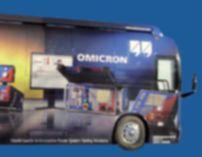
































Megger, the first to bring you Dc insulation testing in 1890 now brings you the latest in Ac insulation with the DeLTA4000 Series, a fully automatic 12-kV insulation power/ dissipation factor test set.
n NEW built-in intelligent temperature correction (patent pending) allows you to estimate the actual temperature dependence on the test object.
n Generates own test signal independent of line frequency enabling a clean, reliable signal and the highest accuracy.
n Lightweight, rugged two-piece design with unit weights of 31 lb and 48 lb.

n Easily transportable and convenient for field use, yet built sturdy and robust.
Faster!


n Quick test times - dynamic noise suppression minimizes measurement time in situations with low interference.
n Advanced signal acquisition and noise suppression circuitry results in 25-50% shorter measurement times.
And More!
n PRIORITY ACCESS provides guaranteed support and other valuable services to ensure that you get the best out of your investment in Megger DELTA Power Factor Test Equipment.
n Accurate and repeatable measurement results with high noise suppression.
n Easy to use with automatic and manual operation.
Want to know more? To learn more about the new Megger DELTA4000 Series contact us today at 1 800-723-2861 or email us for a copy of our new 2011 Power catalog at: sales@megger.com. Megger 4271 Bronze Way Dallas, Texas 75237-1019 USA.

February 27 - March 1, 2012 Omni Fort Worth , Fort Worth, Texas
PowerTest 2012–
Join us February 27-March 1, 2012
Electrical power system experts, technicians, managers, inspectors, contractors, engineers, manufacturers, operators, and industry leaders will ride into town to harness the power that comes from sharing knowledge, networking, and being a part of a community dedicated to promoting safety and reliability.
Our Keynote Speaker, notorious for packing the house
Featuring: Tim Autrey of Practicing Perfection Institute Driven by Passion. Devoted to Perfection. Human Error Reduction and Electrical Maintenance.
Monday -
We’ve rustled up the best presenters in the industry and staged a full day of 45-minute presentations that will expand your thinking and generate new ideas. Choose from 27 detailed technical presentations and participate in the Transformer Symposium.
• Safety Technical Tracks
• Reliability Technical Tracks

Life is not about how fast you run, or how high you climb, but how well you bounce Do it right or get off the horse.
Cowboy Wisdom:
• Equipment Technical Tracks
• Codes and Inspections Technical Tracks
• Rotating Equipment Technical Tracks
• Symposium - Transformers
Day Two:
Tuesday -
Heart of Texas
Step up and be heard. Join the PowerTest 2012 Safety Summit and be a part of the discussion. Up the ante by joining one of three other panel sessions during the morning gathering.
• Safety Summit
• Relays Panel
• Motors and Generators Panel
• Circuit Breakers Panel
In the afternoon you won’t want to miss the main event: PowerTest 2012 Tradeshow
Wednesday and ThursdayTwo days are dedicated to high power learning. Choose from 12 in-depth, four-hour seminars. The first-class lineup covers important industry issues that will broaden your horizon and expand your knowledge, preparing you to get a head-start on the challenges and opportunities ahead.
Sunday Evening – February 26, 2012
Fall in for the Best Little Pub Crawl in Texas – Four hours, four pubs, and endless fun. Be sure to sign up on-line when you register for the conference.
Welcome Reception:
Monday evening from 6:00 till the cows come home.
Put on your best bib and tucker and join the hootenany as we gather at the Dallas Cowboy Stadium. There’ll be a heap of tasty grub, plenty of socializing, dancing, and all around good fun.
Come bend an elbow and toast to NETA’s 40th Birthday during the Welcome Reception!

February 27 - March 1, 2012 Omni Fort Worth Fort Worth, Texas
Register on-line at: www.powertest.org
Or Call: 888-300-NETA (6382)
PowerTest 2012
Registration
Save time by registering on-line! Visit www.powertest.org to view the full conference lineup and submit your registration.
Hotel Reservations:
Omni, Fort Worth Hotel
1.817.535.6664
1300 Houston Street Fort Worth, TX 76102
Reservation Deadline:
January 23, 2012
Group Name: NETA/PowerTest Group Rate: $185.00
Payment:
NETA accepts all major credit cards. Save time and register on-line at www.powertest.org or Call 888-300-NETA (6382)
Join as a Gold Affiliate for $775 and your PowerTest conference registration is included!
Current Affiliates can upgrade to Gold Affiliate status for only $600 to receive a free PowerTest conference registration! Extras!
• NEW! – Tuesday Evening Hospitality – A gang of PowerTest 2012 Sponsors will circle the wagons, each hosting a suite featuring their own brand of hospitality.
• PowerTest 2012 Technical Papers - Registered conference attendees will receive all PowerTest technical presentations on a USB drive on site in their registration bag.
1. Go to www.powertest.org and review the complete PowerTest 2012 on-line brochure.
2. Decide the number of days you will attend the conference.
3. Tuesday attendees select up to two panels. (Cost of panels included in registration fees)
4. Wednesday attendees sign up for one or two seminars. (Cost of seminars are in addition to the registration fees)
5. Thursday attendees sign up for one or two seminars. (Cost of seminars are in addition to the registration fees)
6.Sign up for the Best Little Pub Crawl in Texas. Space is limited, so register early. (Cost of pub crawl is in addition to the registration fees)
7. Sign up for Spouse/Guest Passes (Cost of passes is in addition to the registration. fees)
8. Sign up for PowerTest 2012 conference polo shirt and select size. (Cost of polo shirts are additional to the registration fees)

February 27 - March 1, 2012
 By Tony McGrail – Doble Engineering
By Tony McGrail – Doble Engineering
Excessive temperatures both cold and hot, rain, snow and other ambient conditions can make the evaluation of electical equipment difficult. This issue will examine problems such as power factor/dissipation factor test results of equipment having temperatures
Vicki Warren and Greg Stone, Iris Power, LP
Kyle Springinatic, Magna Electric Corp.
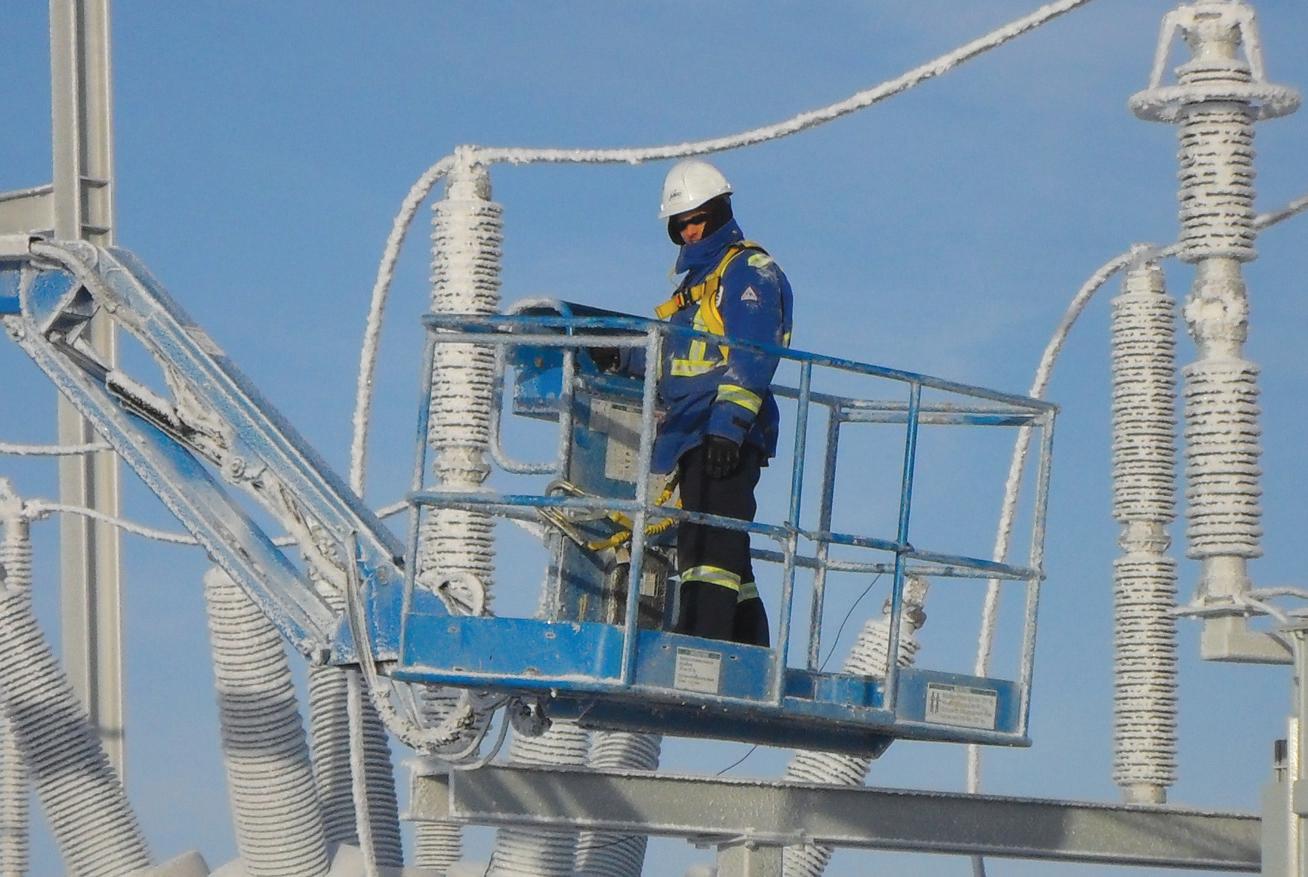
Insulation
From big cit y to small town, east to west, Nor th America to Europe, we are expanding our resources and ser vice center locations to better ser ve you.
Contac t Shermco Industries for safe, reliable testing, repair, professional training, maintenance and analysis of rotating apparatus or elec trical power distribution systems for all market segments, including industrial, commercial, petrochemical, utilities and more.



3050 Old Centre Avenue, Suite 102
Portage, MI 49024
Toll free: 888.300 NETA (6382)
Phone: 269.488.NETA (6382)
Fax : 269.488.6383
neta@netaworld.org
www.netaworld.org
EXECUTIVE DIRECTOR: Jayne Tanz, CMP
NETA Officers
PRESIDENT: Mose Ramieh, Power & Generation Testing, Inc.
FIRST VICE PRESIDENT: David Huffman, Power Systems Testing Co.
SECOND VICE PRESIDENT: Ron Widup, Shermco Industries
SECRETARY: Walt Cleary, Burlington Electrical Testing Co., Inc.
TREASURER: Ken Bassett, Potomac Testing, Inc.
NETA Board of Directors
Ken Bassett (Potomac Testing, Inc.)
Scott Blizard (American Electrical Testing Co., Inc.)
Jim Cialdea (Three-C Electrical Co., Inc.)
Walt Cleary (Burlington Electrical Testing Co., Inc.)
Roderic Hageman (PRIT Service, Inc.)
Kerry Heid (Magna Electric Corporation)
David Huffman (Power Systems Testing)
Alan Peterson (Utility Service Corporation)
Mose Ramieh (Power & Generation Testing, Inc.)
John White (Sigma Six Solutions)
Ron Widup (Shermco Industries)
NETA World Staff
TECHNICAL EDITOR: Roderic L. Hageman
ASSOCIATE EDITOR: Diane W. Hageman
MANAGING EDITOR: Jayne Tanz, CMP
ADVERTISING MANAGER: Jill Howell
DESIGN AND PRODUCTION: Newhall Klein, Inc.
NETA Committee Chairs
CONFERENCE: Ron Widup; MEMBERSHIP: Ken Bassett; PROMOTIONS/MARKETING: Kerry Heid; SAFETY: Lynn Hamrick; TECHNICAL: Alan Peterson; TECHNICAL EXAM: Ron Widup; WORLD ADVISORY: Diane Hageman;
CONTINUING TECHNICAL DEVELOPMENT: David Huffman; TRAINING: Kerry Heid; FINANCE: John White;
NOMINATIONS: Alan Peterson; STRATEGY: Mose Ramieh; AFFILIATE PROGRAM: Jim Cialdea
© Copyright 2011, NETA
NETA World is published quarterly by the InterNational Electrical Testing Association. Opinions, views and conclusions expressed in articles herein are those of the authors and not necessarily those of NETA. Publication herein does not constitute or imply endorsement of any opinion, product, or service by NETA, its directors, officers, members, employees or agents (herein “NETA”).
All technical data in this publication reflects the experience of individuals using specific tools, products, equipment and components under specific conditions and circumstances which may or may not be fully reported and over which NETA has neither exercised nor reserved control. Such data has not been independently tested or otherwise verified by NETA.
NETA MAKES NO ENDORSEMENT, REPRESENTATION OR WARRANTY AS TO ANY OPINION, PRODUCT OR SERVICE REFERENCED OR ADVERTISED IN THIS PUBLICATION. NETA EXPRESSLY DISCLAIMS ANY AND ALL LIABILITY TO ANY CONSUMER, PURCHASER OR ANY OTHER PERSON USING ANY PRODUCT OR SERVICE REFERENCED OR ADVERTISED HEREIN FOR ANY INJURIES OR DAMAGES OF ANY KIND WHATSOEVER, INCLUDING, BUT NOT LIMITED TO ANY CONSEQUENTIAL, PUNITIVE, SPECIAL, INCIDENTAL, DIRECT OR INDIRECT DAMAGES. NETA FURTHER DISCLAIMS ANY AND ALL WARRANTIES, EXPRESS OF IMPLIED, INCLUDING, BUT NOT LIMITED TO, ANY IMPLIED WARRANTY OF FITNESS FOR A PARTICULAR PURPOSE.
ELECTRICAL TESTING SHALL BE PERFORMED ONLY BY TRAINED ELECTRICAL PERSONNEL AND SHALL BE SUPERVISED BY NETA CERTIFIED TECHNICIANS/ LEVEL III OR IV OR BY NICET CERTIFIED TECHNICIANS IN ELECTRICAL TESTING TECHNOLOGY/LEVEL III OR IV. FAILURE TO ADHERE TO ADEQUATE TRAINING, SAFETY REQUIREMENTS, AND APPLICABLE PROCEDURES MAY RESULT IN LOSS OF PRODUCTION, CATASTROPHIC EQUIPMENT FAILURE, SERIOUS INJURY OR DEATH.


As I contemplated what to write in my first message I reviewed the changes that have occurred over the last few years and now look to the future with excitement about what we are doing and the impact it will have, not just on NETA, but the entire electrical industry.
With our new marketing campaign, the emphasis is shifting from NETA being a standards developer and certifier of electrical technicians to the promoting of NETA Accredited Companies (NAC). In the past NETA pushed for inclusion of the ANSI/NETA ATS and MTS to be written into specifications throughout the electrical industry. Our added emphasis, as those of you saw in the presentation at the February member meeting, is now for use of NETA Accredited Companies to perform the testing. The new look of the NETA logo, NETA World and other publications is just the first step in changing how we look in the market place. Many hours and much thought have gone into our approach on how we go to market. Sincere thanks are due the NETA staff and the Marketing and Promotions Committee.
This issue’s emphasis is weather-related testing. By the time you read this,
This issue’s emphasis is weather-related testing. By the time you read this, the hot, humid days of summer will have started to turn into warm days and cool nights. In the southeast and elsewhere this is a prime time for outdoor substation maintenance. However, soon we will be in the throes of winter and, of course, all the problems related to outdoor work and testing complications. We should all become aware of the personnel safety issues and the special problems that come with any weather condition. By reading this issue we should all be better prepared for whatever Mother Nature throws at us.
As you read this issue, if you see an area that has been missed or could use expansion, your input with articles will be appreciated by all our members. With a call to the NETA office you can find out the themes of future issues and submit articles on those subjects. Remember NETA’s best resource is our volunteers.
As President I will do my best to continue the evolution of NETA and work to make it a more valuable asset to all member companies. Thanks to all for your support.
Mose Ramieh NETA President




NETA is pleased to announce a new classification of accredited organization, the NETA Approved Military Organization (NAMO). Because all other accredited organizations are companies, this classification is unique and extends the reach of NETA by providing select United States military organizations with the opportunity to gain recognition as NETA-accredited organizations as well as an avenue through which active military personnel can become NETA Certified Technicians.
The creation of the NAMO classification was born out of the desire to recognize the United States military’s support of the NETA philosophy and ideology that adherence to voluntary standards, continuing education, and certification of technicians is necessary to ensure the highest standards of performance and personal safety of electrical testing technicians.
In conjunction with this announcement, NETA welcomes its first NAMO, the U.S. Army 249th Engineer Battalion (Prime Power) out of Fort Belvoir, Virginia. Chief Warrant Officer Four (CW4) Michael Richards, Senior Power Systems Technician for Prime Power approached NETA in the fall of 2010 about the possibility of obtaining NETA accreditation for the 249th and certification for their individual active members. Along with CW4 Phillip Mowatt and First Sergeant Derek Harvin, CW4 Richards presented his case for Prime Power to an ad hoc collection of NETA board members at PowerTest 2011, describing the activities of the 249th, how their mission is in line with NETA’s, and why a new NETA classification for military organizations would be beneficial to NETA as well as the army and its soldiers.
CW4 Richards’ motivations for seeking accreditation for Prime Power and certification for his soldiers were clear from the outset and based primarily on the fact that the army wants its members to perform to the highest possible standards. Richards believes that the path to excellence lies in standardization of practices, education and certification of individuals, and most importantly, recognition that the structure that supports these individuals in
the field at home and abroad is one that assures the highest level of service. He is strongly backed by his commanding officer, Lieutenant Colonel Matthew Tyler, and by his fellow soldiers who are eager to be recognized for their accomplishments as soldiers of the 249th.
Richards believes that NETA Certified Technicians meet the OSHA requirement that qualified individuals perform all electrical testing and maintenance. This belief is based on the fact that NETA’s certification program follows the structure set forth in the ANSI/ NETA Standard for Certification of Electrical Testing Technicians, which clearly establishes the framework for ensuring that certifying bodies for electrical testing technicians are of the highest caliber. This document clearly defines the minimum requirements for qualification and certification of electrical testing technicians, for training and experience required for each level of certification, and for an independent and impartial certifying body.
Similar to NETA’s historical emphasis on quality at both the company and individual level, CW4 Richards believes that the personal growth of its individual soldiers is as important to the mission of the 249th as the overall achievements of the organization itself. Richards embraces the army’s philosophy that a soldier is better when given personal goals to achieve, especially when those goals include professional development that will serve them throughout their military careers and beyond. NETA Accredited Companies have long sought out soldiers from the 249th because of their experience and because, as Richards states, “Soldiers are team players,” a characteristic appreciated by all. He knows that any company seeking a testing technician will welcome one who comes with NETA certification in hand.
“The path to excellence lies in standardization of practices, education and certification of individuals, and most importantly, recognition that the structure that supports these individuals in the field at home and abroad is one that assures the highest level of service.”
~CW4 Michael Richards~
Members of NETA’s Ad Hoc Committee on NAMO had the honor of attending an event at the U.S. Army Prime Power School at Fort Leonard Wood, Missouri, in June of 2011. Committee members toured the state-of-the-art facility where soldiers entering the 249th begin their careers as Prime Power Production Specialists. The education is rigorous, demanding that these individuals perform at
the highest mental and physical levels. Soldiers must learn how to install, operate, and maintain every piece of equipment within the medium-voltage power systems they deploy. They are also required to learn the electrical theory that applies to their operations so that technicians who encounter foreign or older pieces of equipment are able to effectively utilize those assets to complete their missions. This rich history of the army engineer is chronicled in the U.S. Army Engineer Museum, one of the three museums housed at Fort Leonard Wood.
As the group toured the exhibits, CW4 Richards described how he always impresses upon each soldier the importance of history and tradition. He poses the question “If you don’t know where you came from and how you got where you are today, how can you be sure you are heading in the right direction?” Richards is incredibly proud to bear the standard of the 249th and of his predecessors who paved the way for the soldiers who serve today. As he made his way among shadowy displays from the American Revolution, the War of 1812, the Civil War, the Korea War, World War I, World War II, the Vietnam War, and the Cold War, he wondered aloud what it might have been like to have been at those conflicts. He paused near the exit, before a large color photograph of a group of soldiers heaving cables up from a bombed-out bridge in Baghdad, Iraq. “That’s us,” he stated quietly, almost to himself, the weight of his words heavy with a sense of pride.
Alan Peterson, President of NETA Accredited Company Utility Service Corporation and NETA’s Technical Chair, states, “NETA is extremely gratified to receive recognition from the United States military for our certification program. Those of us that are involved with this line of work on the civilian side have a vast amount of
respect for military men and women who serve in the same roles that we do.” Mr. Peterson continues, “Throughout the process of developing this new program, the 249th was adamant that it was an association with NETA that was as important as the seal of certification itself. That speaks volumes for NETA and the quality of the individuals who hold NETA Certification.”
This new relationship between NETA and the military will be beneficial to those directly involved in the program and will touch lives around the globe, both military and civilian, by improving safety, reliability, and power quality. With the addition of the 249th as the first of what we hope will be a number of military organizations in the future, NETA strives to continue its mission of Setting the Standard.
“Throughout the process of developing this new program, the 249th was adamant that it was an association with NETA that was as important as the seal of certification itself. That speaks volumes for NETA and the quality of the individuals who hold NETA Certification.”
~Alan Peterson~

•
•
•
•
•


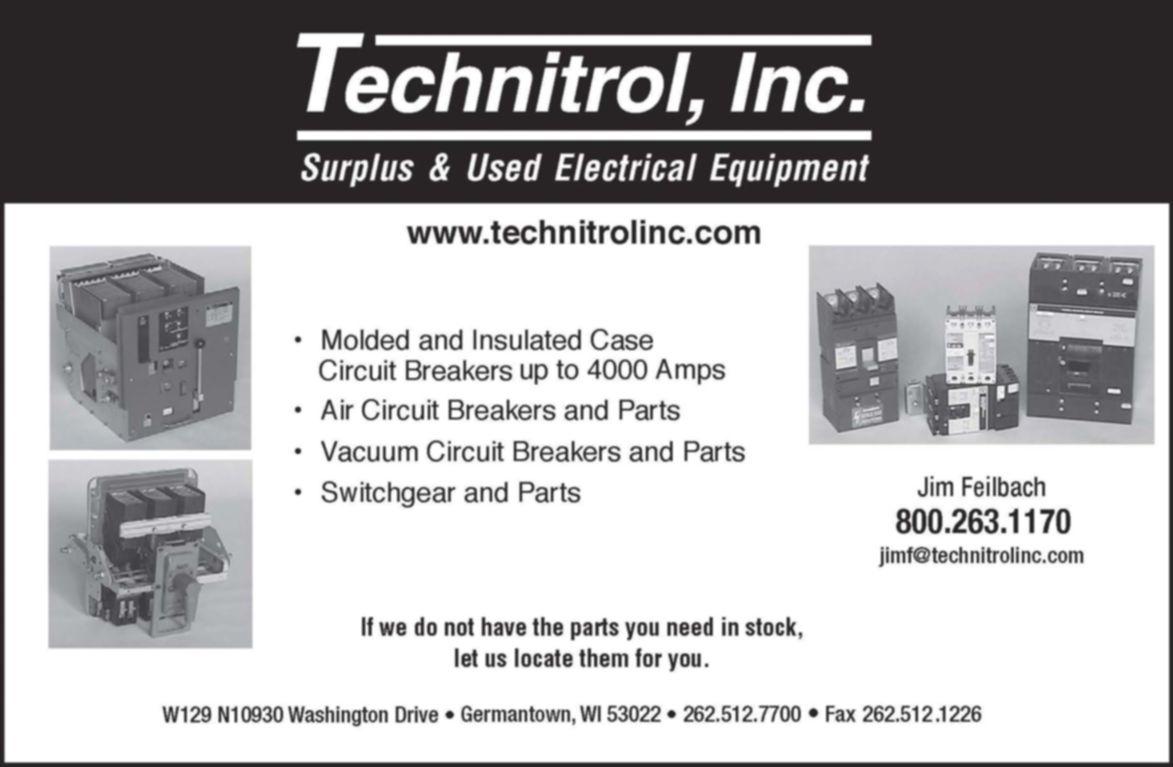

The words “technical support” may conjure images of waiting on hold for what seems like days, hoping the technician on the other end offers something other than, “turn it off, wait thirty seconds, and turn it back on.” At NETA, this term has a much more positive connotation. Thankfully, NETA volunteers make themselves available for hundreds of hours every year ensuring that NETA’s technical community receives the support it deserves. Two of these committees are the Exam Committee and the Standards Review Council.
The NETA Exam Committee has invested a large amount of time and energy in the review, revision, and enhancement of the NETA Certification Exam over the past year and a half. Under the direction of the NETA Standards Review Council, the Exam Committee was charged with stepping-up the routine review of questions to a complete review of all questions at Levels II, III, and IV. The review examined each question for technical relevance, psychometric structure, technical references, and placement within the exam to assure that each specific competency is given equal difficulty and weight within the examination.
This rigorous attention to detail and the broad scope of material covered is what sets the NETA Certification Exam apart and is why NETA Certification is sought by technicians, employers, and end users alike. The goal of this review is not to make the exam more difficult, but to ensure that the same level of quality technician exists today as has since the inception of the certification program years ago as outlined by the ANSI/NETA Standard for Certification of Electrical Testing Technicians, a document whose scope encompasses not only the competencies of individual technicians, but also contains requirements for bodies offering electrical testing-specific certification. Currently, NETA is one of two bodies that offer certification that meets the ANSI/NETA ETT requirements, with the Electrical Testing Technician Certification Institute being the other.
During the 2011 April Exam Committee meeting, more progress was made with the review of the exam bank and new question generation. The committee plans to reconvene in November of 2011 to continue their work.
NETA was founded on technical accuracy and excellence of service. NETA looks to the NETA Standards Review Council to assure that each piece of information published and distributed by NETA is as technically accurate as possible. The Standards Review Council, or SRC, is a body of eight individuals appointed by the Technical Chair. These individuals are proven leaders when
it comes to technical knowledge as well as people who understand the history of the testing industry, leveraging that knowledge with each project.
Meeting twice a year and keeping in touch via email and conference calls allows members of the SRC to manage the technical business of the association. They are responsible for overseeing and maintaining the three ANSI/NETA Standards, directing and assisting the Exam Committee, overseeing the outside technical representation to other industry associations like IEEE, ICC, and NFPA, balloting on industry standards on behalf of NETA, and providing technical support for users of the ANSI/NETA Standards whether they be NETA Accredited Companies or members of the industry at large.
These volunteers met most recently in Dallas, Texas, this past May to continue the review of the ANSI/NETA Standard for Acceptance Testing Specifications for Electrical Power Equipment and Systems, a revised edition that will be published in 2013. They also discussed other technical items such as direction for the NETA Safety Committee, technical inquiries, and Article 230.95(C) of the National Electrical Code. So, if you ever wondered who answers all of your technical questions when you call or email the NETA office or where the ANSI/NETA standards come from, now you know!
the test equipment answer




■ Secondary Injection Test Sets
ABB
Cutler Hammer
Eaton

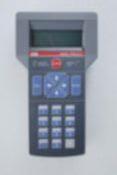









GE
Merlin Gerin

Satin American
Siemens
SureTrip
Utility Relay
Westinghouse
■ High Current Test Sets from 500A to 60,000A
■ Low Resistance Ohmmeters and Insulation
Resistance Analyzers
888.902.6111
972.317.0479
info@intellirentco.com
www.intellirentco.com



❏ Over 1000 different kits
❏ Microcontroller based, true RMS and 16-character display
❏ All functions included: LT, ST, Instantaneous, GF, Phase Unbalance, QT-GF and QT-Inst with off setting for all (except LT & QT-Inst)
❏ Intuitive programming and easy retrieval of last trip data
❏ 3 Different types of actuators available
❏ Modbus communications available
❏ Quick-Trip™ for arc flash reduction during maintenance
❏ UL and CE labels

❏ Over 95 different kits
❏ Microcontroller based with 16-character display
❏ Provided with Hall Effect transducers or optionally accepts a 50mV or 100mV shunt input
❏ All functions included: LT, ST, Instantaneous, GF, Reverse Current, QT-GF and QT-Inst with off setting for all (except LT & QT-Inst)
❏ Modbus communications available
❏ Now available with Quick-Trip for arc flash reduction during maintenance

❏ Reduces Arc Flash Hazard during maintenance
❏ The QT-Instantaneous and QT-GF settings are fully adjustable
❏ Easy to install
❏ AC-PRO trip units are Quick-Trip ready and only require the addition of a Quick-Trip Display and a lockable QT ON/OFF selector switch
❏ ZERO-Hertz trip units are now available with Quick-Trip and only require the addition of a lockable QT ON/OFF selector switch with integral indicating light
❏ Provides arc flash reduction during maintenance per 2011 NEC Article 240.87

❏ Plug-in direct replacement for Merlin Gerin & Square D Masterpact MP, IEC or UL rated breakers
❏ User programmed to replace the STR-18M, 28D, 38S or 58U trip units
❏ Same protective functions, settings and time-current-curves as the original STR trip unit
❏ Information and alarm functions are standard
❏ No physical rating plug required
❏ Easy to read OLED display in low or high ambient light
❏ A security code protects against unauthorized changes to settings
❏ Trip events are time and date stamped
❏ USB port and secondary injection test port
❏ Quick-Trip for arc flash reduction is built in, nothing additional is required


Founded in 1972, NETA has seen nearly forty years of activity in service to the electrical testing industry. This organization remains firmly rooted in the established traditions of quality and excellence of service that got things started so many years ago. The number of NETA Accredited Companies and Affiliates has climbed steadily over the years, and NETA’s family tree is still growing strong.





NETA invites you to join in celebrating the 40th Birthday of this great organization. As preparations begin for the 40th Birthday Celebration at PowerTest 2012, we welcome the submittal of your anecdotes, photographs, and memories of how being involved with NETA has made a positive impact on your career, your company, or your life. During 2012, a collection of subscriber submittals will be published in each quarterly issue, starting this winter.
















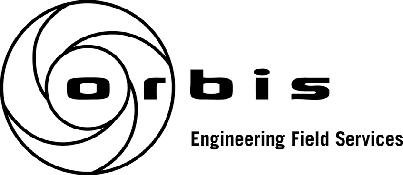






 BY TONY MCGRAIL, Doble Engineering
BY TONY MCGRAIL, Doble Engineering

Apparatus testing in poor and/or extreme weather conditions presents several challenges –access to equipment, safety, and setting up the equipment under test so as to provide useful results. is paper looks at some individual case studies which demonstrate the precautions needed and the “Do’s and Don’ts” of such testing.



In general, any outdoor activity in bad weather constitutes a risk and should not be performed without a thorough risk assessment and appropriate authorization. A severe risk is posed by lightning. Doble Engineering does not recommend testing in any situation where lightning is a present or an imminent threat.
Before we start testing, are there reasons to suspect the equipment may be in poor condition? If not – can the testing be deferred? If there are, then the motivation for testing is based on suspicions in regard to the equipment condition, and we must use that knowledge to guide us toward the tests to be performed and subsequent interpretation of test results.

Poor weather will affect results through temperature and through contamination of the test object with water, ice, snow, etc. Lower temperatures will affect the inductance, capacitance, and resistance directly, but will also lead to water crystallization in dielectric material. The ice crystals will affect results and may lead to erroneous conclusions.
In situations where the equipment, say a power transformer, has recently been switched out of service, it is likely still warm; therefore, testing should be planned to take place before it has significantly cooled down. As long as appropriate safety measures are taken, valid test results should be obtained.
Different tests will be affected by poor weather in different ways.
Power Factor – Surface contamination and low temperatures may affect both the current and watts losses, giving either overly pessimistic or overly optimistic power-factor results. Care should be taken to include test guards and in interpretation of results in low temperatures.

Capacitance and DC Resistance – These tests should not be significantly affected by temperature or surface contamination, but this will depend on the level of contamination and the temperature change. DC resistance should decrease with lower temperatures – but the effect may be masked through connection and contact resistances and appropriate correction curves should be used.
Sweep Frequency Response Analysis – This test relies on inductance-capacitance combinations to produce resonances to a low-voltage ac signal. Impulse tests used to produce a frequency response may be very susceptible to temperature and surface contamination issues while sweep systems are relatively immune, unless the surface contamination is extreme.
Leakage Reactance – This is a high current test which may be significantly affected by surface contamination but much less affected by temperature variations.

Three high voltage General Electric type U bushings were tested in a large, oil-filled, power transformer during a winter storm that had snow, ice, and freezing rain as part of the weather conditions. The transformer was tested with the oil temperature well below freezing. The three bushing temperatures were also below freezing when tested.

TABLE 1:
Power Factors Measured in Freezing Conditions

The test results for the transformer’s power-factor overall winding tests were not acceptable for service, with power-factor values greater than 1.0 percent for low-voltage and high-voltage windings (CL & CH). Bushing power-factor values, the C1 test as given in Table 1, were also higher than acceptable for in-service bushings of this type.


TABLE 2:
Power Factors Measured in Normal Conditions
Inverted C1 test values for the bushings were comparable to the standard C1 test values which indicated the high C1 power factor-values were attributed to the bushing’s internal main core insulation and not being influenced negatively by exterior conditions. Such testing is very useful to further determine the impact of surface contaminants on results.
The transformer was warmed up and all bushing surfaces were dried. The power-factor tests were performed a second time and the transformer overall power factor improved significantly. The bushing C1 test values remained at the higher than acceptable test value that was obtained in the previous test. The bushings were tented, and heat was applied to warm the bushings above freezing. After several hours of heating, the bushings were again tested and all of the C1 and inverted C1 power-factor values were within 0.1 percent of the nameplate value, as shown in Table 2.


TABLE 3:
Test Results in High Humidity, Damp Conditions
The results above freezing are significantly improved and demonstrate the susceptibility of such test results to temperature. Interpretation of such results requires an understanding of the impact of surface contaminants and of temperature on the test process and the results themselves.
Bushing temperature studies performed by Doble have shown that GE, type U bushing C1 powerfactor value is influenced by temperature. When this type of bushing is tested below freezing, the power factor values increase and level off to an elevated value above the recorded nameplate value. This change in power factor with temperature was seen in both a known good bushing and a known defective bushing.
Doble Engineering provides temperature correction tables which begin at 0°C.
In this case, a power transformer was tested in high humidity, over 94 percent, with onshore ocean breezes simultaneously bringing aerosol moisture to the unit. Overall test results are given in Table 3.


Both high-voltage and low-voltage winding power factors (CH and CL) are higher than normal, while the interwinding power factor (CHL) is acceptable. This type of variation is an indication of possible surface contamination effects as the interwinding insulation test does not include ground path losses as part of the measurement.
The same transformer was tested later on the same day. Winds were now offshore, bushings were cleaned and dried, and the sun had warmed the porcelain which helped to remove any remnant moisture accumulated before retesting the bushings. Test results are given in Table 4.


Under the same test regime, the mA results have not changed greatly, but the watts loss results have reduced substantially, reflecting the surface contamination impact. CHL has not changed significantly, but the values of CH and CHL have come within expected ranges for a new transformer and are acceptable.
The drying of bushings has produced acceptable CH and CL values, as expected.
In this case a 230/72 kV 50/67/83 MVA power transformer had come out of service after a lowvoltage bushing failure. The bushing was replaced and the transformer cleaned internally. A range of tests was performed to ensure the integrity of the transformer had not been compromised prior to reenergization. Leakage reactance results had not been taken for the unit since factory tests, and sweep frequency results were taken for the first time. The transformer is pictured in Figure 1.


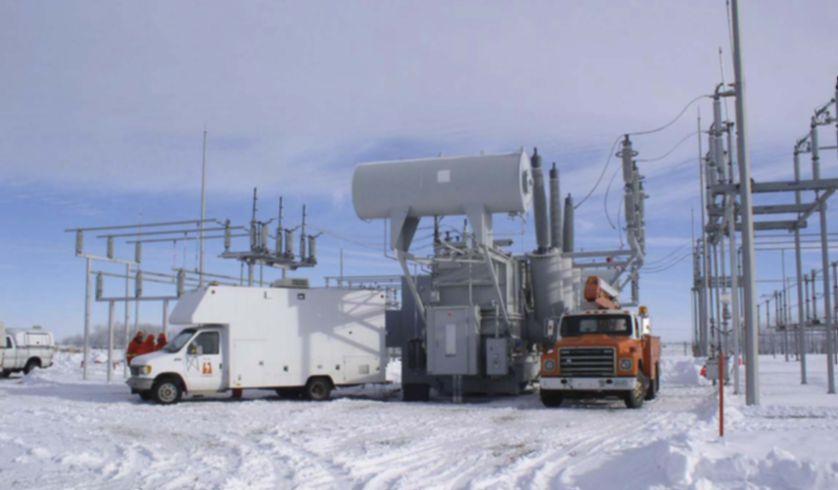


With appropriate precautions, the following tests were performed:
• Bushing C1 and C2 and power-factor measurements
• Winding power-factor and capacitance
• HV single-phase excitation
• DC winding resistance
• Turns ratio
• Sweep frequency response analysis
• Leakage reactance
Everything was acceptable except for anomalous leakage reactance measurements which indicated a variation that was not seen in the sweep frequency response analysis measurements. Leakage reactance responses which included the tertiary winding showed an anomaly, indicating variation on one phase.

By ensuring that the test object had been suitably cleaned and prepared, there was sufficient support for the integrity of the measurements for a cause of anomaly to be found within the transformer. This was eventually traced to two CT shorting blocks which had both, in fact, not been shorted and which thus showed as extra burden on the leakage reactance results.
In this case good test practices allowed for reliable results and subsequent analysis which identified the cause of the anomaly within the transformer.



When power-factor testing in subzero conditions, water or moisture in the apparatus could condense and freeze. This will alter the overall dielectric condition, affecting the test results, typically reducing the watts loss, and subsequently yielding lower power-factor values. This may give the false impression of an improvement in the overall condition of the insulation system! Care should be taken when testing in freezing conditions to make sure the context and interpretation of results are clear and understood.
Can power-factor tests be performed on apparatus which is at a temperature above freezing but when the ambient is below freezing? Yes! Again, care must be taken and there are correction curves available to reference test results to standard temperatures.

There are clear risks when testing in rain or snow that are associated with safety. They include electrocution and slip and trip hazards. The variation in surface leakage impedances will mean that power-factor and related measurements will be compromised as watts loss will rise as the ground path capacity increases. High humidity may have the same effect. However, sweep frequency response analysis measurements and dc resistance measurements should be relatively unaffected and may be performed unless the surface contamination yields a short circuit across the surface. Addition of a collar to the testing regime may yield further information about the state of the insulation and thus aid in diagnoses.
It is important when testing in poor or unfavorable weather to understand both the motivation for test and the likely impact of the adverse weather on actual test results. In terms of motivation, we must consider what we expect to find – are there reasons to suspect the integrity of the apparatus under test? In terms of interpretation of results, we must consider the individual test made and the likely impact of adverse conditions on those results and thus the interpretation of those results.

The author would like to thank his colleagues at Doble Engineering, including Long Pong, Manuel Salmeron and Marshall Turley, for their thoughtful comments and contributions.d.
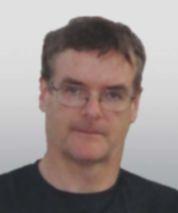
Tony McGrail is presently the Doble Engineering Solutions Manager for On-Line diagnostics, providing condition, criticality and risk analysis for utility companies. Previously Tony has spent over 10 years with National Grid in the UK and the US; he has been both a substation equipment specialist, with a focus on power transformers, circuit breakers and integrated condition monitoring, and has also taken on the role of substation asset manager and distribution asset manager, identifying risks and opportunities for investment in an ageing infrastructure. Tony is a Fellow of the IET, a member of the IEEE and the IAM, is currently chair of the Doble Client Committee on Asset and Maintenance Management and a contributor to SFRA and other standards at IEEE, IEC and CIGRE. His initial degree was in Physics, supplemented by an MS and a PhD in EE and an MBA. Tony is an Adjunct Professor at Worcester Polytechnic Institute, MA, leading courses in power systems analysis.




•
•
•
•

•
•
•
•
•
•




With substations regularly overloaded and equipment often near the end of its life, electric grid operators are challenged to improve overall system reliability. Our mission is to provide our clients with actionable information that can be used to better manage the overall life cycle of their critical electrical assets in a manner that is convenient, easy to understand, and assists in critical decision-making.
WEIDMANN DIAGNOSTIC SOLUTIONS INC. provides the vital knowledge you need to help you lower risk and improve your electrical system’s reliability. We provide actionable information through our extensive range of diagnostic products and services.
WEIDMANN DIAGNOSTIC SOLUTIONS INC. is a leader in developing condition assessment methods for transformers and all oil-lled electrical equipment, such as OCB’s, LTC’s, regulators, rectiers, and network units.
• Analytical Testing Services
• Specialized Diagnostic Programs
• Engineering Diagnostic Evaluations

• Engineering Consulting Services
• AIM 2.0 Customer Information Portal
• Education Services
• InsuLogix® Monitoring Products
WEIDMANN DIAGNOSTIC SOLUTIONS INC.
One Gordon Mills Way, PO Box 799, St. Johnsbury, VT 05819-0799, USA
T +800 811 2284, +916 455 2284, F +916 455 0191, www.weidmann-electrical.com
A Member of the WICOR Group
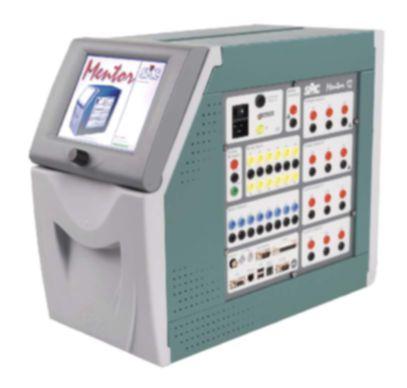

While other manufacturers develop new sets, the Mentor will continue to EVOLVE meaning that you will always have the state of the art testing abilities.
FIELD UPGRADABLE
Need more power or ready to add GPS? No Problem! The Mentor is ready to go in minutes with Plug-n- Play.
If your Mentor needs attention, no need to send it anywhere, SMC will handle it on the spot. Noram-SMC Inc. Tulsa, OK 74155 Contact us today! Call 918-622-5725
Surveys have shown that rotor and stator winding failure account for about half of motor failures in motors rated 2300 volts and above. Thus to improve motor reliability and move to predictive maintenance for motors, tools are needed to assess the condition of the windings. There are several old and new test methods that have gained popularity with ac induction motor maintenance specialists. Stator winding tests are usually performed to detect problems within the electrical insulation. Rotor winding tests are todetect broken rotor bars and air-gap eccentricity.
These include:
• Low- and high-voltage insulation resistance
• Capacitance and capacitive impedance
• Inductance and inductive impedance
• Surge testing
• Partial discharge testing
• Current-signature analysis
The insulation-resistance, surge, partial-discharge, and currentsignature tests are examined and evaluated for effectiveness, for which windings or types of machines the test is effective, limitations, ease of performance, ease of interpretation, and the impact of the ambient environment on the test results.
Typically, large squirrel cage induction motors (greater than a few hundred horsepower) last 20 years or more during normal operation in utility and industrial applications before either the rotor or stator windings need to be replaced. However, if the motor is overloaded or subjected to a polluted
environment, or the motor is not well made, failure may occur in just a few years due to premature aging. A number of tests and monitors are available that can detect aging problems that may lead to failure, quite often months or even years before failure occurs. These tests, when properly done, can all but eliminate unexpected in-service winding failures and thus, increase process reliability.
Tests can be separated into two main classes:
• Off-line tests
o Performed during a shutdown (insulation-resistance test, motor circuit analysis, surge test, high potential test, growler test, visual inspection)
o Tests produce abnormal operating stresses and are highly influenced by ambient conditions
• On-line monitoring
o Performed during normal operation of the motor (current-signature analysis and partial-discharge monitoring)
o Identify motors that are most in need of off-line tests or repairs
o Tests performed under normal operating conditions with minimal influence from ambient conditions
Four of the most useful tests to assess rotor and stator winding conditions for motors rated 2300 volts and above are described in this paper: insulation resistance, partial discharge, surge, and current-signature analysis tests.
The megohmmeter test is the most widely used diagnostic instrument for motor stator and rotor windings. This test successfully locates pollution and contamination problems in windings. In form-wound stators using thermoplastic insulation systems (usually made before 1970), the tests can also detect thermal deterioration as long as the awareness of hygroscopic systems is considered. Unfortunately, there is no evidence that thermal deterioration or problems such as loose coils in the slot can be found in modern windings.
Insulation resistance (IR) and polarization index (PI) tests have been in use for more than 70 years. Both tests are performed with the same instrument, and are usually done at the same time. IEEE 43-2000 describes the test method and basic interpretation. In the test, a relatively high dc voltage is applied between the winding copper and the stator or rotor core (usually via the machine frame). The IR/PI test is now recommended to be performed with voltages that are higher than those suggested in the past, because tests at higher voltages are more likely to find major defects such as cuts through the insulation in the endwindings.
The IR test measures the resistance of the electrical insulation between the copper conductors and the core of the stator or the rotor. Ideally this resistance is infinite, since the purpose of the insulation is to block current flow between the copper and the core. In practice, the IR is not infinitely high. Usually, the lower the insulation resistance, the more likely it is that there is a problem with the insulation.
PI is a variation of the IR test. PI is the ratio of the IR measured after voltage has been applied for ten minutes (R10) to the IR measured after one minute (R1), i.e.: PI = R10/R1 (Other ratios are described in IEEE 43-2000.)

A low PI indicates that a winding may be contaminated with oil, dirt, insects, etc., or soaked with water. The current flowing in the circuit is then measured.
Measuring R1 has proved to be unreliable, since it is not readily trended over time. The reason is that IR is strongly dependant on temperature, and results will swing wildly due to humidity effects, especially in the presence of conductive contamination. Although some temperature correction graphs and formulae are in the IEEE 43, they are unreliable for extrapolation by more than 10°C or so, and are never useful when trending test results taken when ambient conditions are both above and below the dew point.
The PI test was developed to make interpretation less sensitive to temperature. Experience shows that if the PI is about one for stator windings, then the leakage current over the winding is large enough that electrical tracking will occur, which is a condition that is also highly variable with ambient humidity. A good reading or a bad reading depends on the nature of the insulation system and the winding being tested. Until 2000, the minimum R1 and the acceptable range for PI was essentially the same for all types of stator winding
insulation. However, it has been recognized that the modern insulation materials in random-wound and form-wound stators have essentially no conduction current (as long as there are no cracks or pinholes). Thus a clean, dry, form-wound stator winding should have an R1 > 100 megohms. Randomwound stator windings and rotor windings should have R1 > 5 megohms at 40°C, which is R1 > 20 megohms at 20°C. The PI should be greater than 2 for stator windings and greater than 1 for rotor windings. If R1 is greater than about 5000 megohms, then PI seems to have little meaning.
Partial discharges (PD) are small electrical sparks which occur in stator windings rated 3.3 kV or higher. PD is nonexistent or negligible in well-made stator windings that are in good condition. However, if the stator winding insulation system was poorly made or the winding has deteriorated due to overheating, coil movement, or contamination, then PD will occur. As described in IEEE 1434-2000, PD is a symptom of several stator winding problems:
• Thermal deterioration
• Load cycling deterioration
• Loose windings
• Semiconductor or grading coating problems
• Contaminated winding
• Endwinding discharges
Each PD produces a current pulse that has high frequency components to the hundreds of megahertz. Any device sensitive to high frequencies can detect the PD pulse currents. In a PD test on complete windings, the most common means of detecting the PD currents is to use a high-voltage capacitor connected to the stator terminal. Typical capacitances are 80 pF to 1000 pF. The capacitor has high impedance to the power frequency ac current in the stator, while having low impedance to the high frequency PD pulse currents. PD pulse current that passes through the capacitor will create a voltage pulse across the resistor which can be displayed on an oscilloscope, frequency spectrum analyzer, or other display device. The lower band of the detector is the frequency range of the high-voltage detection apacitor in combination with the resistive or inductive-capacitive network load. Modern detectors can be sensitive up to the several hundred megahertz range. In addition, high frequency current transformers are sometimes installed on surge capacitor grounds to detect the PD.
The PD test is a comparison test and can be performed either using on-line or off-line methods. Due to the likelihood of noise interference, on-line monitoring requires sophisticated noise suppression or an expert to perform the analysis. One can determine which phase has the highest peak PD magnitude, Qm, and thus which phase has the greatest deterioration. One can also compare several similar machines to see which has the highest PD. Finally, one can compare the PD from the same stator over time, i.e., trend the data. In general, if the PD doubles every six months, then the rate of deterioration is increasing.
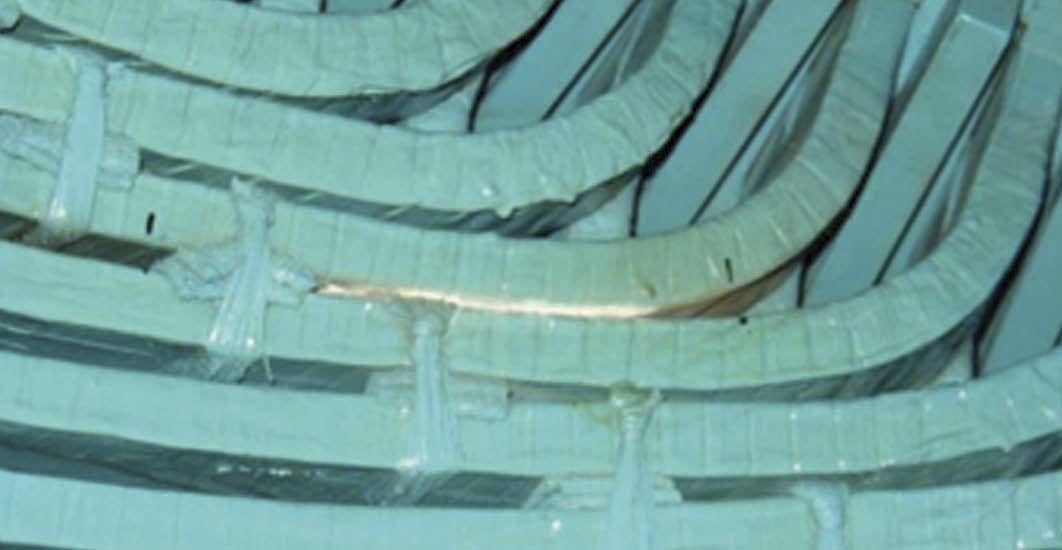
Figure 2. Inadequate Spacing can Lead to Partial Discharge

For off-line results it is important that the ambient temperature, ambient humidity, and winding temperature be included in the evaluation as these will highly influence the PD values. Though these are recorded for on-line results, their impact is less of an issue unless the source of the activity is outside of the motor housing at the terminals.
If the turn insulation fails in a random-wound or form-wound stator winding, the motor will likely fail in a few minutes. Thus the turn insulation is critical to the life of a motor. Low-voltage tests on form-wound stators, such as inductance or inductive impedance tests, can detect if the turn insulation is already shorted, but not if it is weakened. Only the surge voltage test is able to directly find stator windings with weakened turn insulation. The surge test applys a high-voltage surge between the turns. This test is an overvoltage test for the turn insulation, and may fail the insulation, requiring bypassing of the failed coil, replacement, or rewind. The test is valid for any randomwound or multiturn, form-wound stator. The test method for form-wound stators is described in IEEE 522-2002.
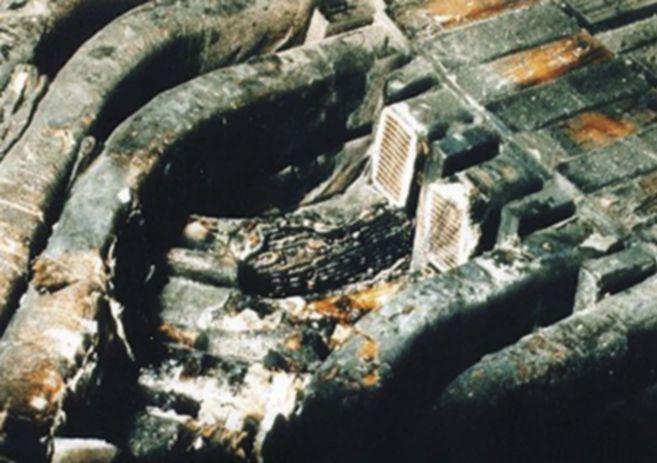
The surge test duplicates the voltage surge created by switching on the motor. The surge test is a destructive go/no-go test. If the turn insulation fails, the assumption is that the stator would have failed in service due to motor switch-on, PWM inverter voltage surges, or transients caused by power system faults. If the winding does not puncture, then the assumption is that the turn insulation will survive any likely surge occurring in service over the next few years.
Modern surge testers use a digitizer to capture the surge voltage waveform on a phase, as the voltage is gradually raised. Digital analysis then provides an alarm when the waveform changes at a high voltage due to a turn fault. The test voltages are described in IEEE 522-2002. Since this is a test of the internal insulation, ambient weather conditions have minimal impact, but as winding temperature alters winding resistance, winding temperature will always have an effect.


Current signature analysis (CSA) monitoring has revolutionized the detection of broken rotor bars and cracked short-circuit rings in squirrel cage induction motor rotors Error! Reference source not found.. Some of the problems CSA finds are: • cracked rotor bars • cast rotor bars with large internal voids • broken bar-to-short circuit ring connections • cracked short-circuit rings, • static and dynamic rotor eccentricity
In simple terms, CSA theory is that the current flowing in the stator winding not only depends on the power supply and the impedance of the stator winding, but it also includes current induced in the stator winding by the magnetic field from the rotor. That is, the stator winding acts as a probe or transducer for problems in the rotor. The key issue is separating normal currents that flow through the stator to drive the rotor from the unusual currents that the rotor induces back into the stator when there is a problem. This separation is accomplished by using high-resolution frequency spectrum analyzers to measure current components at frequencies other than the power frequency and its harmonics.
The rotor currents in a cage winding produce an effective three-phase magnetic field which has the same number of poles as the stator field but is rotating at slip frequency with respect to the rotating rotor. If rotor current asymmetry occurs, there will be a resultant backward (i.e. slower) rotating field at slip frequency with respect to the forward rotating rotor. The asymmetry results if one or more of the rotor bars is broken preventing current from flowing through the affected slots.
To perform a CSA, the stator current in one phase is analyzed with a spectrum analyzer or customized digital signal-processing unit while the motor is operating under normal conditions. If there are no broken rotor bars, then there will be no frequency
sidebands, fsb. If sidebands are present, then broken rotor bars are likely. Typically, the sidebands are only one Hz or so away from the very large power frequency component, and the sideband currents are typically 100 to 1000 times smaller than the main power frequency currents. The greater the sideband current is (that is, the larger the fraction of the power frequency current), the more severe the rotor deterioration. As with most other monitors, it is best to trend the sideband magnitude over the years. If the sideband increases over time, it is reasonable to expect that a greater number of bars have broken in more locations.

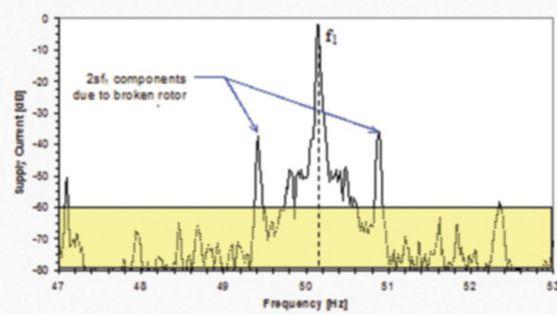
Early CSA monitoring was prone to false indications (that is, indicating that a rotor had problems when it had none) and less frequently, missing defective rotor windings. Thus early users of this test had low confidence in the results. However, improvements in theory, soft ware, and spectrum analyzer/digital signal processor resolution have made detection of rotor bar problems much more reliable. Ambient weather conditions have little impact on these results, as the apparatus is operating in normal conditions within the motor housing.
Powerful tools are available that detect most (but not all) of the rotor and stator winding problems in motors rated 2300 volts and above. Two of these tests – PD and CSA –can be performed during normal operation of the motor, which reduces the impact of ambient weather conditions. This enables the motors most likely to fail to be removed from service before failure, where they can be subjected to further off-line testing, visual examination, and maintenance when required. Thus, these on-line tests are very useful for implementing predictive maintenance and avoiding in-service failures and unnecessary shutdowns. All off-line tests should be evaluated with consideration of the impact of ambient conditions, specifically temperature and humidity, on the test results.

Ms. Vicki Warren, Senior Product Engineer, Iris Power LP. Ms. Warren is an electrical engineer with extensive experience in testing and maintenance of motor and generator windings. Prior to joining Iris in 1996, she worked for the U.S. Army Corps of Engineers for 13 years. While with the Corps she was responsible for the testing and maintenance of hydrogenerator windings, switchgear, transformers, protection and control devices, development of SCADA software, and the installation of local area networks. At Iris, Ms. Warren has been involved in using partial discharge testing to evaluate the condition of insulation systems used in medium- and high-voltage rotating machines, switchgear, and transformers. Additionally, Ms. Warren has worked extensively in the development and design of new products used for condition monitoring of insulation systems, both periodical and continual. Ms. Warren also actively participated in the development of multiple IEEE standards and guides, and was Chair of the IEEE 43-2000 Working Group.

Dr. Greg Stone was one of the developers of online partial discharge test methods to evaluate the condition of the high voltage insulation in stator windings that are used on most large generators and many large motors throughout the world. From 1975 to 1990 he was a dielectrics engineer with Ontario Hydro’s Research Division. Since 1990, Dr. Stone has been employed at Iris Power in Toronto, Canada. He is a past-President of the IEEE Dielectrics and Electrical Insulation Society and continues to be active on many IEEE standards working groups. He is also active on several IEC rotating machine standards working groups. He has published two books and many papers concerned with rotating machine insulation. Greg Stone has a PhD in Electrical Engineering from the University of Waterloo (Canada), is a Fellow of the IEEE, a Fellow of the Engineering Institute of Canada and a registered Professional Engineer in Ontario, Canada.

Whenyoubuyapieceofequipment,yougetapieceofequipment.
WhenyourentfromProtec,youexpandyourteamand yourcapabilities.Youmaytakeitforgranted,butrentingfrom Protecdeliversmorethanequipmentinabox.
> The best application support available 24/7.
> Multiple locations put the right equipment where you need it.
> We can ship today so you have instant access to vital equipment.
> Our minimum rental period is just one day.
You'vegotbetterplacestoputyourworkingcapital. Rentwhatyouneed,whenyouneedit.Inthebestpossiblecondition.
www.protecequip.com
For more money saving ideas visit blog.protecequip.com







 BY JIM WHITE Shermco Industries
BY JIM WHITE Shermco Industries


With summer fast approaching (at least in Texas) I thought it might be a good time to do a little weather trivia and IQ. Answers are from the National Weather Service.

Jim White is the Training Director for Shermco Industries and the principal Shermco representative on the NFPA 70B committee. Jim is the alternate NETA representative on the NFPA 70E committee and serves as the NETA representative on the IEEE/ NFPA Arc-Flash Hazard Work Group (RTPC) Ad Hoc Committee. He served as the Chairman of the 2008 IEEE Electrical Safety Workshop. Jim is a NETA Certified Level IV Electrical Testing Technician and a member of the NETA Safety Committee.
1. Which state had the most heat-related fatalities in 2010?
a. Texas
b. Nevada
c. Pennsylvania
d. Florida
2. Which state had the most cold weatherrelated fatalities?
a. Wisconsin
b. South Carolina
c. Florida
d. Illinois
3. Which state had the most weather-related fatalities in 2010?
a. Tennessee
b. Arkansas
c. Illinois
d. Pennsylvania
4. What are the signs of heatstroke?
a.____________________
b. ____________________
c. ____________________
d. ____________________
5. What steps should you take to treat heatstroke?
a. _____________________
b. _____________________
c. _____________________
d. _____________________
See answers on page 107.
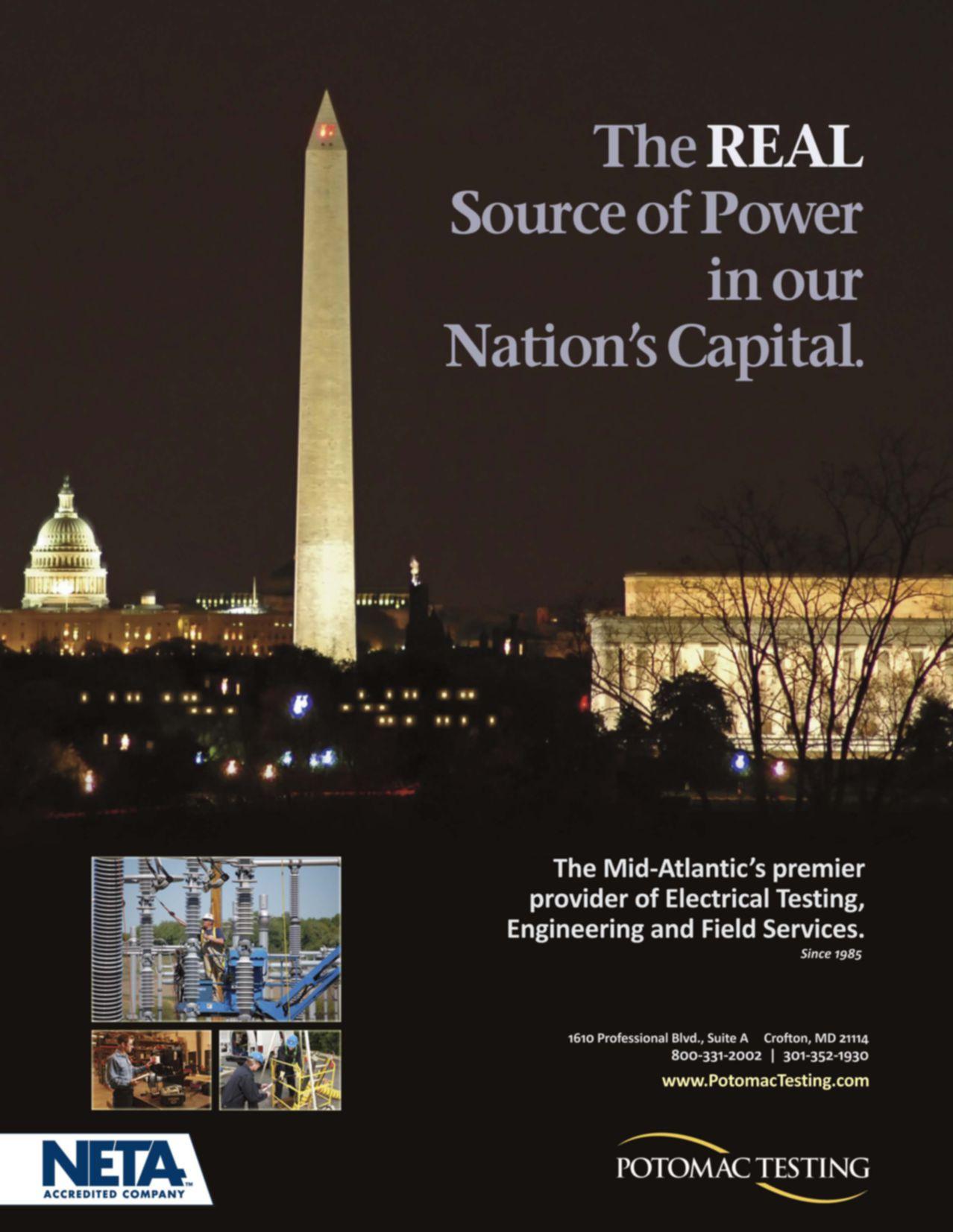

You can get older equipment to take advantage of new technology, with the EntelliGuard® TU trip unit. It improves arc flash protection, reducing the HRC level to 1 or 2, depending on available fault current.
Neat trick, isn’t it?
The EntelliGuard TU retrofits quickly and easily, too –via plug-and-play on legacy GE low-voltage breakers or with a kit for those from other manufacturers.
See for yourself. Call 1-800-431-7867 and press “2” for dedicated technical support. Email geelectrical@ge.com. Or visit geelectrical.com/industrial. You’ll be impressed.
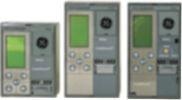
EntelliGuard is a registered trademark of the General Electric Company.
imagination at work




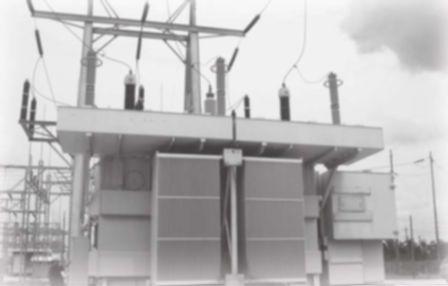



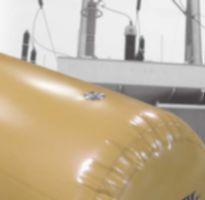





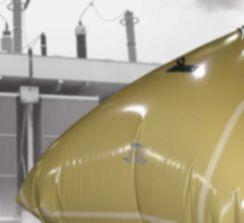





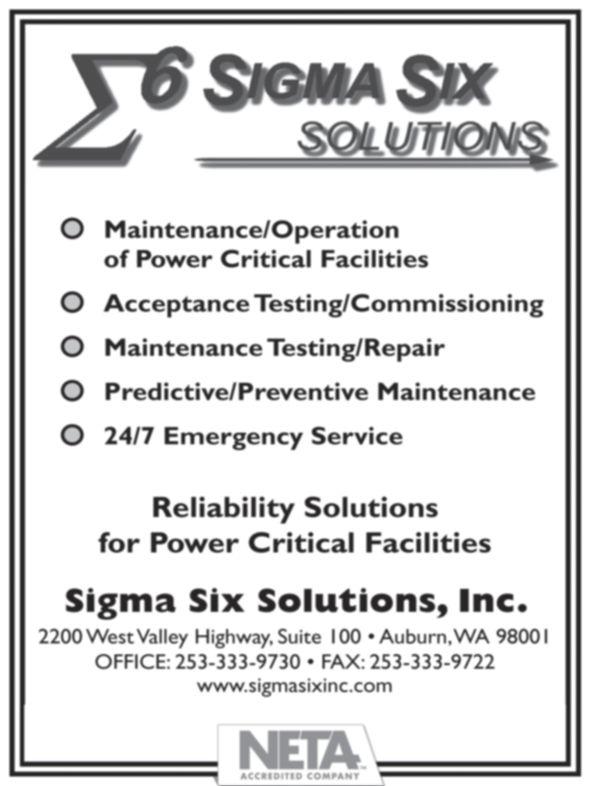


Drawout style circuit breakers are commonly used in industrial facilities in voltages ranging from 208-volts to 15 kV. Higher voltages are also used, although less frequently. These devices are frequently connected and disconnected from the bus by technicians without incident, usually by means of a manual screw-type racking mechanism as shown in Figure 1.
The typical racking operation involves attaching a handle (often shaped like a speed handle) to the screw mechanism of the circuit breaker frame, rotating the handle in order to cause the circuit breaker to move in or out of the cubicle, as well as connecting or disconnecting the circuit breaker’s load-carrying elements, referred to as primary disconnects or stabs. It is the connecting or disconnecting of the primary disconnects from the energized bus that creates a safety hazard. There are many situations that can cause a failure when the circuit breaker is being racked, ranging from the circuit breaker reclosing instead of discharging the springs or the circuit breaker being in the CLOSED position while being racked in or out of the cubicle. Other problems include inadequate spring tension on the primary disconnect fingers, primary disconnect fingers breaking, internal failure of the circuit breaker insulation system, and vacuum bottle or arc chute failure. There are many other reasons, but you get the idea. If anything goes wrong during the racking process and an electrical arc is created at the primary disconnect/ bus connection, there are no arc chutes to extinguish the arc. It will likely be a large scale event with severe consequences as it is on the main bus, and it will do a lot of damage. Figure 2 shows a low-voltage circuit breaker primary disconnect assembly as it is about to make contact with the bus.


Figure 3 shows a medium-voltage vacuum circuit breaker that reclosed when racked in. The springs were charged and the circuit breaker was open. As he was racking the breaker in, the technician heard the springs discharge which is normal, but the circuit breaker discharged and closed the main contacts instead of just discharging the springs. The result was a 30+ calorie arc-flash event that severely damaged the circuit breaker and cubicle. Fortunately, the worker’s employer had just purchased a 40 cal/cm2 arc-flash protective suit and required the employee to wear it. According to the employee, six months earlier he would have only had on safety glasses and a t-shirt. The end result was that the worker did not suffer any serious injuries.
How did the worker involved in the incident shown in Figure 3 determine what PPE would be adequate for the hazard? Probably like most other workers; his company told him to wear it, so he did. How did his company determine what PPE was needed? In this case the company had performed an arc-flash hazard analysis. The flip side is that many companies have not yet had an arc-flash hazard analysis performed, and many more have no intention of doing so. Chances are, those same companies don’t require a job hazard safety analysis to be performed before this hazardous task is completed. A technician arrives at the circuit breaker, inserts or attaches the racking handle, and begins racking the breaker. Racking circuit breakers is, in fact, one of the most hazardous tasks electrical workers can perform! Further evidence of the hazards is shown in Figure 4, which is a photo of a 5 kV circuit breaker cubicle after a fault that occurred during racking in of a circuit breaker.
In the current [2012] cycle of the NFPA 70E, a proposal (70E-199) and the resulting comment (70E-180) was discussed at great length. This comment was on a proposal that would require the use of an energized electrical work permit anytime a worker is inside the limited approach boundary or the arc-flash boundary. Some of the deliberation revolved around whether a permit would then be required for tasks such as racking a circuit breaker. It should be noted that the 70E committee clarified that an energized electrical work permit is not required when conductors are not exposed.

(Reference: 70E Report on Comments, June 2011, 70E-175, Log #58) During discussions of comment 70E-180 many of the objections appeared to be based on convenience; that is, racking of breakers is a task performed many times throughout the day, often in a routine manner. To require a permit would place undue hardship on companies that perform this task routinely. Is that the right consideration?
Circuit breaker failure during racking is a pretty rare event. The chances of such an event occurring are probably in the several thousand to one range. While we do not have the exact numbers to plug in, knowing that racking takes place in thousands of facilities at hundreds of locations in the U.S. alone makes the above assumption fairly sound. So, is this a concern? The problem with looking at the odds of an event happening is that we are now gambling on safety. We are, in effect, rolling the dice and hoping that we do not lose the roll. This attitude is not part of a sound safety process. All accidents are fairly rare occurrences. Through OSHA’s enforcement and the industry’s concerted efforts, accidents

on the job are becoming even rarer. That’s the good news. The bad news is the results can be catastrophic or fatal. The real question is – why take the chance? There are some jobs that pay extremely well due to the danger involved in doing them. Capping a blown-out oil well is an example (remember John Wayne in the movie Hellfighters?) As far as we know, no electrical worker is getting paid to put his life on the line in the normal course of his job duties. So, again – why take the risk?
An energized electrical work permit may not be necessary. Having upper management approval each and every time a circuit breaker is racked in or out may get a bit tedious (although a standing permit could be issued for a set period of time) and likely not necessary if you do a proper hazard assessment. But certainly the elements of an energized electrical work permit are needed. Call it a JHA or a JSA, or whatever, but the hazards and the risks must be looked at and evaluated each and every time a circuit breaker is racked. The amount of arc energy created at the power bus is tremendous. Although the risk of an event happening due to racking is low, when it does happen the results can be catastrophic. It only makes sense to take a few minutes to evaluate the equipment, the environment,
the location (and other workers who may be in the area), and the risk. The results of the evaluation are then documented, and the necessary PPE, signage, barriers, etc., are gathered. The task or tasks are then performed in a safe manner.
After all, given a roll of the dice – isn’t it all worth it?
Widup Ron Widup and Jim White are NETA’S representatives to NFPA Technical Committee 70E (Electrical Safety Requirements for Employee Workplaces).Both gentlemen are employees of Shermco Industries in Dallas, Texas a NETA Accredited Company. Ron Widup is President of Shermco and has been with the company since 1983. He is a Principal member of the Technical Committee on “Electrical Safety in the Workplace” (NFPA 70E) and a Principal member of the National Electrical Code (NFPA 70) Code Panel 11. He is also a member of the technical committee “Recommended Practice for Electrical Equipment Maintenance” (NFPA 70B), and a member of the NETA Board of Directors and Standards Review Council. Jim White is nationally recognized for technical skills and safety training in the electrical power systems industry. He is the Training Director for Shermco Industries, and has spent the last twenty years directly involved in technical skills and safety training for electrical power system technicians. Jim is a Principal member of NFPA 70B representing Shermco Industries, NETA’s alternate member of NFPA 70E, and a member of ASTM F18 Committee “Electrical Protective Equipment for Workers”.

CirCuit Breakers
Low & MediuM VoLtage
• General Electric • Westinghouse
• Cutler Hammer • Siemens
• Allis Chalmers • ITE/ABB
• Federal Pacific • Square D
transforMers
1000 – 5000 kVa
• Dry type transformers from stock
• Cast resin from stock
• Load break switch & fuse
Life extension
Let us design a prograM to extend the Life of your switChgear
• Vacuum retrofill
• Vacuum retrofit
• Solid state conversion
• Vacuum motor control upgrades
MoLded Case CirCuit
Breakers & Low
VoLtage Motor ControL
• Circuit breakers
• Motor control components
• Upgraded buckets
• Panel mount switches
switChgear
480V – 38kV new and surpLus
• New General Electric switchgear in 4 weeks
• Match existing lineup
• Reconditioned from stock
• Complete unit substations
• Indoor and outdoor available
renewaL parts
switChgear & CirCuit Breaker parts
MediuM VoLtage
• New General Electric available from stock
• Reconditioned starters and contactors
serViCe & repair
• Field service and testing
• Shop repair of all switchgear and circuit breakers

• Universal circuit breaker remote racking system
• Safety switch for remote switchgear operation

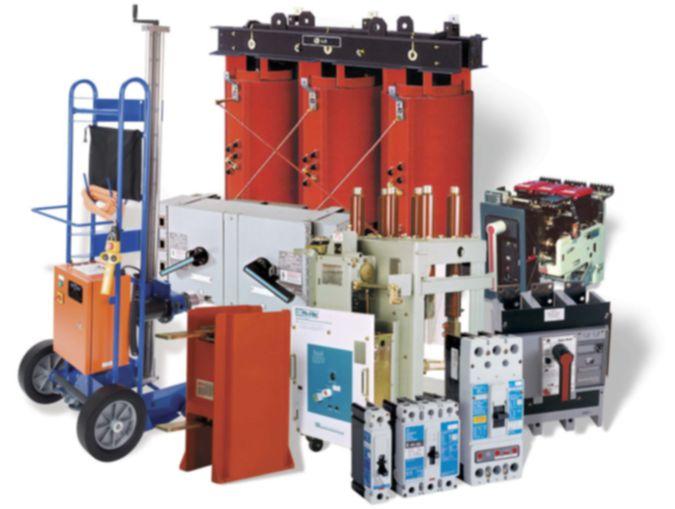
• All low & medium voltage renewal parts, 1945–today
• Obsolete vacuum interrupter in stock
• www.circuitbreakerpartsonline.com

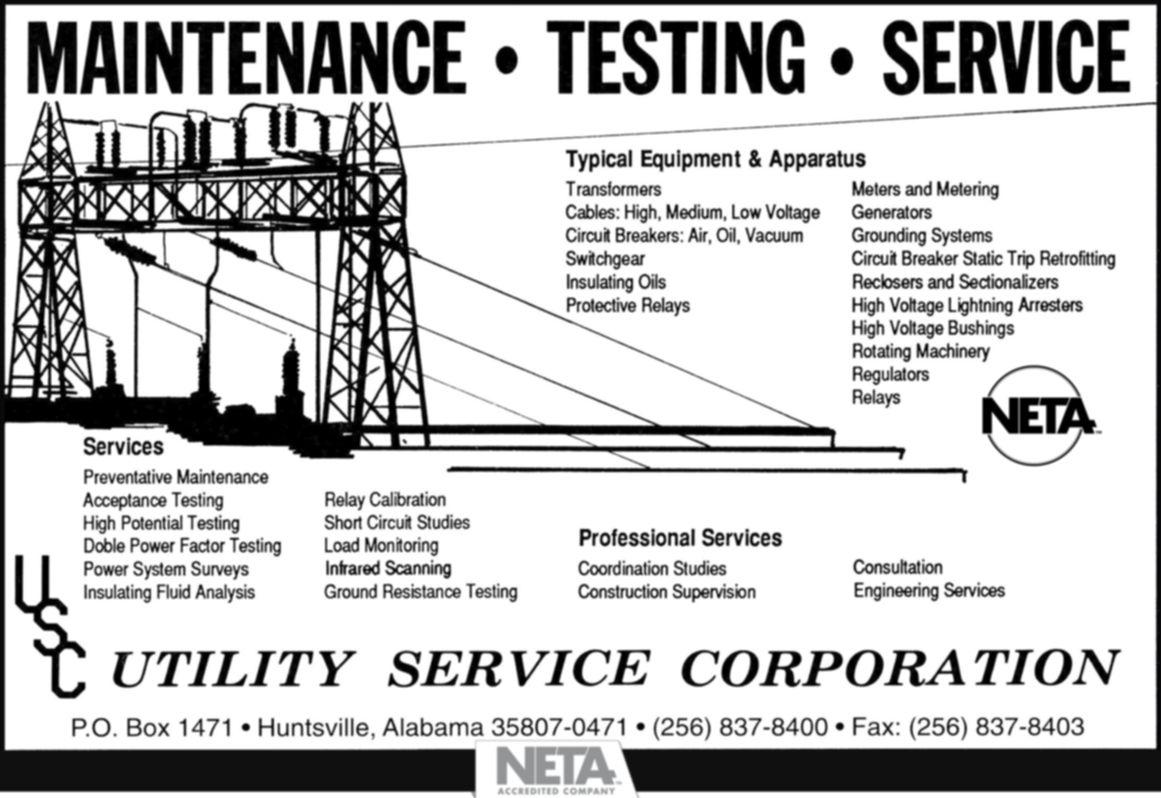


A surge arrester is a protective device that limits surge voltages on equipment by discharging or bypassing surge current, currents that are not around 60 hertz, to ground. Surge arresters allow only minimal flow of the 60-hertz-power current to ground. After the surge current has been discharged, a surge arrester, correctly applied, will be capable of repeating its protective function when another surge voltage must be discharged. For this article, surge arresters associated with higher voltage applications (> 1000V) will be discussed.

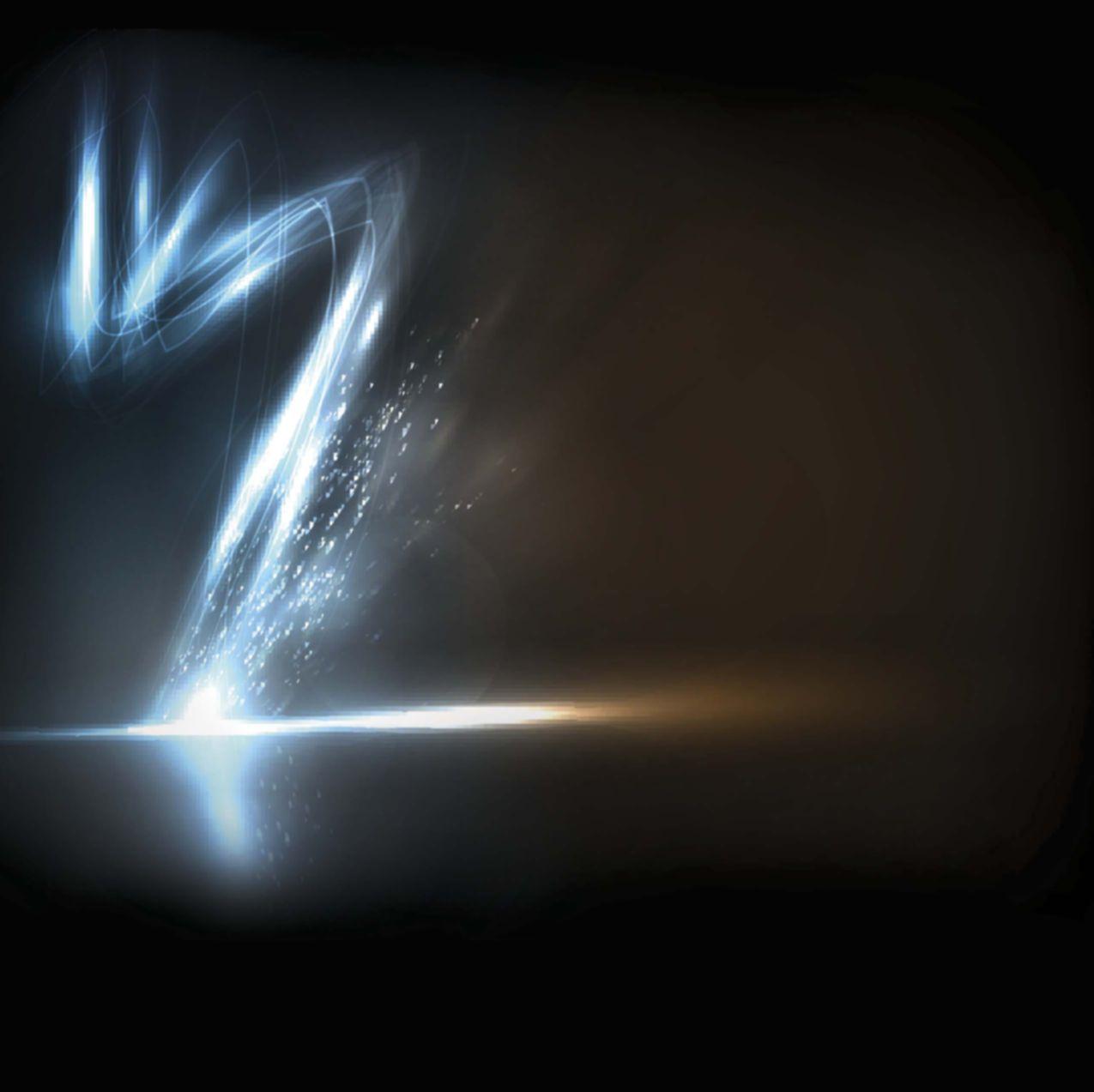
Surge arresters used for protection of electrical distribution and transmission lines are typically either of the metal oxide or gapped silicon-carbide type:
Metal-oxide surge arresters are the most common and typically provide the best performance. Surge voltage conduction starts and stops promptly at a precise voltage level, thereby improving system protection. Due to their design, there is no air gap; therefore, there is minimal failure due to contamination. There is, however, a small value of leakage current present at power frequencies. Therefore, the arrester’s maximum power-frequency, continuous operating voltage (MCOV) cannot be exceeded.
Silicon-carbide has more nonlinearity than metal-oxide. Because of this nonlinearity, an air gap is provided in the design to decrease the amount of leakage current and mitigate the arrester burning out and failing. A gap prevents burnout, but it does mean that the arrester will not operate until the gap sparks over. As the spark overvoltage of a gap varies with the atmospheric pressure, the protective characteristics of arresters are affected by the altitude at which they are installed. Standard arresters are considered suitable for altitudes up to 6,000 feet.
Both surge arrester types do the same job, but the need for selection of higher voltage levels for the silicon-carbide type means the protection is slightly less. When gapped type arresters fail, they are typically replaced with the metal-oxide type. ANSI/IEEE C62.11-2005, Standard for Metal-Oxide Surge Arresters for AC Power Circuits (> 1 kV), provides an MCOV rating and a corresponding duty-cycle voltage rating for metal-oxide surge arresters. The most common reason for an arrester failure is that the arrester has been sized for the application based on the phase-to-ground voltage. When a ground fault occurs, a line-to-line voltage may be applied, which would exceed the MCOV rating of the arrester and potentially damage the arrester. Over time, this could result in an eventual arrester failure.
Modern surge arresters require little operational maintenance and the type of maintenance to be performed is usually limited to visual inspection and simple electrical tests. A suggested list of these inspections and electrical tests can be found in ANSI/NETA MTS-2011, Standard for Maintenance Testing Specifications for Electrical Power Distribution Equipment and Systems, Section 7.19.
There are some predictive maintenance techniques that are useful when evaluating surge arrester condition. The fastest growing method of assessing the condition of arresters is with the use of infrared thermography. This inspection should be performed while the system is energized and in service. The reason for its popularity is its clear differentiation between a good arrester and one nearing the end of life. A 10 8C difference between arresters in service is indicative of a potential problem, and plans should be made for replacement at the next opportunity. A 20 8C difference between arresters in service is indicative of a more immediate problem, and consideration should be given for immediate replacement. Another predictive technique that should be considered is an ultrasonic emission (UE) survey. A failure mode of arresters includes partial discharges which can be found by using ultrasonic emission surveys.
Once the system has been de-energized, the physical and mechanical condition of the surge arrester should be inspected for indications of tracking and corona. Visual inspection should also include inspection associated with anchorage, alignment, and grounding. The arrester housing should also be inspected for cracks, chips, or evidence of external flashover. Maintenance should always include cleaning the unit and verifying that the stroke counter, if present, is correctly mounted and electrically connected.
There are some basic electrical tests that should be considered:
CONTACT-RESISTANCE MEASUREMENTS should be made through bolted connections with a low-resistance ohmmeter to verify tightness of bolted connections. The line lead should be securely fastened to the line conductor and the arrester. Investigate any values which deviate from similar connections by more than 50 percent of the lowest microhm value.
MEASUREMENTS should be made at the appropriate voltage levels. This measurement is a means of determining if an arrester is shorted or open. It cannot tell anything else about the health of the tested arrester. This is not a recommended test method by most arrester manufacturers; however, it can diagnose an arrester failure. Unfortunately, this test will not provide indication of a functioning arrester. In the absence of manufacturer’s recommendations, it is suggested that the levels presented in ANSI/NETA MTS-2011, Table 10-1, be used. As with any type of insulationresistance measurement, temperature correction factors should be utilized.

Table 10.1:
Insulation Resistance
Test Values Electrical Apparatus and Systems
should be made between the arrester ground terminal and the ground system. The resistance between the arrester ground terminal and the ground system should be less than 0.5 ohm.
WATTS-LOSS TEST for a surge arrester is considered optional by ANSI/NETA MTS-2007. However, a watts-loss measurement of an arrester can be very effective in determining surge arrester condition. Many manufacturers measure watts loss during final production tests since the IEEE standards imply that it be measured. The measurement is generally done near the units MCOV, where it is a more valid measurement. At any other voltage, it is only a relative number. The problem with available watts–loss, field-test equipment is that the maximum voltage used in the test is typically around 10 kV. A 10 kV watts-loss on a 120 kV MCOV arrester is not very accurate at best. However, periodic watts-loss testing of an arrester will show little deviation from the original watts-loss value as long as the arrester remains in good operating condition. Therefore, it is not recommended that a watts-loss measurement of an arrester be used as a reliable means to assess the quality of an arrester without repeating the test many times on many arresters. A significant deviation from previous values and the values of similar arresters indicates that the arrester is suspect and may have been mechanically damaged or contains moisture. Investigate any values which deviate from similar tests by more than 15 percent of the lowest watts-loss value. At transmission voltages (69 kV and above), it is not surprising to see a near-term, catastrophic failure of an arrester which has a deviation of greater than 25 percent watts-loss value from companion arresters.
To ensure reliable electrical distribution and transmission system operation, associated surge arresters should be included in a periodic maintenance program. This program should include predictive elements, like infrared thermography and ultrasonic emission surveys, as well as preventive maintenance testing that includes visual inspection and electrical testing. Electrical testing should include measuring contact resistance on the line leads and continuity testing on the ground connection. Electrical testing should also include insulation-resistance testing and watts-loss values should be trended.




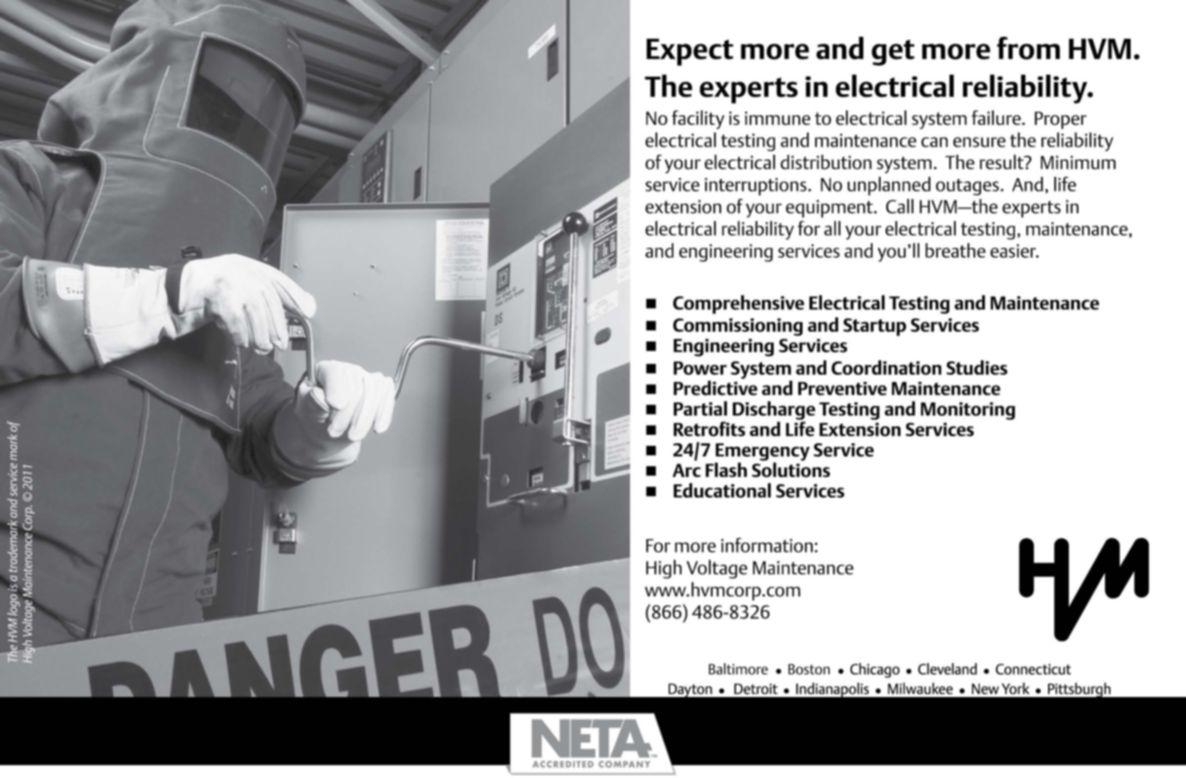
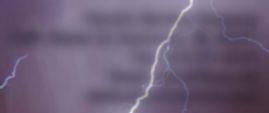





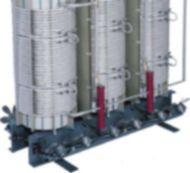


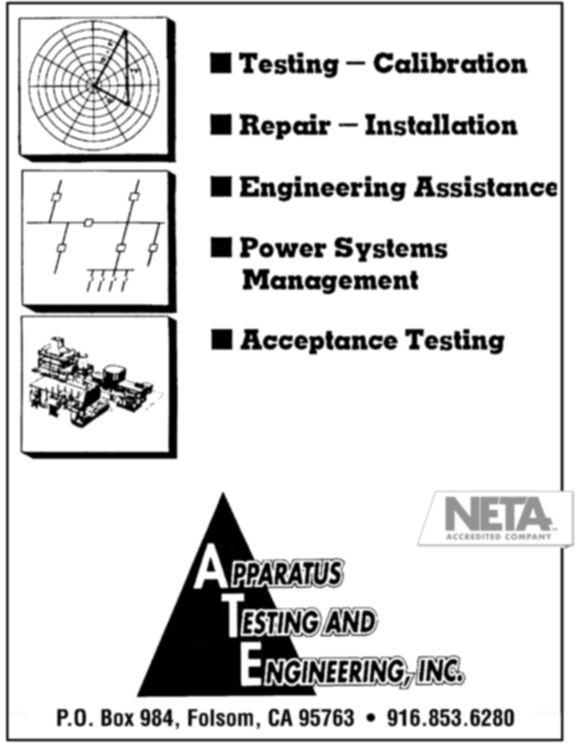



NETA’s tagline, Setting the Standard, holds many meanings. It speaks to the quality of each NETA Accredited Company that completes the rigorous application process, the stringent NETA certification examination for testing technicians, and the quality of service the association itself strives to achieve for its members. Originally chosen for these reasons, it also encompasses a very literal meaning when speaking about the ANSI/NETA standards.
The first NETA testing specification was published in 1973. It was written by a small collection of dedicated individuals who saw the movement toward voluntary consensus standards as being critical to the growth of their industry. After nearly thirty years of standards development, NETA was accepted as an American National Standards Developer for ANSI in 1996. This achievement marked the advent of a new level of awareness for the NETA standards. Those who already referenced the NETA standards now had the ANSI approved mark backing their decision to require testing to NETA specifications. This new designation also opened up new avenues for NETA and NETA Accredited Companies and gave credence to the work they perform across many industries.

Some of the original drafters of the first NETA standards continue to serve on the NETA Standards Review Council alongside the association’s newer technically competent individuals. They are joined in the task of maintaining these documents by the ballot pool, a group of volunteers comprised of industry experts representing all materially affected demographics touched by the standard. Together, the Standards Review Council and ballot pool are charged with review of the standards for publication on a four-year cycle. While this seems like a large span of time, 250 pages of dense technical material with hundreds of references takes quite some time to comb through. Public comments on these documents are always encouraged and do lead to changes in the standards under the ANSI process.
NETA’s most recently revised standard, the ANSI/NETA Standard for Maintenance Testing Specifications for Electrical Power Equipment and Systems, was released in May 2011. This marks the tenth edition of this document published in the forty years of NETA’s existence as an association. This milestone stands as a testament to the power of volunteerism,

the value of collaboration towards a mutual goal, and the ability to find common ground amidst differing opinions. The evolution of electrical testing has happened rapidly over the past four decades, and NETA has been able to change with the times while remaining steadfast in requiring that testing methods included in the NETA standards be supported by documentation and field experience alike.
It is for these reasons that NETA testing, NETA Certified Technicians, and most importantly, NETA Accredited Companies continue to be specified for acceptance and maintenance testing across the country and around the globe. The Canadian Standards Institute has widely adopted portions of the ANSI/NETA MTS for use in the CSA Z462 standard, and is planning to develop even more consensus standards for electrical testing. NFPA 70B references the ANSI/NETA MTS in the fine-print notes. These and other standards are important to NETA, and many NETA Accredited Representatives and their employees participate in the development of other NFPA, IEEE, and ICC standards, just to name a few.

Commitment to setting the standard was the anchor for NETA’s recent brand redevelopment that took place in 2011. It is the keystone that holds all the pieces in place and will continue to help this association, its members, affiliates, and supporters raise the bar.

National Switchgear (NSG) is celebrating a milestone this year, twenty-five years in business. Changes, challenges and collaborations have all been a part of this company’s evolution. Recently, I sat with president and founder, Doug Powell, to take a look at the past, present and future of NSG.
Destiny has a way of making itself evident very early on for some people. In the case of Powell, at age 15, life was pulling events and people together that would shape his future. It was at this age that he began doing yard work for a neighbor, Pete Sherman. Sherman would later go on to found Shermco, an electrical maintenance, repair and training company, based in Dallas, TX.


When he was old enough, Powell went to work for Shermco and was employed by his mentor and friend until he was 28 years old. It was then that Powell took a leap of faith and created his own business.
Originally, NSG was a surplus equipment dealer. The model was simple; buy it and resell it. Powell did not originally anticipate that his customers would need more so he made, what turned out to be, a great business decision—to shift his marketing focus to the end user. This allowed him to build a customer base all over the USA.
The decision was significant and very quickly NSG became a well-known national company with much larger clients such as steel mills, paper mills, and chemical companies. More employees were added as the market for the services expanded.
“We want to go beyond sustainable,” Powell explained. “Whatever that word is that defines what it means to go above and beyond conserving an ecological balance by avoiding depletion of natural resources, we want to go there. At NSG, we feel we have a duty and a mission to evolve into the energy market in a way that is useful, life-supportive and innovative.”
To a large degree, NSG has been ahead of the times. Twenty-five years ago, “green” was not a word related to technology or manufacturing. Early on, NSG began “recycling”, i.e., taking an existing piece of equipment apart, cleaning, repairing, and then reassembling it to be used again.
NSG is developing an internal focus towards more green initiatives and will consistently seek the participation and involvement of everyone in the company in order to reduce their own energy consumption. They will continuously develop company-wide sustainability and recycling initiatives.
“While our entire industry must continue to create standards and processes to insure quality of products, we would like to see everyone taking to the idea of retooling old thinking, as well as products.” Powell said.



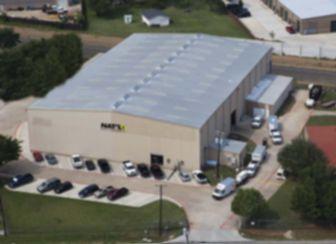
Today, NSG is an industry leading equipment supplier, providing new OEM electrical equipment and repurposed switchgear, circuit breakers and related parts. In Powell’s estimation, the past has been learning how to “get good” at business. In the future, NSG will continue to apply what it has learned. For Powell, that means making a difference in the world that we know today.
So how do you take a non-glamorous business that’s been around for twenty-five years and create excitement and interest? First, you expand your vision.
One of the ways NSG has gotten involved in the retooling of ideas was to accept a challenge from the National Institute for Certification in Engineering Technologies (NICET). This 2007 call to action asked for industry experts to participate in workshops throughout the country to write approximately 1,200 test questions for a four-tiered level exam for technicians. For Powell, this is all about making sure that as a business owner he is doing everything possible to ensure that the workforce is operating safely and is well trained in the operation and interpretation of modern test procedures and methods. As of August, Levels I and II have been released, with Level III to come out in September and Level IV to be ready in January 2012.
As with all innovative companies who place importance on the people they serve, both inside and outside its doors, a common thread weaves through the past, present and future. For NSG, that thread seeks to ever explore the possibilities of what might be. NationalSwitchgear.com

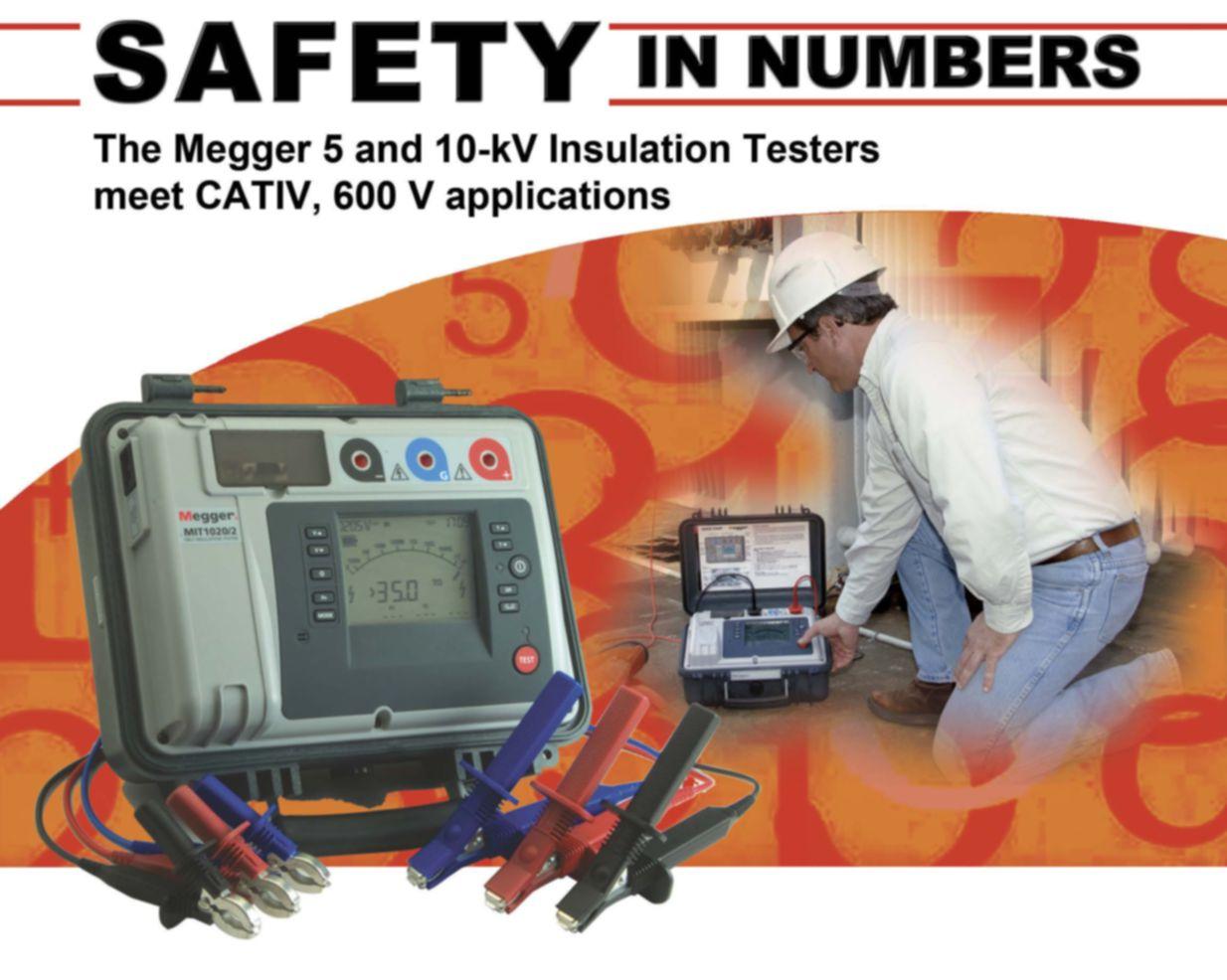
For over 100 years, Megger has been the world recognized leader in the area of insulation testing.

3 models to choose from m IT 510/2, 520/2 and 1020/2
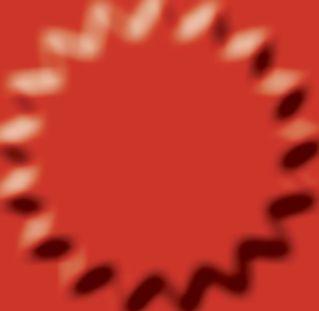

Our 5 and 10-kV insulation testers meet the requirements for use in CATIV 600 V applications, in line with IEC61010-1. Some of the features of the units include:
n Extremely high measurement sensitivity
(15 TΩ @ 5 kV; 35 TΩ @ 10 kV)
n 3 mA test current
n 2 mA noise immunity
n High performance guard terminal
n Battery or line operated
n IP65 case rating
n Result storage capability (MIT520/2 and MIT1020/2)
n Automatic performance of five industry-standard tests
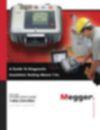
“A guide To Diagnostic Insulation Testing Above 1kV”
An updated copy of this valuable booklet provides guidelines for making and evaluating diagnostic insulation resistance tests.
For your Free copy, call 866-254-0962, or email vfmarcom@megger.com Please reference code: NeTA-FALL when ordering

In Canada and countries with similar climates, winter can be bitterly cold with heavy snowstorms along with ice, freezing rain, and temperatures almost always below zero degrees Celsius. These conditions, most notably temperatures, pose a big challenge for the electrical industry personnel that have to work outdoors. Interpreting outdoor electrical equipment test data and results requires a lot of preparation and analysis.
In this article, a comparison of results on a 3.0 MVA, 13.8 to 0.6/0.347 kV transformer will be demonstrated in two different atmospheric conditions. The first scenario is testing at an outdoor temperature of -10ºC. The second scenario is performing the identical tests just moments apart indoors at a temperature of 20ºC. These tests were accomplished by placing the transformer outside our shop on March 13, 2011, when the ambient temperature was -19 degrees C and the wind chill was -28. Test results were obtained during the early morning hours and the actual transformer temperature was approximately – 10ºC as the previous day was around 0ºC.
Electrical power system testing and maintenance has a number of challenges when working in extreme cold weather conditions. While large amounts of snow create problems, low temperatures have a huge effect on insulating mediums like SF6 gas and insulating oil as well as the test results associated with the equipment.
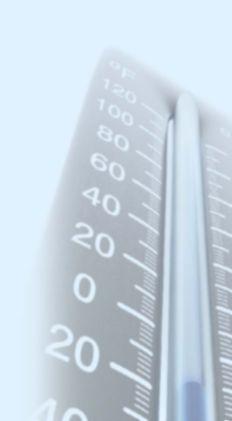 BY KYLE SPRINGINATIC, Magna Electric Corp.
BY KYLE SPRINGINATIC, Magna Electric Corp.



One of the most challenging feats is performing transformer work. This is particularly true when transformer assembly and vacuum filling are required. Vacuum filling works under the pretense that moisture will be flashed off under low pressure, but that will not work when the moisture is in a solid state (yes, that is ice). Normally the transformer will need to be completely covered with insulated tarps, and heat must be applied to make the vacuum process effective.

Handling transformer oil is a challenge as well due to the viscosity of the oil becoming so low that the oil cannot be moved. The oil actually looks more like thick maple syrup. In these cases heated tankers are required to warm the oil to the point where transferring it becomes possible. If the oil is already in the transformer tank, the radiators can be shut off and the oil circulated through heaters to bring the transformer up to temperature for testing.
Most test equipment does not function properly at extremely low temperatures. Test equipment is often required to be set up in the warm vehicle and the test leads run out through the window. It is important to understand why some testing should not be performed, nor is it recommended when the temperature reaches
below freezing point, unless certain heaters and insulated tarps with support structure can be provided to help keep heat in and around apparatus. For example, if a company were to test a transformer in -40ºC temperature, how accurate will the test results be? Are the powerfactor results going to capture all the moisture present in the oil, windings, and insulation? Is the test set screen going to freeze up? Are the results going to accurately compare with summer test records? Can the drain valve be accessed to take an oil sample? These are just some of the questions you will have to ask yourself before maintenance is performed on outdoor transformers and a service report is developed.
Temperature has a direct proportional affect to the resistance of a conductor. For the operating range in temperature of a transformer, the relationship between resistance and temperature is a linear relationship.
There are a few different formulas and coefficients available for calculating the resistance of copper or aluminum conductors, but this article will only focus on the inferred absolute temperature method as follows:
Inferred Absolute Temperature (Ti) Formula:
Where: |T1|= inferred absolute temperature of conductor in Table 1-1
T2= measured ambient temperature
R1= measured resistance
T3= temperature to correct resistance value to R2= calculated corrected resistance
Table 1-1:
Inferred Absolute Temperatures (Ti)
Having the correct conversion factors will in fact give an accurate reading to 20°C for analyzing the test data as shown in Table 1-2 and 1-3. If no conversion factors were used for the winding resistance, results would not give a correct interpretation on the integrity of the transformer.
Table 1-2: High Side Winding Resistance Correction Factors
When performing a polarization index test on the transformer, results revealed a significant change in data for -10°C verses 20°C as shown in illustration 1 and illustration 2. The polarization index value with energizing the primary winding at 5 kV and measuring to the grounded secondary winding equaled 2.509 @ -10°C and 1.986 @ 20°C (23.3% difference). With the same test, but energizing the secondary winding at 500 volts and measuring to the grounded primary winding, PI results were calculated as 2.609 @ -10°C and 2.171 @ 20°C (18.3% difference).
Table 1-3: Low Side Winding Resistance Correction Factors
Looking at the Table 1-4 from the ANSI NETA MTS-2011, it can be seen that at 20°C the temperature correction factor equals one. For every 10°C increase in temperature the correction factor approximately doubles and vice versa for decreasing temperature by 10°C.
Illustration 1: 5000 Volt Primary to Secondary and Ground PI Test
Table 1-4: Insulation-Resistance Correction Factors (20ºC) NETA Table 100.14.1
Illustration 2: 1000 Volt Secondary to Primary and Ground PI Test
Photo 4: Power-Factor Testing Preparation

Gathering an oil sample from the top and bottom drain valves at below operating temperatures will give the greatest insight on the oil quality. As the temperature decreases closer to freezing point, the moisture present in the oil will escape, thus affecting high voltage testing. When the moisture is becoming extracted from the oil, it will sit closer to the bottom of the transformer tank.
Table 1-3: Outside -10ºC Doble Overall Tests
Power-factor testing can provide the most helpful and accurate results when it comes to transformer testing. Having previous data stored on the Doble history database allows one to compare results from past and interpret the stability of the transformer. But what if the stored test results differ in values? Table 1-3 and 1-4, show how the same transformer can provide different results at extreme temperature changes.
Table 1-4: Inside 20ºC Doble Overall Tests

The fact that the transformer tested poorly outside and good inside shows how crucial it is to consider the entire transformer’s temperature during testing. By placing a higher voltage on the windings, more results are revealed, but testing at a nonoperating, freezing temperature will not give acceptable data as clearly shown
Move to Florida! There are many challenges involved with winter work especially when dealing with transformers and transformer oil. Special precautions and extra effort are required to get the equipment up to temperature so certain tasks can be done.
It can be seen how such a drastic change in results are affected by temperature. Therefore, having an accurate test sheet temperature correction-factor database is crucial in order to have comparable results from season to season.
In today’s world, digital test sets perform the majority of the testing and should, therefore, be kept in a warm environment where results can be accurately processed. If need be, bring the test set inside a vehicle or indoors and run the test leads outside to the equipment under test.
When tarps and heaters are used to heat the transformer, ensure that all proper clearances are kept around bushing and test connections. Having scaffolding or any support structure too close to the bushings will also pose a threat to accurate test results.
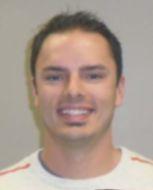
Kyle Springinatic is a NETA Level II technician that has been working with Magna Electric for four years in the oil and gas, potash, steel and generation industries.
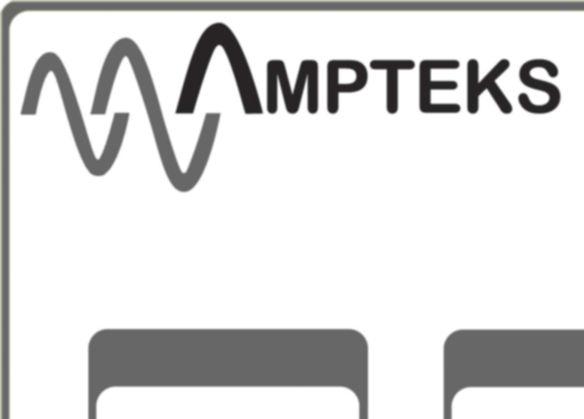


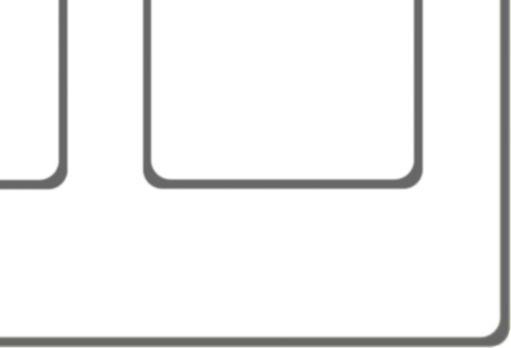






“At Arc Flash Study Pro we’ll help you achieve compliance fast and efficiently.
You’ll work with one highly trained specialist from start to finish, from surveying through analysis, engineering, reporting and training. You have my commitment!”
Curtis Latzo,President and Owner, Arc Flash Study Pro
Our STUDIES will provide you with FULL COmPLIAnCE of nFPA 70E and OSHA 1910 Arc Flash Regulations

• Arc Flash Study Pro specializes in electrical power studies including arc flash analysis, protective device coordination, power flow analysis, short circuit study, motor start analysis, and medium voltage relay setting correction.
• With combined experience of over 45 years, over 100 power studies performed, and a long and impressive list of Fortune 1000 clients, you can rest assured that your facility is in expert hands. We are also NCEES registered for quick licensing anywhere in the U.S.
• Don’t pay an inflated price to your electrical company just to have them hire a power studies specialist as a consultant to your project. Hire the Pro DIRECTLY and get experienced professionals at a fraction of the price!
Benefits of hiring Arc Flash Study Pro
• Increased facility reliability

• Increased equipment protection

• Increased personnel safety
• Reduced electrical bill
• Aid for future expansion plans
• Identify under-utilized equipment
Professionally. Efficiently. Affordably. Visit us at www.arcflashstudypro.com or call (727) 397-2383

• Increased operation efficiency
• Aid to current operations
• Reduced downtime




• Prevent damage by identifying overloaded or underrated equipment







Often times an indication of a problem is overlooked by testing personnel. Fortunately for the owner of this transformer, the technician correctly identified a major problem when performing acceptance testing of a new transformer. Proper identification of a problem with abnormal excitation current tests prevented this transformer from being placed into service which would have resulted in a failure upon energizing.
e technicians from the testing company performed the standard acceptance tests that included: transformer overall power-factor tests, exciting current tests on all five deenergized tap-changer (DETC) positions, low-voltage transformer turns ratio (TTR) tests on all five DETC positions, and winding- resistance tests for both the primary and secondary windings. e overall power-factor, TTR, and winding-resistance results were all considered to be acceptable by the technicians performing the tests. e technicians correctly identified that the exciting current test results did not conform to the two high and one low current that is normally expected and notified plant personnel about a possible problem.
Exciting current tests are performed in an attempt to identify an abnormal condition with the core or coil. Exciting current tests are often affected by a magnetized core. A magnetized core may be the result of performing dc winding resistance tests. For a three-legged core transformer, one usually expects to have two high currents and one low current with the middle winding having the lowest exciting current, although there are exceptions. When exciting current tests have a low-medium-high pattern, it is suspected that the core is magnetized. When this low-medium-high pattern is received, it is often recommended to demagnetize the transformer. Often the technician will assume that the core is magnetized and will not investigate the odd exciting current patterns. It is fortunate that the technicians who performed acceptance testing of this transformer identified the incorrect excitation current pattern and followed up on the problem.
The exciting current test is a single-phase test that was introduced in North America as a diagnostic tool in 1967 and today is part of the standard tests in the field. It is primarily a test of the magnetic circuit of a transformer. Since that time, the exciting current test’s diagnostic capabilities have proven the ability to identify a range of problems. These include defects in the magnetic core structure such as shorted laminations or fundamental changes in the iron characteristics, failures in the turn-toturn insulation, or problems in the tap-changing device. These conditions result in a change of the effective reluctance of the magnetic circuit which consequently affects the required current necessary to produce the flux in the core, or in other words, the exciting current measurement.
While some electrical field-tests complement others in their ability to uncover similar types of problems and, therefore, lend themselves well as sanity checks, the exciting current test largely stands alone in its diagnostic capabilities. For this reason, most companies consider the test an essential one in the basic suite of tests performed on a transformer. While a low-voltage, turns-ratio test will detect complete failures in the turn-to-turn insulation, it is not nearly as sensitive as the exciting current test in detecting a strand-to-strand fault.
 BY KEITH HILL Doble CompanyEngineering
BY KEITH HILL Doble CompanyEngineering





The exciting currents measured by the testing company are shown in Table 1.
A TTR test was performed on all five of the DETC positions using a low-voltage, electronic type instrument. All of the TTR test results were determined to be acceptable by the technician performing the tests.
The manufacturer of the transformer was contacted by the owner and the data was reviewed by both parties. The manufacturer provided a field service engineer to investigate the problem, and an attempt was made to demagnetize the transformer following the demagnetizing procedure recommended by Doble Engineering. Attempts to demagnetize the transformer by field service personnel were unsuccessful as the currents did not change from the high-medium-low pattern. The H2 – H3 phase continued to have the high current (over four times higher) when compared to the other outside winding H3 – H1.
At this point, Doble Engineering was contacted by the manufacturer to review the test data and to provide recommendations for additional diagnostic tests. After discussing the results, factory personnel wanted personnel from Doble to perform testing that would include power factor, exciting current, and sweep frequency response analysis (SFRA). The manufacturer also specified for Doble to attempt to demagnetize the transformer.
As in the acceptance tests, all of the overall power-factor test results performed during the follow-up investigation were acceptable and matched prior test results.
Table 2 records the exciting current test results attained by Doble personnel before the demagnetizing procedure was performed.

Attempts made to demagnetize the transformer did not result in changes to the pattern or magnitude of the excitation currents. A problem with the core or windings was suspected.




Table 3 contains the exciting current test results obtained after the demagnetizing procedure.

TABLE 3: Exciting Current Tests after Demagnetization
Test 6: Performed on Tap 5 after Demagnetizing of the Transformer was Attempted.
Test 7: Performed after Demagnetization was Performed on H3 – H1. Test 8: Performed on Tap 5 with Shorter Intervals of DC Current Applied.
It is noted that the H2-H3 phase continues to have current values four times higher than the H3-H1 phase. Since demagnetizing the core did not change the excitation test results, some other problem is assumed to be involved with the core or windings. One test that is recommended as part of the standard test procedure is the TTR. Turns ratio tests are particularly useful if there is a suspected open or short circuit. The turns ratio tolerance should be within the prescribed IEEE C57 guidelines of +/- 0.5 % based on the nameplate stated voltages for all windings. As part of the investigation, a TTR test was performed using the TTR capacitor. Using the capacitor in place of the standard TTR test set allows a higher test voltage, up to 10 kV, to be applied to the primary winding. Most TTR test sets are limited to less than 100 volts which greatly reduces the voltage on the secondary windings.
Abnormalities were observed when attempting to energize the H2-H3 winding that limited the test potential for that phase. With 10 kV applied, test results were attained for phases H3 – H1 and for H1 – H2; however, when the test voltage was applied to H2 – H3, the test set would trip out on overcurrent. The test voltage applied to H2 – H3 had to be reduced to 2 kV before a ratio could be attained as the test set would trip out at 2.6 kV.
It should be noted that all of the TTR results were acceptable at 2 kV. Using the standard, low-voltage, TTR test set would not have revealed a problem with the windings of this transformer.

The SFRA test was performed on this transformer in an attempt to identify the problem. The SFRA is a technique that has gained popularity internationally over the last ten years and is experiencing rapid growth and application in North America.

There is a direct relationship between the geometric configuration of the winding and core and the series and parallel impedance network of inductance, capacitance, and resistance. This network can be identified by its frequency-dependent transfer function. Frequency response analysis testing by the sweep frequency response method uses network analysis tools to determine the transfer function. Changes in






FIGURE 1: SFRA - HV Open Circuit Tests H3 – H2 Appears to be Abnormal



FIGURE 2: SFRA – HV Tests with LV Winding Short CircuitedWindings Appear to be Normal

the geometric configuration alter the impedance network and, in turn, alter the transfer function. This enables a wide range of failure modes to be identified. Interpretation of SFRA test results relies, in part, on comparison between phases and against previous test results. Commonality between transformers of the same design is also expected.
The SFRA tests are actually a series of many tests over a band of frequencies from 20 hertz to 2 mega-hertz. The SFRA test results can be referred to as traces that are shown on a graph. The x-axis of the graph is the test frequency and the y-axis is the magnitude in decibels. These traces show the ratio of the output voltage to the input voltage of the transformer circuit under test at each of the frequencies. It has been shown that these traces are a signature that is related to the distributed resistance, inductance, and capacitance (RLC) of the components within the transformer. They should follow certain general shapes and favorable comparisons should exist among the phases of a transformer with previous test results and among transformers of identical design. The first, or benchmark, traces also provide a valuable tool to identify winding movement in the future.
The SFRA test results for this transformer are shown in Figures 1 through 3. Figure 1 shows the results of the open circuit scan performed on the high voltage winding. The H1-H3 phase and H2-H1 phase exhibit expected pattern for this configuration of windings. H3-H2 phase reveals a deviation in the low frequency range which indicates irregularity with the transformer’s magnetic circuit.
The SFRA traces in Figure 2 show the tests when highvoltage winding is energized with the low-voltage winding short circuited. The traces are expected to exhibit a similar starting point and an expected trail-off, followed by the more complicated form above 20,000 hertz which is typical of the short-circuit tests. By shorting the lowvoltage winding, the effect of the core is removed. The waveforms in Figure 2 are typical for the short-circuit test.



FIGURE 3: SFRA -LV Open Circuit Tests X3 – X0 Appears to be Abnormal and is the Same Phase as H3 – H2


Figure 3 plots the SFRA open-circuit test results for the low-voltage winding. As was observed in the high-voltage winding open circuit (Figure 1), there is a deviation in the low frequency range of the X3-X0 trace confirming abnormalities with the magnetic circuit.
Although the overall power-factor test results were within the recommended limits, the single-phase exciting-current tests combined with irregularities observed when performing the TTR and SFRA tests provides substantial evidence there is a problem with the magnetic circuit of this transformer. It was determined by the customer that the transformer would not be accepted and would be returned to the factory for inspection and repair.
Diagnostic tests performed in the field revealed a possible problem with the windings. The transformer was returned to the factory for further inspection and testing. The following tests were scheduled to be performed:
1. Preliminary tests (ratio test, dc insulation, resistance)
2. Exciting current tests
3. No load losses tests (NLL)
4. High-voltage impulse test
5. Low-voltage impulse test
6. Induced voltage test
In the factory report, it was noted that a high exciting current was measured on phase 3, H2 – H3, as reported by the customer. On the NLL test, the losses measured were nearly three times the value when tested in the plant during the original routine tests. During the high- and low-voltage impulse tests, the neutral low voltage failed. At this point it was determined to stop the electrical tests and to carry out the investigation of the failure.
The top cover of the transformer was removed and the core and coil assembly was removed from the tank. The frame and top yoke were removed, and no signs of failure were observed. It was noted that the low-voltage coils from phase 2 had possible overheating on the top section.
The coil was removed from phase 3, and the conductor in the high-voltage winding was unwound layer by layer, with a careful examination of the condition of each layer. An initial evidence of arcing was detected in layer 16 between adjacent turns. Similar evidence of arcing was also detected at the first two turns on layer 11.
The factory noted that all ANSI routine and temperature rise tests were performed. After the temperature- rise test, no other tests were performed on this unit.







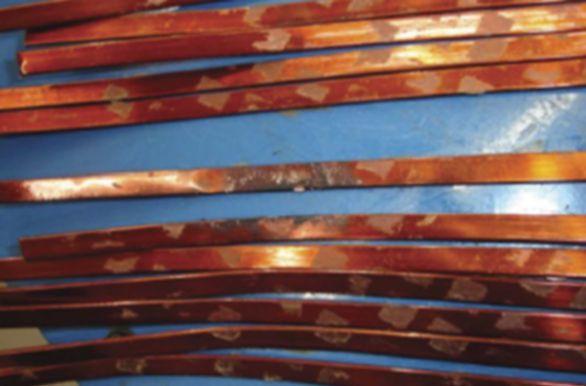


The diagnosis of the failure suggested an issue with the conductors. On the first finding, the investigation results suggested that the damage on the windings was due to a lack of conductor insulation. On the second finding it was noted that the conductor has a low level of insulation.
The fact that there were no other tests performed after the temperature rise test led factory personnel to the following conclusion: During the temperature rise test, and with the thermal expansion on the conductors, the incipient short circuit between adjacent turns was aggravated, causing the arcing observed and worsening the fault current which was not detected afterwards since no additional testing was performed after the temperature-rise test.
Factory personnel determined that the failure of the unit was due to a small blister in the conductor insulating enamel. The conductor with the small blister was not detected by routine test. After the temperature rise test, the blister in the conductor developed an increased contact between adjacent conductors. This condition resulted in an increase in the damage and the fault current but remained at a moderate energy release insufficient to be detected during the temperature rise test. The final condition of the fault was not detected since no other tests were performed after the temperature rise test.
It should be noted that the factory took immediate corrective actions in their test process/laboratory and in the winding process to prevent recurrence of this problem. It was noted in the factory’s diagnostic report that some testing will be performed at the factory after the heat rise test.





This case history confirms the importance of the test technician investigating an odd exciting current pattern. Power-factor results should never be the only criteria used in determining the acceptance of a transformer as other test data may reveal a problem. If the test technician had not identified and investigated the odd exciting current pattern, this unit could have failed when placed into service. When an odd exciting current pattern is obtained, the tester should not take for granted that the core is magnetized, as this odd pattern may indicate a problem with the core or windings. It should also be noted that the low voltage TTR tests did not reveal a problem with the turn’s ratio on this transformer. Use of the TTR capacitor, at a higher test voltage, revealed a problem with the turn,s ratio when the voltage applied was above 2.6 kV. The TTR capacitor data, along with the SFRA test results, confirmed that there was a problem with this phase.
High Voltage Transformer Tests Uncover Manufacturing Defect Not Detected in the Factory, Presented by Keith Hill at the April 2008 Annual International Conference of Doble Clients.

Keith Hill has been employed at Doble Engineering since 2001. He currently works as a Principal Engineer in the Client Service Department and is secretary serving on the Arresters, Capacitors, Cables, and Accessories Committee. Before being employed by Doble, Keith had over twenty-five years of testing experience with the last eighteen years as the electrical supervisor of engineering services at Lyondell-Citgo Refining in Houston. Keith received his Bachelor of Science from the University of Houston with a major in power. Keith is a member of IEEE, a Level II thermographer, and is a former NETA Certified Technician.









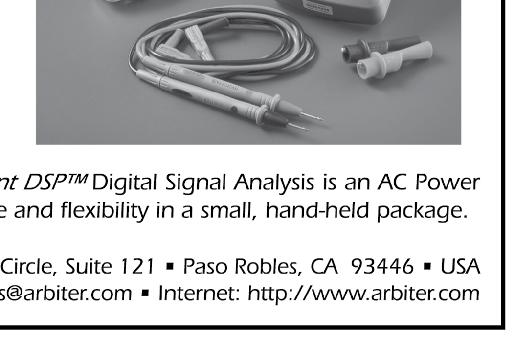

The power quality (PQ) monitor has been an important tool for recording and analyzing the quality of power present at a particular location. The procedure of installing temporary monitors has become a routine exercise for determining power consumption, disturbances, harmonics and other information that is critical for maintaining power quality and reliability.
With the growing popularity of on-line partial discharge (PD) testing, new techniques and instruments are being developed to refine the diagnostic capabilities of these applications. One such new instrument is the Partial Discharge Monitor.
PD can be defined as a localized electrical discharge in an insulation system that does not completely bridge the electrodes. PD activity associated with the aging and degradation of insulation typically increases with the evolution of the defect. Therefore, the measurement of PD activity can be used as a diagnostic tool to assess equipment condition and to locate the defect source, enabling selective intervention to rectify or remove the aging component prior to complete failure.
When surface PD activity is present, tracking occurs across the surface of the insulation which is exacerbated by airborne contamination and moisture. Often moisture combines with the NOx gasses to produce nitric acid which attacks the surrounding metalwork and leads to severe corrosion of the equipment. Insulation surfaces affected by such an acid attack produce an ideal surface for tracking to occur, leading to the creepage distance of the insulator being compromised. Tracking is the result of carbonization of the surface of insulation brought on in the early stages by the breakdown of contaminates.
Surface discharges tend to occur between the particles of a contaminant producing heat, light, smoke, sound, electromagnetic radiation, and ozone and nitrogen gasses. In
the early stages of this type of degradation process, if an air path from the discharge site to the outside of the equipment is present, the high frequency sound waves generated by the partial discharge activity are readily detected using sensitive ultrasonic detection sensors in the 40 kHz range.Surface discharges are best detected using an ultrasonic detection instrument. However, there must be an uninterrupted air path between the discharge site and the instrument to allow the sound pressure waves to be detected externally.
Internal partial discharge occurs within the bulk of insulation materials and is most commonly caused by age, poor materials, or poor quality manufacturing processes. Within all insulation material, however manufactured, microscopic voids or cracks are present. When in use, the insulation has one end connected to high voltage and the other to ground, causing these voids and cracks to charge up and discharge with the 60Hz cycle, like small capacitors. Eventually, because the breakdown strength of air is less than that of the surrounding insulation, the air breaks down with a very small arc, and a partial discharge occurs. These arcs produce heat, light, smoke, sound, and electromagnetic radiation, but as the void is buried within the insulation material, only the electromagnetic radiation is detectable externally.
This discharge action also erodes the voids, making them bigger. As they get bigger, the discharge energy dissipated with each discharge increases in magnitude. During this process, carbonization of the inner surface of the void occurs which progressively builds up to make the void conductive and increases the electrical stress on the next void. This causes the process to be repeated throughout the insulation system, leading to enough conductive voids in the insulation to cause it to fail. This occurs even under normal working voltages and particularly following transient overvoltages caused, for example, by switching operations.
The electromagnetic pulses produced by internal partial discharges are conducted away in every direction by the surrounding metalwork. This charge in motion gives rise to an electric current which, when it impinges on the impedance of the metal casing, leads to a very high frequency voltage pulse. These high frequency voltage pulses (between 0.1 millivolt and a few volts) escape through openings in the metalwork and pass from the inner to the outer surface of the equipment and then to ground. The voltage pulse will stay on the surface of the steelwork, as their high frequency leads to a skin effect.
These pulses were first observed at EA Technology in 1974 by Dr. John Reeves and were termed transient earth voltages (TEVs). They were given this description because they only last for a very short time and are travelling down to earth (ground). It was found after extensive trials that these TEV signals are directly proportional to the magnitude of any active partial discharge activity and the condition of the insulation for switchgear of the same type and model, measured at the same point. This produced a very powerful comparative field based technique for noninvasively checking the condition of electrical equipment of the same type and manufacturer while the equipment is live and in service. When new switchgear is tested for partial discharge under factory conditions, very expensive bench top test equipment is used and the reading is expressed in picocoulombs (pC), a value obtained by direct measurement with the switchgear out of service. Once the switchgear or other equipment has been installed and in service for some time, picocoulomb readings from direct measurements become relatively meaningless, as the individual service history (fault operations, maintenance history) of each item of the medium-voltage equipment will lead to variations in their individual insulation systems. Furthermore, while partial discharge measurements on new switchgear are a very reliable indication of the manufacturing quality as it leaves the factory, it is older switchgear that is at more risk from failure due to partial discharge.
If allowed to continue unchecked, either mechanism (surface or internal partial discharge) will lead to failure of the insulation system under normal working stress, resulting in catastrophic failure of the equipment.
The PD monitor is applied in much the same manner as the power quality monitor, at a specific location usually temporarily but sometimes permanently in the case of critical assets. In the past, PD monitor installation was quite intrusive, requiring coupling capacitors connected directly to the bus which required extensive outages. However, a
relatively new completely nonintrusive PD monitor has been developed. The specialized PD monitor sensors are placed on the external surface of the switchgear to detect internal PD activity. Both TEV sensors used to detect internal insulation defects and ultrasonic sensors used to detect surface defects are magnetically mounted to the outer surface of the switchgear. Installation is completely nonintrusive and does not require an outage or any PPE. Multiple sensors are placed on the switchgear enclosure so that complete coverage is obtained. Four external antennas are placed several feet from the corners of the switchgear. These antennas are useful for detecting external noise signals that may be present.
PD activity can vary due to environmental factors including temperature and humidity. Surface PD has been found to be directly related to relative humidity and can even disappear temporarily during dry conditions. So monitoring the environmental conditions can often provide useful information regarding switchgear condition. The PD monitor is equipped with temperature and humidity sensors so that correlation with PD activity can be obtained.
For the main switchgear, it is recommended that a PD monitor be installed annually for a one week period while the rest of the electrical system is surveyed using handheld PD detectors. The PD monitor can also prove useful to ensure that a known switchgear PD activity does not worsen if production scheduling cannot allow for a prompt outage. In this application, alarm thresholds can be set to alert operations personnel if the PD activity is increasing.
A new generation of nonintrusive PD monitors is very useful to determine insulation quality of medium-voltage switchgear and thus increase reliability. As the usefulness of this technology is discovered, the PD monitor will be applied as commonly as the PQ m.

Don A. Genutis received his BSEE from Carnegie Mellon University. He was a NETA Certified Technician for 15 years and is a Certified Corona Technician. Don’s technical training and education are complemented by twenty-five years of practical field and laboratory electrical testing experience. Don serves as President on No-Outage Electrical Testing, Inc., a Group CBS affiliate that focuses on new inspection technologies performed while the equipment remains in service.








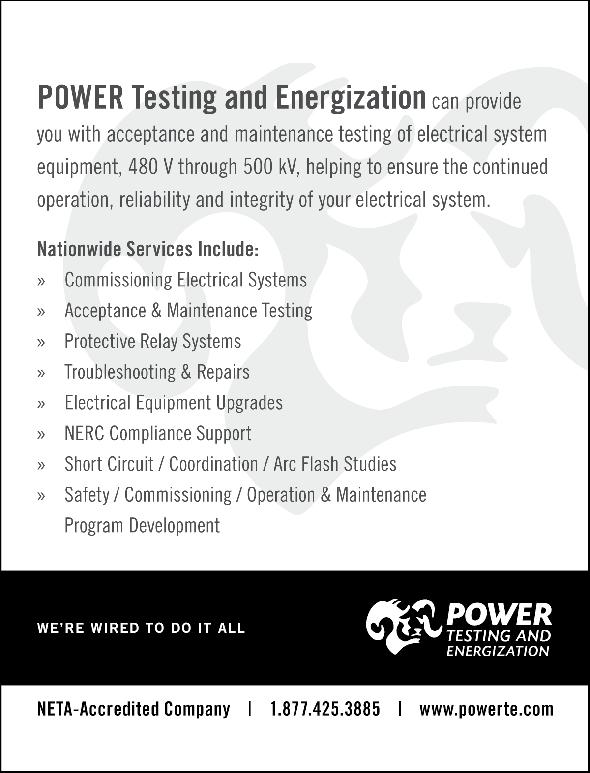


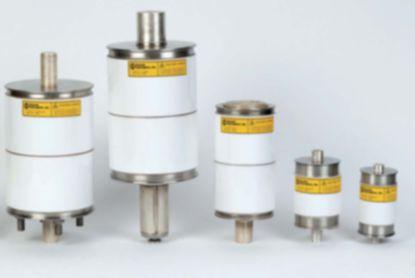

Raytech Products Include a Standard 5 Year Warranty


AccurAcy (resolution 5 Digits):
Range 0.8 … 2000 ± 0.06% at 100V or 40V
Range 2001 … 4000 ± 0.1% at 100V or 40V
FeAtures:
• Automatic measurements of voltage, turns ratio, current, and phase displacement
• Measures power transformers PTs and CTs
• Displays deviation from a nominal ratio
• Displays % error vs. name plate value
• Bright full color touch-screen for easy data entry
Range 4001 … 13000 ± 0.3% at 100V or 40V
Range 13001 … 16000 ± 0.4% at 100V or 40V
• Test voltages of 100V, 40V, 10V, and 1V (for CT Testing)
• Graphical tap changer display
• Automatic phase vector detection
• Enhanced heavy-duty protection circuitry
• Data exchange with USB-Key
• Built-in printer


AccurAcy:
Range 100 mAmp … 15 Amp ± 0.1% Rdg 5 Digit Resolution
Range <25 mAmp 1.2kΩ …10kΩ ± 0.1% Rdg 4 Digit Resolution
Range <25 mAmp 10kΩ …100kΩ ± 0.5% Rdg 4 Digit Resolution
FeAtures:
• Core Demagnetizing Circuit (world exclusive)
• Charges inductive loads up to 1500 Henry
• 2 independent measuring channels
• Heavy-duty protection circuitry
• High power DC supply (15A/30V)
• Resistance range from 0.05 μΩ to 100 kΩ
• Battery or line voltage powered
• Visible and audible indicator for discharge status
• Data exchange with USB-key
• Simple touch-screen operation
• Built-in printer


AccurAcy:
Range 0.8 … 4000 ± 0.08% with 40 Volts (PT Mode)
Range 0.8 … 100 ± 0.08% with 1V … 5V (Auto) (CT Mode)
FeAtures:
• Operates on rechargeable batteries or line voltage
• Can be recharged with line voltage or optional
DC car adapter
• Reverse polarity test
• Continuity test
• Test current up to 1A for CT testing
• Internal storage of the last 50 test results
• RS-232 interface with optional adapter
• Over 1000 measurements without recharging
• TR-1P model includes built-in printer


“Why is the line current to the motor starter less than the current to the motor itself?” was the question I heard Pete ask when I answered my phone. He told me his clamp-on ammeter measured 10 amperes on a feeder to a motor starter. He went on to say that his ammeter measured 30 amperes on the motor feeder itself. He wondered where the extra current came from? How can there be more current delivered to the motor than was delivered to the starter for that motor?
At first, I was also confused. Then I remembered that a power-factor capacitor had recently been installed on that particular motor, so it was logical the motor feeder would have more current traveling through it than what was delivered to the starter itself.
This was an excellent opportunity to spend some time with Pete discussing the effect of powerfactor capacitors. I explained how they impact the power distribution system and its supply of power to motors or for that matter any device that is an inductive load on a system.
BY AL HAVENS E-Hazard.comThis article is too small to go into power-factor correction and its total impact on a power distribution system including various options in applying power-factor correction. It will focus on how power-factor correction impacts power delivery to motors, in particular alternating current (ac) motors.
Basically, every motor, other than those that have permanent magnets in them, requires two current components. One component is current that produces a magnetic field in the stator and the other is current that produces a magnetic field that reacts to the stator’s magnetic field while doing work. In direct current (dc) motors, there are two sets of wires to the motor. One set supplies the stator providing the fixed field and the other set supplies the rotor or armature providing the magnetic field that reacts to the stator field, turning the armature and hence the shaft on which the armature in mounted.
In three-phase ac motors, there is only one set of wires. This set has to provide both the current for the stator magnetic field and the current to create a field in the armature to react against the stator field.
The confusing part is that these two current components in the wires supplying the ac motor do not add arithmetically. That means, for example, that if a particular motor needs 25 amperes to supply its stator’s magnetic field and 40 amperes to do work, the total amperage measured in the motor feeder will not be 65 amperes. It will be approximately 47 amps.
In this example, the motor needs 25 amperes to supply the stator’s magnetic field, no matter how much work this motor has to do. This current must come from the power distribution system. This current, frequently called magnetizing current, is very reactive and can be modeled as having a lagging 90 degree angle with respect to the applied voltage. Load current, on the other hand, is very nearly in phase with the applied voltage, and can be modeled as having a zero angle relative to the applied voltage. Therefore, when these two currents add, they add as vector quantities. Since they are at 90 degrees with respect to each other, the magnitude can be calculated by taking the square root of the sum of the squares of the two currents:

On the other hand, if a power factor capacitor is connected to the motor feeder, it draws current that is at an angle of 90 degrees leading the applied voltage. Because the capacitor’s current is in the reverse direction (180 degrees apart) to the motor’s magnetizing current, the two currents cancel up to the value of the smaller current.
If we connect a capacitor that draws 25 amperes to the load terminals of the motor starter, its 25 amperes will exactly cancel the 25 amperes of magnetizing current drawn by the motor and upstream of the connection point of the capacitor there will only be 40 amperes total current (see Figure 1).
The practical application of this principle is to have two ammeters installed on large low-voltage or medium-voltage motor starters, one labeled line current the other labeled motor current Maintenance personnel will easily be able to determine the functionality and health of the powerfactor capacitors associated with a particular motor by observing the meters’ respective values. If the line current meter reads lower than the motor current meter, all is well with the power-factor capacitors. If the line current and motor current values are the same, the power-factor capacitor has failed. Thus, monitoring power-factor capacitor operation is inherently done each time someone looks at the meter readings. This will save time, too, when troubleshooting to determine if the powerfactor capacitors are functioning.
As described above for the case of a specific motor, the reason the two motor currents do not add arithmetically is that they are vectors operating in different directions. Numbers that add arithmetically are basically just quantities with no direction, called scalars. Numbers that add vectorially are numbers that have a quantity and a direction. So, when working with power- factor applications, the direction of vectors must be considered. “Working” current is the current that has a zero degree vector (See Figure 2). Stator magnetizing current has a negative 90 degree vector. Summing the two vectors yields a third vector, line current, with a certain angle and length.Since Figure 2 is a right triangle, one method for determining vector values is using Pythagorean’s Theorem, A2 + B2 = C2 (see Figure 3).
A different approach to the problem above is to set A = working current, B = stator magnetizing current, and C = line current. In our example above, we had A = 40 amperes and B = 25 amperes. We can use algebra to determine the value of C, by using the formula C = (A2+B2)0.5, as above. This can easily be done in a spreadsheet. Another method is to use trigonometry, using the tangent and cosine functions. Using the same designations as above, tan θ = B/A = 25 amperes/40 amperes = 0.625. Using a calculator with trigonometric functions, tan -1(0.65) yields an angle of 32 degrees. Therefore C = A/cos θ = 40 amperes/0 .848 = 47.2 amperes.
To provide a quick and easy method to determine the functionality of the power-factor capacitors in large low-voltage or medium-voltage motors, have an ammeter measuring line current and an ammeter measuring motor current. Because a power-factor capacitor essentially cancels part of the motor’s magnetizing current, the line current will always be less than the motor current. This will be the case unless the power-factor capacitors fail. If that happens, the meters will indicate the same value.

Al Havens brings more than 40 years of electrical safety experience to the classroom, 26 of which as Senior Electrical Engineer for U.S. Gypsum. He has extensive experience in industrial plant and underground mine power distribution upgrades and is expert in the design and commission of high resistance ground, switchgear battery and automatic power factor systems.
Al served as head of the USG Energy Monitoring Task Force and established their NFPA 70E compliance and training programs. He has presented to both the IEEE Electrical Safety Conference and the International Electrical Testing Association (NETA) Conferences on electrical equipment and high resistance grounding, and worked extensively on compliance issues with the Mine Safety and Health Agency (MSHA).



Featuring quality, reliable, on-time service and support for all brands and types of solid state power electronics.
Power electronics are our business
Let us suppoort you with our quality repair, calibration and servicing of your solid state equipment. We also buy, sell and trade:
•Communications devices for power equipment
•Protective relays
•Circuit breaker trip devices
•Motor overload relays
•Rating plugs


electronics Corp. USA

Different test devices and methods are used in the market to verify the performance of current transformers during development, production, installation and maintenance. This article describes an innovative solution to test current transformers at all lifecycle stages by using a revolutionary testing method called “the modeling concept.”

Current transformers are used in electrical power systems for relaying and metering purposes. Depending on the application for which they are used, the current transformers are designed differently.
The current transformers for metering and protection applications work basically the same way - transforming high power primary signals to lower secondary values. However, while current transformers used for protection applications operate to well above the load current, the current transformers for metering purposes must go into saturation directly above the load current level to protect the connected meter.
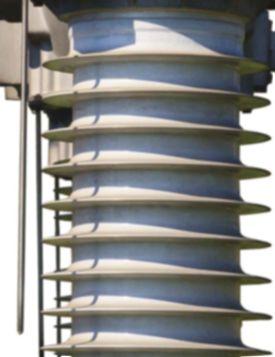

Current transformers play an important role in the protection of electrical power systems. They provide the protection relay with a replication of the primary current so that it can operate according to its settings. The transformation of the current values from primary to secondary must be accurate during normal load conditions and especially during fault conditions on the primary side (when currents up to 30-times the nominal current can be expected).

Today, energy is supplied by many different sources including alternative energy sources like solar and wind power. To guarantee accurate billing in this competitive electricity market, additional metering points are necessary. It is, therefore, important to have the entire metering circuit verified, as the meter is only as accurate as the instrument transformers connected to it. This makes the testing and verification of current transformers up to the 0.15 accuracy class essential. However, on-site testing of CTs of the 0.15 accuracy class is particularly critical as disturbances from power lines can influence the measurement results.
Conventional testing methods apply a signal on one side and read the output signal on the other side. Several ways of conventional testing are possible:
1. The traditional way of testing a current transformer is to apply a high current to the primary side and read the signals on the secondary side. By using different burdens or injecting overcurrents, various situations can be simulated and the signals on the secondary side can be measured and analyzed.
However, this method is time-consuming and requires a lot of equipment. Sometimes it is not even feasible as very high power is required, e.g., for on-site testing of a bushing current transformer inside a power transformer or a shunt reactor.
2. Another common testing scenario for current transformers is injecting a defined test voltage on the secondary side and reading the reverse transformed value on the primary side. Unfortunately, using this scenario, some parameters like accuracy and knee point (excitation curve), can only be tested with limitations. This is due to the scenario’s restrictions in accuracy caused by the very low signals in use and the maximum voltage of approximately 2000 V which can be applied to the secondary side of current transformers. Other important parameters like the transient dimensioning factor, the accuracy limit factor, the safety factor, composite errors, time constants, and many others cannot be tested at all.
As both methods have limitations, OMICRON has developed an innovative method of testing CTs.
OMICRON developed a CT analyzer test device which uses a revolutionary testing concept. The concept of modeling a current transformer allows for a detailed view of the transformer’s design and its physical behavior. The test device builds up a model of the current transformer by using initial data, measured automatically during the test. Based on this model the test device is able to calculate parameters like the secondary terminal voltage, Vb,the accuracy limiting factor (ALF), and the safety factor (FS), and simulate the CT’s behavior under different burdens or with various primary currents. The analyzer measures the transformer’s copper and iron losses according to its equivalent circuit diagram. While copper losses are described as the winding resistance, RCT, iron losses are described as the eddy losses or eddy resistance Reddy, and hysteresis losses as hysteresis resistance RH. With this detailed information about the core’s total losses, the CT analyzer is capable of modeling the current transformer and calculating the current ratio error as well as the phase displacement for any primary current and secondary burden. Therefore, all operating points described in the relevant standards for current transformers can be determined. The model also allows important parameters such as the residual magnetism, the saturated and unsaturated inductance, the symmetrical short-current factor (overcurrent factor) and even the transient dimensioning factor (according to the IEC 60044-6 standard for transient fault current calculations) to be assessed.
Within seconds a test report, including an automatic assessment according to IEEE C57.13 or C57.13.6 (Standard for High Accuracy Instrument Transformers) is generated. The CT analyzer offers a very high testing accuracy of 0.05% (0.02% typical) for current ratio and 3 minutes of angle (1 min typical) for phase displacement.
Figure 1: Equivalent Circuit
Diagram of a Real Current Transformer

A new measurement function for the CT nalyzer allows current transformers to be tested for residual magnetism.
Residual magnetism may occur if a current transformer is driven into saturation. This can happen as a consequence of high fault currents containing transient components, or direct currents applied to the current transformer during winding resistance tests or during a polarity check (wiring check). Depending on the level of remaining flux density, residual magnetism dramatically influences the functionality of a current transformer.

Figure 2: Hysteresis Curve at the Max. Saturation Point Showing the Possible Area for Residual Magnetism
Since remanence effects in protective current transformers are not predictable and barely recognizable during normal operation, these effects are even more critical. Unwanted operation of the differential protection may be caused. Protective relays also may show a failure to operate in case of real over-current as the current transformer’s signal is distorted due to the residual magnetism in the CT core.
Once the current transformer is magnetized, a demagnetization process is necessary in order to remove residual magnetism. This can be achieved, e.g., by applying an ac current with similar strength as the current which caused the remanence. In a second step, the current transformer is demagnetized by reducing the voltage gradually to zero.
The CT analyzer performs the residual magnetism measurements prior to the usual CT testing cycle as it automatically removes residual magnetism after testing. In order to determine the residual magnetism the CT analyzer drives the core into positive and negative saturation alternately until a stable symmetric hysteresis loop is reached. The CT analyzer then calculates the initial remanence condition to determine whether the core was affected by residual magnetism. The results are displayed as absolute values in voltage per second as well as in percent relative to the saturation flux (Ψs: defined in the IEC 60044-1) on the residual magnetism test card. Additionally, the remanence factor Kr is shown on the test card.


Figure 3 and Figure 4: Demagnetization Principle of Iron Cores

The CT analyzer au tomatically demagnetizes the current transformer when the test is complete.
After installation, current transformers are typically used for 30 years. In order to guarantee a reliable and safe operation over the life time of the CTs, a high level of quality during design phase, manufacturing process, and installation is essential. Therefore, several quality tests are performed from development to installation. After installation, CTs should be tested on a regular basis to ensure correct functioning over the entire life time.
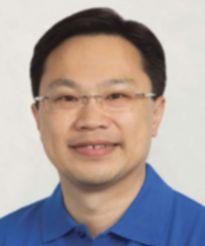
Peter Fong received a BS in Electrical Engineering from the University of British Columbia in 1988. He joined OMICRON in 2000, where he presently holds the position of Application Engineer. Prior to joining OMICRON, he worked for 12 years at BC Hydro and two years at a relay manufacturer in the US. Peter Fong is a Professional Engineer (APEGBC) and a member of IEEE.
Figure 5: Test Card of the CT Analyzer Showing the Measurement Results of a Residual Magnetism Test
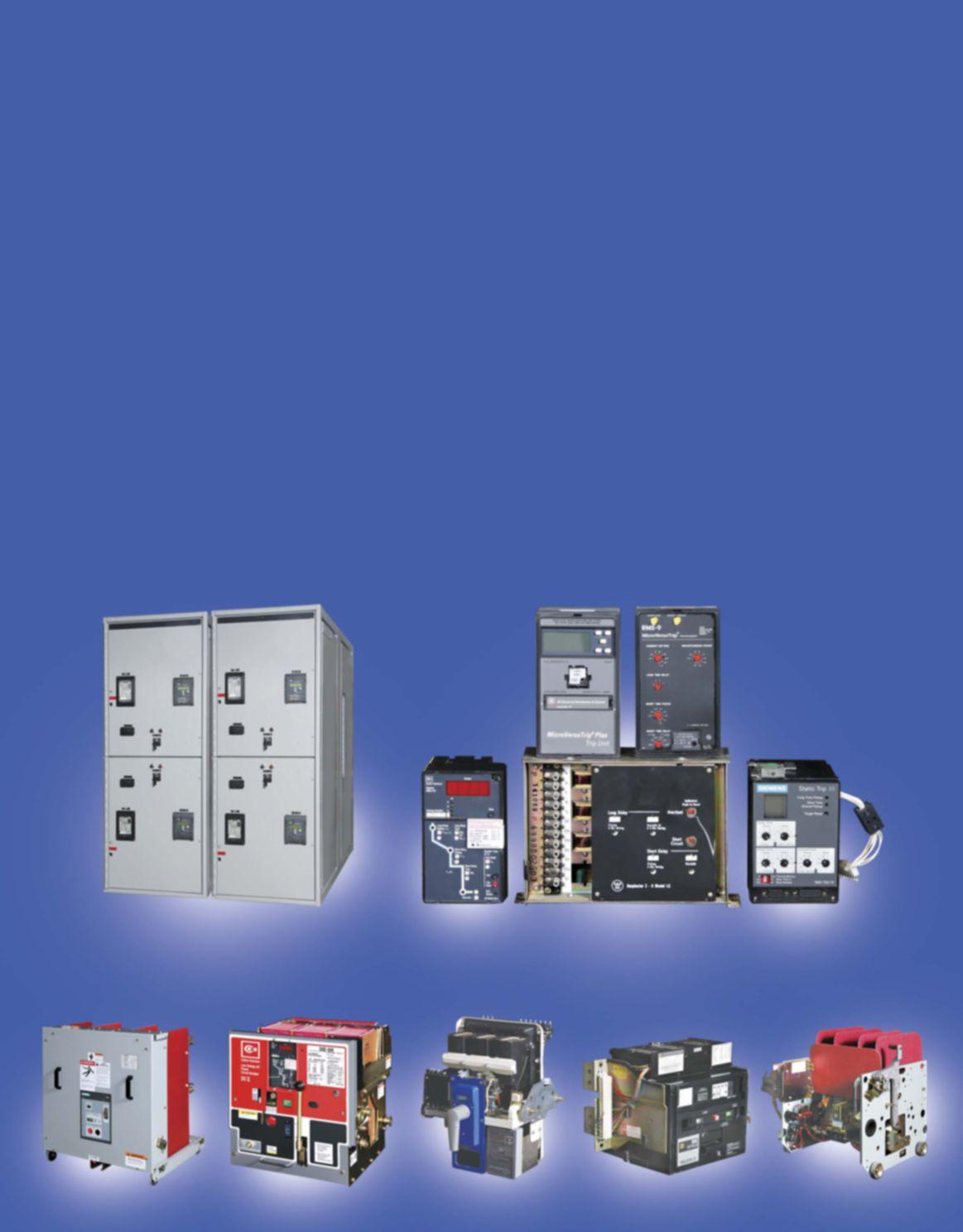
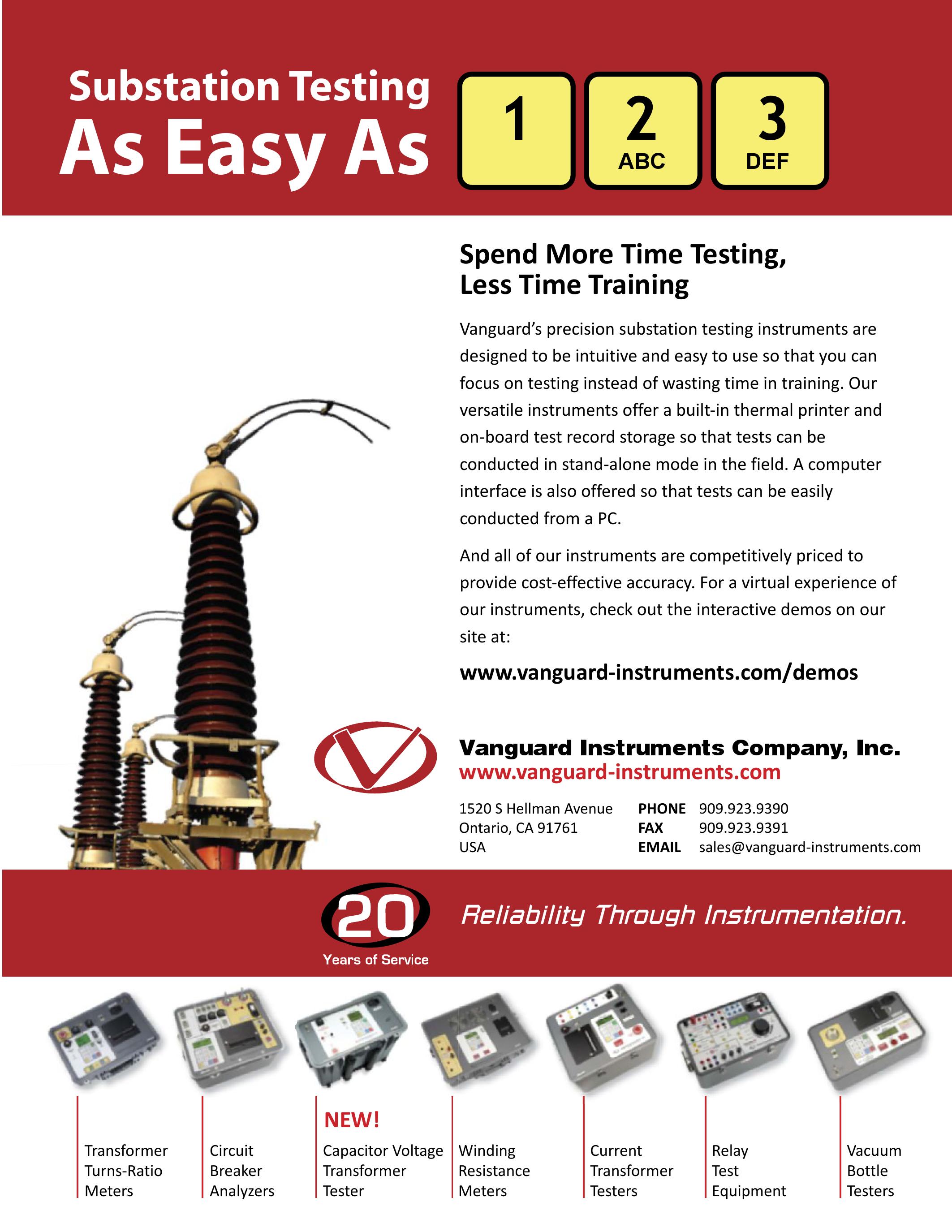





The NETA Board of Directors and the NETA Promotions and Marketing Committee met in beautiful San Louis Obispo, California during June 23-24, 2011. Both meetings were very productive. The Promotions Committee reviewed a year of incredible progress that included NETA’s brand development as well as outreach to new markets and the expansion of existing programs. Plans were made for the upcoming year, with new initiatives that are focused on heightening NETA’s presence in the acceptance and commissioning markets.
The Board of Directors had a full slate to cover between the review of the fiscal year, membership business, and new programs for the coming year. The President was happy to report that NETA continues to maintain strength as an organization through the support of its NETA Accredited Companies, Affiliates, and friends worldwide. The Executive Director reported that planning for PowerTest 2012 is in full swing, and this year is shaping up to be the biggest event yet with an expanded tradeshow floor, new technical tracks, and a fantastic social calendar including NETA’s 40th Birthday Celebration at the Dallas Cowboy’s stadium.
These successful meetings were concluded with a visit to the verdant hills of Edna Valley, California, where former NETA Board Member, Jean-Pierre Wolff, and his lovely wife, Elkie, hosted a gourmet, locally-sourced dinner in the wine cellar of their chateau at Wolff Vineyards. The meal was accompanied by music, dancing, singing, and of course, Wolff Vineyards’ wine. The combination of great achievements in business coupled with heartfelt friendships continues to make NETA meetings a priority for each member who attends.




Living and working in extreme summer weather presents challenges. The combination of high temperatures, humidity, and radiant heat can result in extremely dangerous conditions for workers. Because of this, one must ask the question: When do you stop work due to summer weather conditions? This article will provide information associated with working in extreme summer weather conditions. It will also provide recommendations that both the employer and the employee should consider for working safely during the summer months.
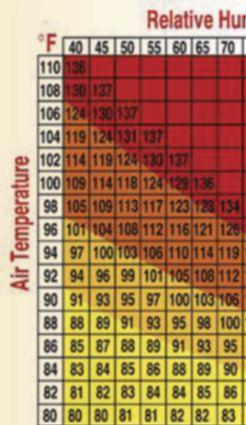


In an effort to better describe heat stress, the figure below is provided. The heat index was developed as a combination of temperature and relative humidity to provide an apparent temperature of the combined environmental factors.
The body reacts to high temperature exposure by circulating blood to the skin to increase skin temperature and allow the body, through convection, to give off its excess heat through the skin. Unfortunately, when physical labor diverts blood to the muscles, less blood is available to flow to the skin and release the heat. Sweating is another means the body uses to maintain a stable internal body temperature. However, sweating is effective only if the humidity level is low enough to permit evaporation. If the body cannot get rid of the excess heat, it will store it. Performing physical work in a high heat index may lead to serious health problems, such as heat exhaustion and heatstroke.





Four environmental factors affect a worker’s level of heat stress: temperature, humidity, radiant heat (such as from working directly in the sun), and air flow. Perhaps more important to a worker’s level of heat stress are personal characteristics such as age, weight, fitness, medical condition, and acclimatization to the heat.
Heat exhaustion is the most common heat stress ailment. Heat exhaustion happens when a worker sweats a lot and does not replenish the fluids and salts. The simple way to describe the worker is wet, white, and weak. Heatstroke is the most serious heat stress ailment, but is less common. Heatstroke is caused by the failure of the body to regulate its core temperature. Sweating stops and the body cannot get rid of excess heat. Victims will die unless they receive proper treatment promptly.
Not only can high temperatures and humidity be hazardous to workers, they can also adversely affect the equipment the worker is using. Based on a simple sampling of electrical test equipment, typical operating temperature ranges were -4 to +122° F (-20 to +50° C), with equipment




storage temperature ranges of -13 to +149° F (-25 C to +65° C). Typical humidity limitations are 90 percent at 104° F (40° C).
Based on the information associated with heat index, combined with the physical limitations of the test equipment, I recommend limiting worker exposure to summer weather conditions by restricting outside work anytime the heat index is above 104° F. It should be noted that working in direct sunlight could add up to 15° F to the heat index.
Additionally, other work rules and recommendations should be considered when working in extreme winter weather conditions. One of the more complete lists of suggested work rules and recommendations can be found on the Centers for Disease Control and Prevention web site (www.cdc.gov/niosh/topics/heatstress/).
On this website, the following National Institute for Occupational Safety and Health (NIOSH) recommendations are provided:
Employers should take the following steps to protect workers from heat stress:
• Schedule maintenance and repair jobs in hot areas for cooler months.
• Schedule hot jobs for the cooler part of the day.
• Acclimatize workers by exposing them for progressively longer periods to hot work environments.
• Reduce the physical demands of workers.
• Use relief workers or assign extra workers for physically demanding jobs.
• Provide cool water or liquids to workers.
o Avoid drinks with caffeine, alcohol, or large amounts of sugar.
• Provide rest periods with water breaks.
• Provide cool areas for use during break periods.
• Monitor workers who are at risk of heat stress.
• Provide heat stress training that includes information about:
o Worker risk
o Prevention
o Symptoms
o The importance of monitoring yourself and coworkers for symptoms
o Treatment
o Personal protective equipment
Workers should avoid exposure to extreme heat, sun exposure, and high humidity when possible. When these exposures cannot be avoided, workers should take the following steps to prevent heat stress:
• Wear light-colored, loose-fi tting, breathable clothing such as cotton.
o Avoid nonbreathing synthetic clothing.
• Gradually build up to heavy work.
• Schedule heavy work during the coolest parts of day.
• Take more breaks in extreme heat and humidity.
o Take breaks in the shade or a cool area when possible.
• Drink water frequently. Drink enough water that you never become thirsty.
• Avoid drinks with caff eine, alcohol, and large amounts of sugar.
• Be aware that protective clothing or personal protective equipment may increase the risk of heat stress.
• Monitor your physical condition and that of your coworkers.
Extreme summer weather conditions can result in heat stress, which can be extremely dangerous, particularly with outdoor workers exposed to direct sunlight. To enhance worker safety in these summer conditions, work planning and work rules should be implemented to limit worker exposure by restricting outside work anytime the heat index is above 104° F.

Living and working in Iowa in the winter presents some challenges. The combination of low temperatures, wind, and snow can result in extremely dangerous working conditions for workers. Because of this, one must ask the question: When do you stop work due to winter weather conditions? This article will provide information associated with working in extreme winter weather conditions. It will also provide recommendations that both the employer and the employee should consider for working safely during the winter months.
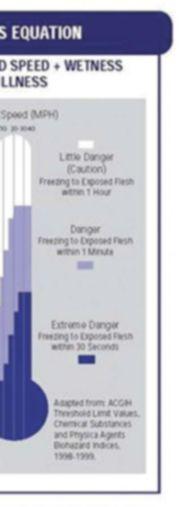
Extreme cold weather is a dangerous situation that can bring on health emergencies in susceptible people, such as outdoor workers and those who work in an area that is poorly insulated or without heat. Excessive exposure to cold is referred to as cold stress. In an effort to better describe cold stress, the figure below is provided from OSHA Bulletin 3156 (1998).
considered factors for cold stress. Whenever temperatures drop decidedly below normal and as wind speed increases, heat can more rapidly leave your body. These weather-related conditions may lead to serious health problems such as hypothermia or frostbite.
The victims of hypothermia are unable to notice the symptoms; therefore, their survival depends on coworkers’ ability to identify symptoms and to seek medical help. Warning signs of hypothermia can include complaints of nausea, fatigue, dizziness, irritability, or euphoria. Workers can also experience pain in their extremities (hands, feet, ears, etc.) and severe shivering. Workers should be moved to a heated shelter and seek medical advice when appropriate.
Not only can cold temperatures be hazardous to workers, cold temperatures can also adversely affect the equipment they are using. Based on a simple sampling of electrical test equipment, typical operating temperature ranges were -4 to +122° F (-20 to +50° C), with equipment storage temperature ranges of -13 to +149° F (-25 C to +65° C). Additionally, operating temperature ranges for laptop computers are even more restrictive at 14 to +122° F (-10 to +50° C) due to their LCD screens.





For Iowa, the temperature and wind conditions presented with OSHA’s cold stress equation are probably appropriate. However, what constitutes cold stress and its effects can vary across different areas of the country. In states that are relatively unaccustomed to winter weather, near freezing temperatures are
Based on the information presented with OSHA’s cold stress equation, combined with the physical limitations of the test equipment, I have recommended limiting worker exposure to winter weather conditions in Iowa by restricting outside work anytime the outside temperature is below 10° F. As stated above, this may not be appropriate for other areas of the country that are not accustomed to working in the winter weather conditions similar to those of Iowa.




Additionally, other work rules and recommendations should be considered when working in extreme winter weather conditions. One of the more complete lists of suggested work rules and recommendations can be found on the Centers for Disease Control and Prevention web site (www.cdc.gov/niosh/topics/coldstress/).
On this website, the following National Institute for Occupational Safety and Health (NIOSH) recommendations are provided:
Employers should take the following steps to protect workers from cold stress:
• Schedule maintenance and repair jobs in cold areas for warmer months.
• Schedule cold jobs for the warmer part of the day.
• Reduce the physical demands of workers.
• Use relief workers or assign extra workers for long, demanding jobs.
• Provide warm liquids to workers.
• Provide warm areas for use during break periods.
• Monitor workers who are at risk of cold stress.
• Provide cold stress training that includes information about:
o Worker risk
o Prevention
o Symptoms
o The importance of monitoring yourself and coworkers for symptoms
o Treatment
o Personal protective equipment
RECOMMENDATIONS
Workers should avoid exposure to extremely cold temperatures when possible. When coldenvironments or temperatures cannot be avoided, workers should follow theserecommendations to protect themselves from cold stress:
• Wear appropriate clothing.
o Wear several layers of loose clothing. Layering provides better insulation.
o Tight clothing reduces blood circulation. Warm blood needs to be circulated to the extremities.
o When choosing clothing, be aware that some clothing may restrict movement resulting in a hazardous situation.
• Make sure to protect the ears, face, hands and feet in extremely cold weather.
o Boots should be waterproof and insulated.
o Wear a hat; it will keep your whole body warmer. (Hats reduce the amount of body heat that escapes from your head.)
• Move into warm locations during work breaks; limit the amount of time outside on extremely cold days.
• Carry cold weather gear such as extra socks, gloves, hats, jacket, blankets, a change ofclothes, and a thermos of hot liquid.
• Include a thermometer and chemical hot packs in your first aid kit.
• Avoid touching cold metal surfaces with bare skin.
• Monitor your physical condition and that of your coworkers.”
Extreme winter weather conditions can result in cold stress which can be extremely dangerous, particularly with outdoor workers and those who work in an area that is poorly insulated or without heat. To enhance worker safety in these winter conditions, work planning and work rules should be implemented to limit worker exposure by restricting outside work anytime the outside temperatures are substantially below normal temperatures. Additionally, appropriate clothing recommendations should be implemented to mitigate the effects of the winter conditions.
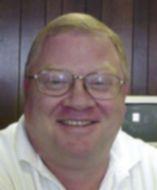
Lynn Hamrick brings over 25 years of working knowledge in design, permitting, construction, and startup of mechanical, electrical, and instrumentation and controls projects as well as experience in the operation and maintenance of facilities.
Lynn is a Professional Engineer, Certified Energy Manager and has a BS in Nuclear Engineering from the University of Tennessee.
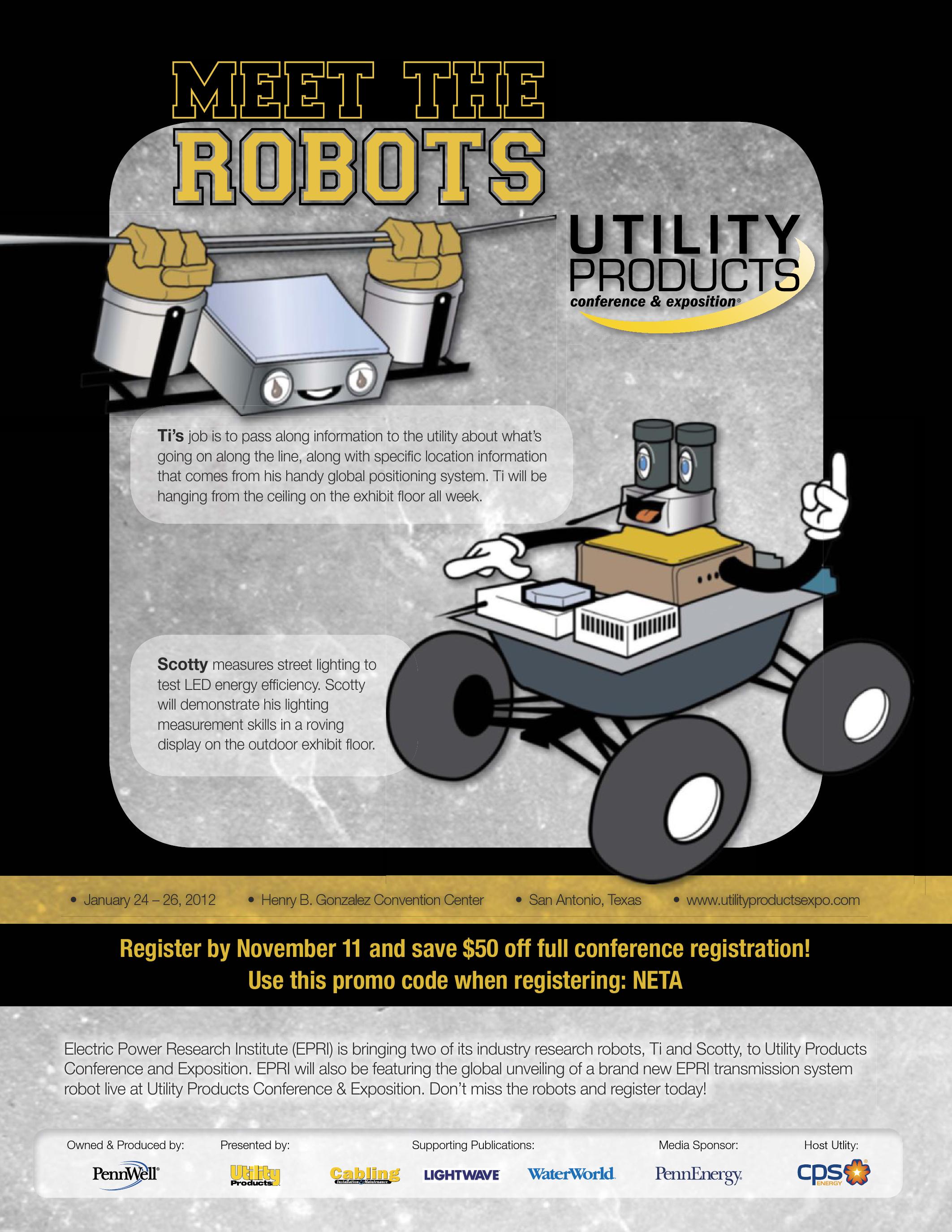


• 50V & 100V Megohmmeters:

For testing insulation resistance of phone cables, data cables and power cables
• 500V Megohmmeters:
For testing the quality of insulation on equipment powered from sources up to 240VAC
• 1000V Megohmmeters:
For testing equipment powered from sources up to 480VAC
• 5000V Megohmmeters:
For testing large motors, generators, transformers, cables and other large rotating machinery
• Computer Controlled Models: AC powered, battery powered or hand-cranked models
• Choose from analog, digital or graphical displays
• Perform insulation resistance tests into the GΩ and TΩ ranges
www.aemc.com



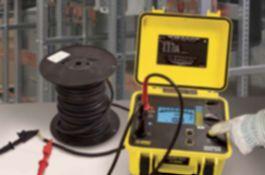


















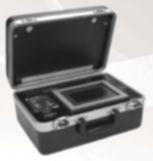



Certainly, ground resistance testing is affected by the weather as much as any common electrical test, and more so than many. Both the instrument and the test item are affected. In this instance, the test item is not so readily managed as a motor or electrical circuit, which can be dried, cleaned, placed in a controlled environment or some other adaptation to accommodate easy or standardized testing. Here, the test item is actually a complex interplay between the grounding electrode and its soil environment. Both of these elements will be examined in turn.
The soil component can be a relatively tight hemisphere around a ground rod, or a rather vast expanse surrounding a large grid. The composition of the soil itself constitutes a baseline for its resistance with types such as loam and clay exhibiting relatively low resistivity (good grounding) while others like sand and rock are typically quite high. Superimposed on basic soil structure are the effects of weather, in the form of moisture and temperature. These factors too have a broad range of influence on electrical measurement.
It should come as no surprise that a paramount consideration is moisture. A good ground is a low resistance ground, and the reciprocal of low resistance is high conductivity. Whether or not soil is a good conductor is a point that must be considered from perspective. Compared to copper, certainly not. Soil would hardly function in any effective manner if constricted into a long strand, as copper is in a wire. But the advantage of the Earth (that is, the planet itself, or the immediate portion of it) is simply that there is so much of it. Fault current from a grounded electrical system can be dissipated effectively once it has cleared the immediate hurdle of transferring from the electrode into the surrounding soil and to infinite earth. This current flow is promoted by moisture and dissolved ions, not unlike the function of a battery. As moisture content increases, soil resistivity decreases. The degree of reduction is initially dramatic, but reaches the “law of diminishing returns” and becomes progressively less so. An illustrative example is a study of top soil where resistivity dropped from 165,000 Ω-cm to 53,000 Ω-cm as moisture content increased from 5 to 10 percent. But the same study showed only a decrease from 21,000 to 12,000 Ω-cm as moisture went from 15 to 20 percent, with decidedly smaller decrements thereafter (Table 1). As a general rule of thumb, 18 percent moisture can be considered about a saturation level, beyond which the change becomes more academic than functional. However, soil types do vary enormously and the effects of moisture may vary accordingly. So it is wise to perform an actual study and rely on tables only as a guideline.
BY JEFF JOWETT Megger*From “An Investigation of Earthing Resistance” by P.J. Higgs, I.E.E. Journal, vol. 68, p. 736, February 1930
It is obvious, then, that weather, especially in the form of rainfall, has a dramatic effect on ground resistance and the performance of a grounding system. Rainfall is not the only variable, but certainly a major one in explaining the sometimes confusing effectiveness of grounding systems at different times and in different locations. The same design, protecting the same equipment, will perform well in one location but poorly in another, or seem to be reliable through numerous known faults only to unexpectedly fail at another time. Equipment is lost during a fault clearance on a system that had tested well for ground resistance and was thought to be fully protected.
The other major weather component, of course, is temperature. This does not have as profound an effect as does moisture, but still must be taken into account. Temperature effects can vary in opposite directions on different types of material, so it is wise not to generalize. In soil, decreasing temperature slows the movement of ions and decreases conductivity. Again, the battery analogy holds. The truly critical change occurs over a single degree when going from liquid to ice. If the ground becomes frozen, ice immobilizes the ion flow and resistivity takes a quantum leap. A typical study is once again illustrative. On sandy loam, a drop from 50° to 32° F was found to increase resistivity from 9900 to 13,800 Ω-cm, but in going from liquid to freezing, the same sample increased resistivity to 30,000 Ω-cm! For ground electrode installation, this means that the working structure must be below the frost line, whether that be permafrost or the anticipated worst winter case. Deep-driven rods can ultimately achieve the necessary contact with unfrozen soil, but in areas of shallow bedrock, frost can present a double whammy to the use of multiple shallow rods.
*For sandy loam; moisture content, 15% by weight; temperature 63º F (17º C)
In keeping with the battery analogy, ions are the other critical element in soil conductivity. De-ionized water is, in fact, an effective insulator, but salts in the soil provide the necessary ions to promote current flow. The concentration of salts follows the same pattern as that of moisture percentage. In a typical study done on sandy loam, an increase in percentage of salt by weight of moisture from 0.1 to 1 percent decreased resistivity from 1800 Ω-cm to 460 Ω-cm, while a further increase from 5 to 10 percent decreased it only from 190 Ω-cm to 130 Ω-cm (Table 2). Ion concentration is much more a function of fundamental soil composition than of weather, but weather is not entirely without its effect. Furthermore, that effect might seem counterintuitive. Certain granular types of soil, sand being an example, do not hold ions well, and a concentration of rainfall can actually wash ions away and decrease conductivity. It might be reasonably expected that after a heavy rain, the soil would be saturated with water and a ground test would be expected to read comparatively low. In most instances, this would be true but a surprise may occur, and if it does, make a closer examination of the soil type. Loss of ions is the likely culprit.
Freezing presents another potential problem, and one that is insidious because it is completely unseen. That is, freezing and thawing can exert a mechanical strain on the grounding electrode apart from the electrical stress applied by fault clearance. Grids can separate and sections become lost from connection to the electrical system. The most extreme of weather conditions, lightning, can have a similar effect. Of course, lightning does not have the long-term effect of moisture or temperature, but for the milliseconds that it lasts, it can disintegrate a grounding electrode below grade. The overall effectiveness of what remains can be readily determined by a routine ground test, but highcurrent grid testers are also available that can indicate damage to the point-to-point structure of the grid itself. This information can be valuable in repairing the grid in order to head off further disintegration.
Weather averaged out over representative periods produces climate. The one effect to be aware of here is the impact on the water table. This is more likely to be man-mad, by activities like well drilling, but whether man-made or climatic, a change in water table will affect ground resistance. If the water table drops, as by lesser rainfall of the siphoning off from wells, a grounding electrode that was installed in good conductive soil may later be sitting in a much drier environment.
What is the effect of all this on ground testing? More than anything, it is important to be aware of the possibilities and not treat ground testing as a once-and-done. The results of a ground resistance test---an installation test, for instance---will be heavily influenced by recent weather conditions. At the time of installation, a once-and-done test could leave the electrical system and associated equipment protected for part of the year only. Around the calendar, the resistance on any given day can vary mightily, and a fault clearance event occurring on the high end of this cycle could result in loss of equipment. Put fundamentally, a ground electrode is only as good as its worst day. In general, grounding conditions are optimal in spring and autumn when weather conditions tend to be moist and reasonably warm. In summer, drought can put the electrical system at risk, and in winter, freezing can present a similar danger. If an installation test is made at an optimal time and just meets spec, there is a high risk of it being considerably out of spec at another time of year. Specialized grounding equipment is available to mitigate this sawtooth effect by artificially creating a more stable environment around the electrode. This can be accomplished by appropriate backfills, chemical rods, and similar treatments (Fig. 1). But don’t overlook the effects these treatments may have on concrete foundations, water table, environmental regulations and even the electrode itself. The additional maintenance that may possibly be required must also be taken into account.


Knowledge is the most effective tool for field work, and it becomes that much more valuable in applications where variables are as large and uncontrollable as they are in ground testing. Assess the site and recent conditions in order to make an educated decision as to where test results may fall on the min/max cycle, then proceed accordingly. At the least, arrangements should be made to retest at a suspected worst time. If a maintenance schedule is to be established, be judicious about the interval. For most electrical maintenance, a regular schedule, for instance annually or semiannually, is the order of the day, but be careful not to apply this practice to ground maintenance. Testing at regular intervals will result in readings being taken under the same general weather conditions year in and year out. If these are optimal times of year, a false sense of security can develop. Instead, test at irregular intervals such as 5, 7, or 11 months, so that all times of year and all weather conditions will be evaluated. A worst case will be recognized, and, if necessary, the grid can be expanded or improved so that there will be no unpleasant surprises.
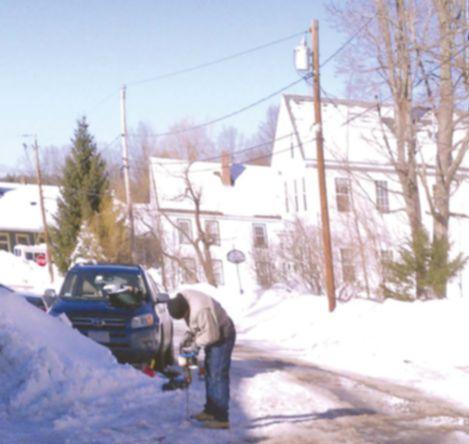





Testing around the calendar may result in the disagreeable necessity of working in snow. “When you have to put food on the table in the wintertime, you have to think of these things,” says Burt Brooks of Power Quality & Ground Testing LLC. It may seem counterintuitive, but in frigid climes, snow can provide an advantage. First, the test rods must be driven through the frost layer. The ground tester must establish a minimum amount of current through the soil in order to meet its measurement parameters and to sense the voltage drop across the measured resistance. Modern testers include indicators that will warn the operator if these parameters are not being met. Additional measures must then be taken, such as driving deeper rods, to bring the test setup within specifications. Pouring hot water provides only a marginal temporary advantage and can backfire by freezing solid around the probe and making it near impossible to remove. Once an adequate setup is accomplished, Brooks advises, testing under snow is just as reliable as at any other time. Where snow actually can afford an advantage is when it falls early in the season before the first major frost. Snow may then insulate the ground and limit frost penetration to more workable depths, say six to eight inches. If snow has been plowed or drifted away, frost penetrates deeper and test results may be rendered less consistent. Testing under snow can actually be more reliable. Just shovel away an area large enough to drive the test rods.
The final consideration is that of the test instrumentation itself. No one is likely to want to perform a ground test in a driving rain, and lightning conditions, even if miles away, are to be avoided because of the risk to the operator. Dangerous voltages developing on the power lines can be
transmitted through the grounding system and will appear at the terminals of a tester if a test is in progress. But aside from these extreme circumstances, ground testing can be performed on moist or rainy days, and the sudden appearance of a shower need not send the operator scurrying. The determining factor here is the IP rating of the instrument. This rating should be available in the instrument’s specifications and is commonly referred to as ingress protection. It was established by the International Electrotechnical Commission (IEC) in Standard #529, and provides a means of evaluating the effectiveness of an instrument’s casework in keeping out dirt and moisture. The IP rating consists of two numbers, the higher, the better. The first number indicates how well the instrument is sealed against particle invasion, with “6” being dust tight. Quarries and mines are particularly bad environments in this regard, while a steady wind in a dusty environment can also pose a hazard to the instrument. The second number refers to moisture ingress, with “8” the highest rating representing continuous immersion. Since ground tests are not performed under water, this would be overkill, but note the IP rating and obtain an instrument that is adequate to the rigors of the field.
Armed with knowledge and a good instrument, the skilled technician will be a match for anything the weather can deal.
MEGGER®, A Simple Guide to Earth Testing
MEGGER, Getting Down to Earth
Power Quality & Ground Testing LLC, Newton, MA

Jeffery R. Jowett is a Senior Applications Engineer for Megger in Valley Forge, Pennsylvania, serving the manufacturing lines of Biddle, Megger, and multi-Amp for electrical test and measurement instrumentation. He holds a BS in Biology and Chemistry from Ursinus College. He was employed for 22 years with James G. Biddle Co. which became Biddle Instruments and is now Megger.











1. Which state had the most heatrelated fatalities in 2010?




In order from highest to lowest:
a. Nevada 23
b. Pennsylvania/ Tennessee (tied) 22
c. Mississippi/ New York (tied) 10
d. Arkansas 7
Texas had four and Florida had 1. Louisiana and Maryland both had 6. These numbers were quite a surprise.
ANSWER 2
2. Which state had the most cold weather-related fatalities?
In order from highest to lowest:
a. Illinois 18
b. Tennessee 6
c. Mississippi 3
d. Florida 2
Indiana, Kentucky, Louisiana, South Carolina and Wisconsin all had 1 each. What’s going on in Illinois?

3. Which state had the most weatherrelated fatalities in 2010?
In order from highest to lowest:

a. Tennessee 53
b. Arkansas 36
c. Illinois 29
d. Mississippi, Texas and Pennsylvania 27
ANSWER 4
4. What are the signs of heatstroke?
Recognizing the symptoms of heatstroke is important to surviving heatstroke.
a. Skin is hot to the touch
b. Rapid strong pulse
c. Severe headache
d. Nausea
e. Possible unconsciousness

5. What steps should you take to treat heatstroke?
If someone you are working with exhibits the symptoms of heatstroke, do the following:

a. Move them into the shade
b. Call 911
c. Lie on your back with the head and shoulders elevated
d. Remove outer layers of clothing, if possible
e. Wet underlayers with tepid water (not warm or cool)
f. Drip water on skin to cool slowly
g. Rehydrate with small sips of water once temperature comes down some (if conscious)
NFPA Disclaimer: Although Jim White is a member of the NFPA Technical Committee for both NFPA 70E “Standard for Electrical Safety in the Workplace” and NFPA 70B “Recommended Practice for Electrical Equipment Maintenance,” the views and opinions expressed in this message are purely the author’s and shall not be considered an official position of the NFPA or any of its technical committees and shall not be considered to be, nor be relied upon as, a formal interpretation or promotion of the NFPA. Readers are encouraged to refer to the entire text of all referenced documents.




Vulnerability to cyber attacks is due in part to steps taken by electric utilities to transfer control of generation and distribution equipment from internal networks to supervisory control and data acquisition, or SCADA, systems that can be accessed through the Internet or by phone lines.
The move to SCADA systems boosts efficiency at utilities because it allows workers to operate equipment remotely, but this access to the Internet also creates more opportunity for cyber attacks. So far, incidents of hackers breaking into control systems to cause damage or outages have been scarce, although the threat of potential damage to these control systems remains.
Physical threats, in the form of unmanned substations that are several buses removed from generating facilities, also have the potential for damaging generating facilities.
The entities responsible for managing these assets include the balancing authority, distribution provider, generator owner, generator operator, load-serving entity, reliability coordinator, transmission owner, and/or the transmission operator.
On October 14, 2010, the North American Electric Reliability Corporation (NERC) issued a recommendation on the AURORA vulnerability. The recommendation provides new sensitive and clarifying information regarding the nature of AURORA. The recommendation required entities to report on efforts and progress by December 13, 2010, with updates every six months until mitigation is complete.
The recommendation developed by the AURORA Technical Team, working with subject matter experts in the federal community, highlighted detailed engineering data and new understanding of the issue.
The recommended mitigation elements fall into two broad categories:
• Protection and Control Engineering Practices
• Electronic and Physical Security Mitigation Measures
NERC requires that members of the bulk power system implement protections against a vulnerability that could be exploited to cause physical damage to critical systems that provide electricity.
AURORA is a vulnerability to cyber or physical attacks that could sabotage critical systems that provide electricity, including the national power grid. The vulnerability addressed in the NERC alert involves protection and control systems associated with the operation of rotating machinery such as synchronous generators and motors. The objective of the AURORA attack is to exploit these vulnerabilities and intentionally destroy rotating machinery.
Most of us became aware of “AURORA vulnerability” in September 2007 when CNN (Cable News Network) reported on a test performed at the U.S. Department of Energy’s (DOE) Idaho laboratory. CNN reported on Sept. 26, 2007, that a “Staged cyber attack reveals vulnerability in the power grid.” The report can be found at http://www.youtube.com/watch?v=C2qd6xXbySk.
Based on publicly accessible documents produced since the DOE test, Figure 1 represents a one-line diagram of the test setup that may have been used in the DOE test.
In the DOE AURORA scenario, the generator is connected to the power grid and carrying load. A hacker gains access to the test (tie) breaker open/ close controls and opens the circuit breaker. At that instant, the synchronous connection between the generator and power grid is lost. When the hacker decides to close the breaker, the generator is no longer in phase with the power grid and is electrically jerked back into synchronism with the power grid. This condition creates high electrical torque that is converted to stress on the mechanical shaft of the rotating equipment. This stress reduces the life of the rotating equipment and can destroy it. Further, as demonstrated in the DOE test, the AURORA scenario includes repeated opening and closing of the tie circuit breaker until the generator under test is destroyed. The angle difference between the generator and grid each time the breaker is closed will determine the amount of damage, i.e., zero degrees no impact, 180 degrees maximum impact.
Typical electric utility practice is to include synchronism-check relays between network sources for the purpose of checking the angle and slip rate between, and the voltage of, the two network sources before the circuit breaker can be closed. This prevents closing of a breaker between two systems that are out of phase (synchronism) or have dramatically mismatched voltages. The AURORA attack assumes that the controls that open and close a given circuit breaker, as well as the synchronism check function of a modern communicating multifunction relay, can be hacked. Ensuring that the synchronism-check relay cannot be hacked is a key element of mitigating the AURORA vulnerability.
Ensuring that synchronism-check (25) protection and control systems cannot be hacked requires an understanding of the technologies employed for the application. A very real threat exists in applications that employ the technology extremes, i.e., electromechanical on one end and communicating multifunction protection on the other.
By design, electromechanical products are slow to open their 25 contact. In applications where voltage is maintained on the 25 relay after a breaker is closed, the 25 contact may not be able to open fast enough to prevent the AURORA scenario. If a circuit breaker is opened by a hacker, contact dwell time, disk and drag magnet, and bearings of the electromechanical 25 relay are inherently slow in allowing the 25 contact to open, resulting in a condition that will not ensure an open 25 contact before the hacker closes the circuit breaker. Also with an open breaker, the generator will be slipping at some rate relative to the power grid and, depending on this rate, can ratchet an open 25 contact to the closed position or prevent the reset of a previously closed 25 contact.
The assumption on the communicating multifunction application is that the security of the product can be breached, allowing a hacker to modify the logic, permanently closing the 25 output contact. Figure 2 shows an example of typical multifunction relay logic and how it is assembled to perform the 25 function.
Electric utilities employ thousands of communicating multifunction protective relays because of their flexibility, low maintenance cost, and most importantly, their remote communicating capability. It has been demonstrated for more than 20 years that remote communication increases the reliability of the protection system by providing instantaneous feedback on the health and well-being of the protection system. The AURORA vulnerability threat requires either hacker-proof security or a backup 25 function provided by a noncommunicating alternative.
One of the best approaches for mitigating the concerns associated with electromechanical synchronism check applications (25) is to replace the products with a single function synchronism check relay such as the relay shown in Figure 3. This is an analog input product with digital logic that is precise in its measurements and function, eliminating the slow reset concern associated with the electromechanical products. Consult Figure 4 for slip frequency and time delay characteristic. Figure 5 details the voltage characteristics.
These single function sync-check products have no remote communications capabilities, so they work equally well in a backup application for multifunction communicating relays that are subject to AURORA attack.
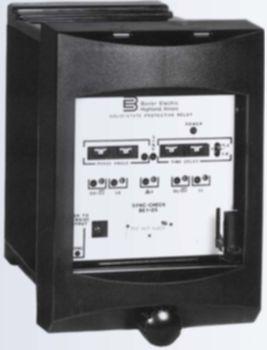
When the 25 relay allows a circuit breaker to close, the sync output contact of the 25 relay opens 8 ms (1/2 cycle) after the circuit breaker closes ("b" contact state change). Therefore, on loss of synchronism between the power grid and the generator caused by a circuit breaker being opened, the 25 sync output contact is already open, blocking an AURORA close attempt until the 25 relay settings are met, including user-settable time delay. Most singlefunction, microprocessor based 25 relays are available with voltage inputs that provide delta voltage intelligence to the relay for blocking circuit breaker close when the voltage difference between the two sources representing the grid and generator is out of limits.
In addition, these relays monitor the slip rate of the generator, ensuring that breaker closure cannot occur unless the generator phase angle relative to the grid is within a preset angle window for a specified amount of time. Figure 6 offers an integrated overview of a typical 25 relay.

There are low-cost, multifunction options that provide 25 backup for communicating multifunction applications. These relays, such as the one shown in Figure 7, have all voltage-based functions including the 25 element with delta voltage, delta angle, and slip frequency for fast and easy setup. This family of relays has communications capability, but it is not required in this application. Note that the 25 output from the noncommunicating multifunction product or the single-function relay is placed in series with the communicating multifunction product, providing a hack-proof 25 backup function.

Jerry Johnson is Application Engineering Supervisor for Basler Electric Company and is based in Richmond, Virginia. Prior to joining Basler in 1999, Jerry spent 29 years in the System Protection organization of Dominion VA Power, including 12 years as Director of System Protection Engineering. Jerry is a graduate of Virginia Commonwealth University and is a registered professional engineer in the State of Virginia. He is a senior member of IEEE, a member of the Power System Relaying Committee, a member of IEEE SCC21 Standards Coordinating Committee, and a member of the Texas A&M and Georgia Tech Planning Committees.
FIGURE 6 BY RALPH PATTERSON Power Products & Solutions
BY RALPH PATTERSON Power Products & Solutions



During May 22-May 25, 2011, the working groups of the Insulated Conductor Committee met in St. Petersburg Beach, Florida, for the Spring 2011 IEEE/ICC meeting.
This is an ongoing opportunity for the InterNational Electrical Testing Association to be recognized and offer a field testing perspective in the working groups as documents are developed. The working groups are set up of cable manufacturers, utilities, test equipment manufactures, and end users.
John Densley and Nigel Hampton are the chair and vice chair respectively. As new material becomes available additional changes and methodologies are incorporated in the IEEE specifications.
Group No

F01W
F03W
F04D

Group Name
Guide for Field Testing and Evaluation of Shielded Cables. IEEE 400 (Omnibus)
Guide for Field Testing of Shielded Power Cable Systems Using Very Low Frequency (VLF). (400 2-2004)
Guide for Partial Discharge Testing of Shielded Power Cable Systems in a Field Environment. (400 3 – 2006)
F05W Damped AC Voltage Testing (IEEE 400.4)

F10D
F11D

Diagnostic Testing for Cable Joints & Terminations
Constant Voltage AC Field Testing of Cable Systems

Activity Chairs
Latest draft was presented approved and submitted for ballot to the ICC Wen/Côté
Address Comments on Latest Draft Densley/Hayden
Review by Working Group with final revision scheduled to be presented Fall 2011 Levine/Walton
Review of Draft and Presentations Gulski/Patterson


Presentations on PD test and update to existing PD database for Working Group Orton/Boggs
Discuss scope of new project on HV AC voltage testing Fenger




The increasing number of joint failures in the past 15 years was an initial point to establish a working group in Germany to collect and share experiences of on-site PD measurements. More than 30 German utilities and several manufacturers of PD measuring equipment are members of the working group. The outcome of this work is a WEB database to collect in a clear structure the most important PD parameter of field measurements and the results of visual inspections of the located PD faults.



Electric utilities in the United States are currently utilizing over 4000 miles of high pressure, fluid filled, underground transmission lines. Most have been in service in excess of their 30 year life with some being in service as long as 60 years. The systems have proven to be robust with very few problems and have required little or no maintenance. Over the years the cables have increased in their importance as part of the backbone of the transmission systems. As the systems continue to age, new strategies need to be utilized to insure their ability to provide safe and reliable service.

Although PILC cable is often regarded as a mature cable technology, PILC Cable continues to represent a very significant proportion of the installed and network cable technologies. As a consequence, most utilities need to maintain and support them. Most of the repair/replace decisions are determined by the level of moisture within the paper oil insulation system as this drives many of the degradation mechanisms. The most common approach is the hot oil test; where samples of tapes are immersed in hot oil and the liberated moisture forms a foam.


Hydro-Quebec developed new testing technology and equipment for the detection of insulation leaks in recently installed secondary cables. More specifically, the new verification method consists of injecting pressurized aid into the cable core and then monitoring pressure variations within the cable. Prototypes were successfully tested on Hydro-Quebéc’s underground distribution system.

Duke Energy began to investigate the potential benefits of cable diagnostic testing through participation in the Cable Diagnostic Focused Initiative (CDFI). This initiative has provided system diagnostics that could improve service reliability and maximize the value of cable system replacement budgets. The testing involved in these programs included dielectric loss, monitored withstand, partial discharge and simple withstand approaches.


e Latest IEEE Standard Being Developed for Cable is the IEEE P400.4
Draft Guide for Field-Testing of Shielded Power Cable Systems Rated 5kV and Above with Damped Alternating Current Voltage (DAC)

DAC voltage testing is one of alternative methods of continuous ac voltage testing and is effective for a broad range of medium voltage, high voltage, and extra high voltage cable types. It provides a method for evaluating the insulation condition and helps to fill the need for more complete information on the cable system condition while minimizing or eliminating some potential adverse charging effects of the direct voltage high-potential test method. The guide addresses DAC voltage testing in the frequency range from 20 Hz to 500 Hz.

Assessing the Integrity and Increasing the
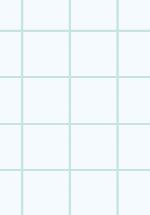
Ralph Patterson is President of Power Products and Solutions, located in Charlotte NC. His professional background includes working as a design engineer of transformers and as a specifying engineer of insulated conductors. He has more than 25 years in power engineering particularly in insulation diagnosis and evaluation of electrical distribution equipment. He serves on the NETA Standards Review Council, is the NETA liaison for the IEEE Insulated Conductor Committees working groups and received NETA’s 2001 Outstanding Achievement Award.








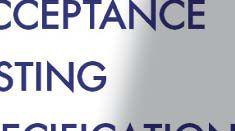

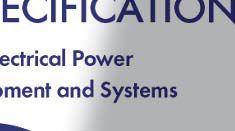
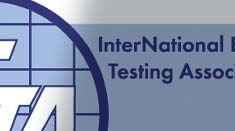




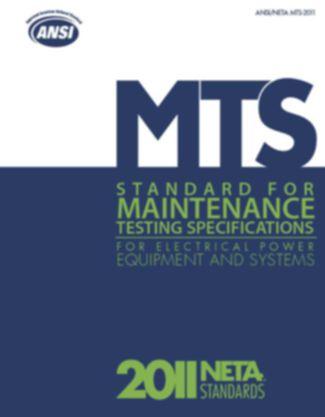

On May 16, 2011, NETA received notification that the ANSI/NETA Standard for Maintenance Testing Specifications for Electrical Power Equipment and Systems was approved as a revised American National Standard. This document contains specifications which cover the suggested field tests and inspections that are available to assess the suitability for continued service and reliability of electrical power distribution equipment and systems. The purpose of these specifications is to assure that tested electrical equipment and systems are operational and within applicable standards and manufacturer’s tolerances and that the equipment and systems are suitable for continued service. It is available in hard copy, PDF, and CD Rom formats. Order your copy today at www.netaworld.org.













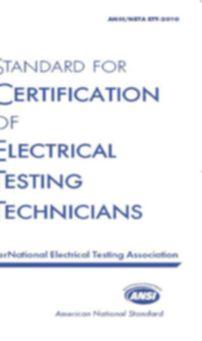







In keeping with NETA’s branding initiative, the covers of all three ANSI/NETA Standards have undergone revision and all future editions will reflect the new cover designs. If you have any questions about the ANSI/NETA Standards, including how to specify testing to the ANSI/ NETA Standards, please contact the NETA office at neta@netaworld.org or call 888-300-6382.

The ANSI/NETA Standard for Acceptance Testing Specifications for Electrical Power Equipment and System is scheduled to be published as a revised document in 2013. These specifications cover the suggested field tests and inspections that are available to assess the suitability for initial energization of electrical power equipment and systems. The purpose of these specifications is to assure that tested electrical equipment and systems are operational, are within applicable standards and manufacturer’s tolerances, and are installed in accordance with design specifications. Work on this document began in the spring of 2011. Once completed, this standard will carry the designation of ANSI/NETA ATS-2013.


The ANSI/NETA Standard for Certification of Electrical Testing Technicians was approved as an American National Standard on January 8, 2010. The document was originally approved as an ANSI standard in 2000. This standard establishes minimum requirements for qualifications, certification, training, and experience for the electrical testing technician. It also provides criteria for documenting qualifications and certification and details the minimum qualifications for an independent and impartial certifying body to certify electrical testing technicians.


Comments and suggestions are always welcome on any of the standards and should be directed to the NETA office at neta@netaworld.org or 888-300-6382. To learn more about the NETA standards review and revision process, purchase these standards, or to get involved, please visit www.netaworld.org or call 888-300-6382.





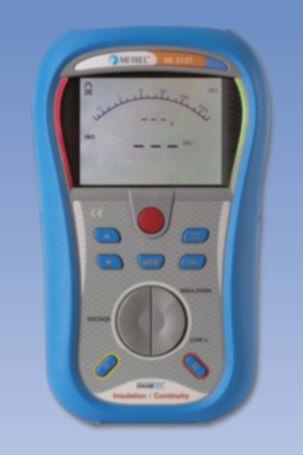
/ Continuity


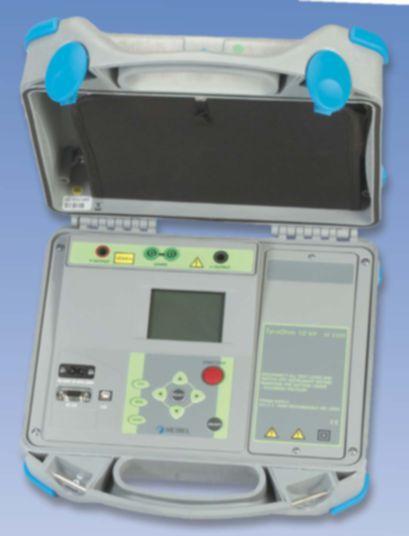




Metrel offers a wide variety of Single, and Multi-Function testers for measuring Insulation Resistance up to 10kV, Earth Resistance, Line Tracers, Continuity, Loop and Line Impedance, and Phase Rotation.




Technical demands require high performance measuring instruments capable of measuring polarization index (PI), dielectric absorption ratio (DAR), dielectric discharge (DD), time programmable step voltage test, insulation system's capacitance, etc. Metrel offers a line of 1kV, 5kV, and 10kV insulation resistance meters for these tests.
Metrel power quality analyzers are proven tools for expert designers of filtering systems, power correction equipment, over voltage protection and UPS systems. Wide range of testing possibilities are supported: voltage sags and swells, resonant states, high neutral conductor currents in 3-phase systems, asymmetry, transients, etc.
 MI 3121 SMARTEC Insulation
MI 3121 SMARTEC Insulation



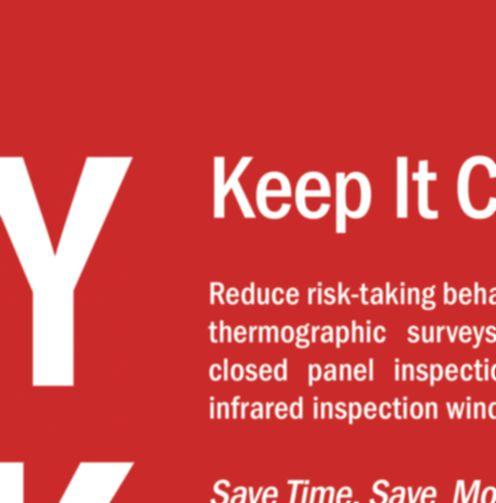

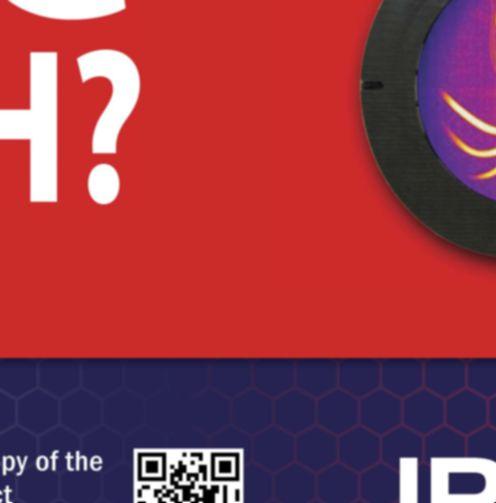














In 2012 NETA celebrates 40 years of service to the electrical systems industry – Establishing industry standards and delivering leading-edge technical information and educational resources based on real-world experience.








NETA was founded with the goal of advancing the industry’s focus on safety and reliability. The Association’s contribution is fullfilled through the development of the ANSI/NETA Standards and the creation of educational and training resources that include the NETA Self-Paced Technical Seminars, the annual PowerTest conferences, the quarterly NETA World Journal, as well as a 14 volume series of NETA Handbooks.
Accredited Companies, and NETA’s technical community seeking a comprehensive, subjectspecific technical resource to use for training and reference materials.
All NETA technical materials, publications, and events are authored by industry experts – leadingedge, highly knowledgeable individuals who have many years of experience in the field. NETA is extremely grateful for their contributions.



The NETA Handbooks were first released as a series in 2009. They are a go-to source for highly relevant information about testing procedures, troubleshooting, and real-life solutions to situations encountered everyday in the field. The Handbooks were initially created in response to requests from the electrical industry, the general public, NETA
The NETA Handbooks bring together a collection of over 200 of the very best articles from past issues of NETA World Journal and the most well- received technical presentations from past PowerTest events.












































A&F Electrical Testing, Inc.
80 Lake Ave. South, Ste. 10 Nesconset, NY 11767 (631) 584-5625 Fax: (631) 584-5720 kchilton@afelectricaltesting.com www.afelectricaltesting.com
Kevin Chilton
A&F Electrical Testing, Inc.
80 Broad St. 5th Floor New York, NY 10004 (631) 584-5625 Fax: (631) 584-5720 afelectricaltesting@afelectricaltesting.com www.afelectricaltesting.com
Florence Chilton
Advanced Testing Systems 15 Trowbridge Dr. Bethel, CT 06801 (203) 743-2001 Fax: (203) 743-2325 pmaccarthy@advtest.com www.advtest.com
Pat MacCarthy
American Electrical Testing Co., Inc. 480 Neponset St., Building 3 Canton, MA 02021-1970 (781) 821-0121 Fax: (781) 821-0771 sblizard@aetco.us www.99aetco.com
Scott A. Blizard
American Electrical Testing Co., Inc. 34 Clover Dr. South Windsor, CT 06074 (860) 648-1013 Fax: (781) 821-0771 jpoulin@aetco.us www.99aetco.com
Gerald Poulin
American Electrical Testing Co., Inc. 76 Cain Dr. Brentwood, NY 11717 (631) 630-2260 Fax: (631) 630-2292 mschacker@aetco.us www.99aetco.com
Michael Schacker
American Electrical Testing Co., Inc. 50 Intervale Rd., Ste. 1 Boonton, NJ 7005 (973) 316-1180 Fax: (781) 316-1181 trosato@aetco.us www.99aetco.com
Anthony Rosato
American Electrical Testing Co., Inc. 1811 Executive Dr., Ste. M Indianapolis, IN 46241 (317) 487-2111 Fax: (781) 821-0771 rramsey@99aetco.us www.99aetco.com
Rick Ramsey
American Electrical Testing Co., Inc. Green Hills Commerce Center 5925 Tilghman St., Ste. 200 Allentown, PA 18104 (215) 219-6800 jmunley@aetco.us www.99aetco.us
Jonathan Munley
American Electrical Testing Co., Inc. 1672 SE 80th Bella Vista Dr. The Villages, FL 32162 (727) 447-4503 Fax: (727) 447-4984 rhoffman@aetco.us www.99aetco.com
Bob Hoffman
Apparatus Testing and Engineering 11300 Sanders Dr., Ste. 29 Rancho Cordova, CA 95742 (916) 853-6280 Fax: (916) 853-6258 jlawler@apparatustesting.com www.apparatustesting.com
James Lawler
Apparatus Testing and Engineering 7083 Commerce Circle, Ste. H Pleasanton, CA 94588 (925) 454-1363 Fax: (925) 454-1499 info@apparatustesting.com www.apparatustesting.com
Harold (Jerry) Carr
Applied Engineering Concepts 1105 N. Allen Ave. Pasadena, CA 91104 (626) 398-3052 Fax: (626) 398-3053 michel.c@aec-us.com www.aec-us.com
Michel Castonguay
Burlington Electrical Testing Co., Inc. 300 Cedar Ave. Croydon, PA 19021-6051 (215) 826-9400 (221) Fax: (215) 826-0964 waltc@betest.com www.betest.com
Walter P. Cleary
C.E. Testing, Inc.
6148 Tim Crews Rd. Macclenny, FL 32063 (904) 653-1900 Fax: (904) 653-1911 cetesting@aol.com
Mark Chapman
CE Power Solutions, LLC
4500 W. Mitchell Ave. Cincinnati, OH 45232 (513) 563-6150 Fax: (513) 563-6120 info@cepowersol.com
Mark McCloy
CE Power Solutions of Wisconsin, LLC
3255 W. Highview Dr. Appleton, WI 54914 (920) 968-0281 Fax: (920) 968-0282 jimvh@cepowersol.com
James Van Handel
DYMAX Holdings, Inc.
4751 Mustang Circle St. Paul, MN 55112 (763) 717-3150 Fax: (763) 784-5397 gphilipp@dymaxservice.com www.dymaxservice.com
Gene Philipp
High Voltage Service, Inc.
4751 Mustang Circle St. Paul, MN 55112 (763) 717-3103 Fax: (763) 784-5397 www.hvserviceinc.com
Mike Mavetz
DYMAX Service Inc.
23426 Industrial Park Ct. Farmington Hills, MI 48335-2854 (248) 477-6066 Fax: (248) 477-6069 www.dymaxservice.com
Bruce Robinson
DYMAX Service Inc. 4213 Kropf Ave. Canton, OH 44706 (330) 484-6801 Fax: (740) 333-1271 www.dymaxservice.com
Gary Swank
Eastern High Voltage 11A South Gold Dr. Robbinsville, NJ 08691-1606 (609) 890-8300 Fax: (609) 588-8090 www.easternhighvoltage.com
Joseph Wilson
ELECT, P.C.
7400-G Siemens Rd., P.O. Box 2080 Wendell, NC 27591 (919) 365-9775 Fax: (919) 365-9789
btyndall@elect-pc.com www.elect-pc.com
Barry W. Tyndall
Electric Power Systems, Inc. 21 Millpark Ct. Maryland Heights, MO 63043-3536 (314) 890-9999 Fax: (314) 890-9998 cfr@eps-international.com www.eps-international.com
Steve Reed
Electric Power Systems, Inc. 557 E. Juanita Avenue, #4 Mesa, AZ 85204 (480) 633-1490 Fax: (480) 633-7092 www.eps-international.com
Louis G. Gilbert
Electric Power Systems, Inc. 4436 Parkway Commerce Blvd. Orlando, FL 32808 (407) 578-6424 Fax: 407-578-6408 www.eps-international.com
Doug Pacey
Electric Power Systems, Inc. 6753 E. 47th Avenue Dr., Unit D Denver, CO 80216 (720) 857-7273 Fax: 303-928-8020 www.eps-international.com
Thomas C. Reed
Electric Power Systems, Inc. 23823 Andrew Rd. Plainfield, IL 60585 (815) 577-9515 Fax: (815) 577-9516 www.eps-international.com
George Bratkiv
Electric Power Systems, Inc. 2601 Center Rd., # 101 Hinckley, OH 44233 (330) 460-3706 Fax: (330) 460-3708 www.eps-international.com
Garth Paul
Electric Power Systems, Inc. 1129 East Hwy 30 Gonzalez, LA 70737 (225) 644-0150 Fax: (225) 644-6249 www.eps-international.com
C.J. Theriot
Electric Power Systems, Inc.
827 Union St. Salem, VA 24153 (540) 375-0084 Fax: (540) 375-0094
virginia@eps-international.com www.eps-international.com
Bruce Eppers
Electric Power Systems, Inc. 915 Holt Ave., Unit 9 Manchester, NH 3109 (603) 657-7371 Fax: 603-657-7370 www.eps-international.com
Cindy Taylor
Electric Power Systems, Inc.
146 Space Park Dr. Nashville, TN 37211 (615) 834-0999 Fax: (615) 834-0129 www.eps-international.com
Larry Christodoulou
Electric Power Systems, Inc.
1090 Montour West Industrial Blvd. Coraopolis, PA 15108 (412) 276-4559 www.eps-international.com
Ed Nahm
Electric Power Systems, Inc. 6141 Connecticut Ave. Kansas City, MO 64120 (816) 241-9990 Fax: (816) 241-9992 www.eps-international.com
Joe Dillon
EPS Technology
29 N Plains Hwy., Ste. 12 Wallingford, CT 6492 (203) 649-0145 www.eps-technology.com
Chris Myers
Electrical & Electronic Controls 6149 Hunter Rd. Ooltewah, TN 37363 (423) 344-7666 (23) Fax: (423) 344-4494 eecontrols@comcast.net
Michael Hughes
Electrical Energy Experts, Inc. W129N10818, Washington Dr. Germantown, WI 53022 (262) 255-5222 Fax: (262) 242-2360 bill@electricalenergyexperts.com www.electricalenergyexperts.com
William Styer
Electrical Equipment Upgrading, Inc. 21 Telfair Place Savannah, GA 31415 (912) 232-7402 Fax: (912) 233-4355 kmiller@eeu-inc.com www.eeu-inc.com
Kevin Miller
Electrical Maintenance & Testing Inc.
7301 N. Georgetown Rd., Ste. 212 Indianapolis, IN 46268 (317) 471-8600 Fax: (317) 471-8605 www.emtesting.com
Brian K. Borst
Electrical Reliability Services
1057 Doniphan Park Circle, Ste. A El Paso, TX 79922 (915) 587-9440 Fax: (915) 587-9010 www.electricalreliability.com
Electrical Reliability Services
1775 W. University Dr., Ste. 128 Tempe, AZ 85281 (480) 966-4568 Fax: (480) 966-4569 www.electricalreliability.com
Electrical Reliability Services
1455 East Sam Houston Parkway S. Ste. 190 Pasadena, TX 77503 (281) 241-2800 Fax: (281) 241-2801 www.electricalreliability.com
Electrical Reliability Services
4099 SE International Way, Ste. 201 Milwaukie, OR 97222-8853 (503) 653-6781 Fax: (503) 659-9733 www.electricalreliability.com
Electrical Reliability Services
5810 Van Allen Way Carlsbad, CA 92008 (760) 804-2972 www.electricalreliability.com
Electrical Reliability Services
8500 Washington St. NE, Ste. A-6 Albuquerque, NM 87113 (505) 822-0237 Fax: (505) 822-0217 www.electricalreliability.com
Electrical Reliability Services
1380 Greg Street, Ste. 217 Sparks, NV 89431 (775) 746-8484 Fax: (775) 356-5488 www.electricalreliability.com
Electrical Reliability Services
2275 Northwest Parkway SE, Ste. 180 Marietta, GA 30067 (770) 541-6600 Fax: (770) 541-6501 www.electricalreliability.com
Electrical Reliability Services 7100 Broadway, Ste. 7E Denver, CO 80221-2915 (303) 427-8809 Fax: (303) 427-4080 www.electricalreliability.com
Electrical Reliability Services
348 N.W. Capital Dr. Lees Summit, MO 64086 (816) 525-7156 Fax: (816) 524-3274 www.electricalreliability.com
Electrical Reliability Services 6900 Koll Center Parkway, Suite 415 Pleasanton, CA 94566 (925) 485-3400 Fax: (925) 485-3436 www.electricalreliability.com
Electrical Reliability Services 10606 Bloomfield Ave. Santa Fe Springs, CA 90670 (562) 236-9555 Fax: (562) 777-8914 www.electricalreliability.com
Electrical Reliability Services 14141 Airline Hwy, Bldg. 1, Ste. X Baton Rouge, LA 70817 (225) 755-0530 Fax: (225) 751-5055 www.electricalreliability.com
Electrical Reliability Services 121 E. Hwy. 108 Sulphur, LA 70665 (337) 583-2411 Fax: (337) 583-2410 www.electricalreliability.com
Electrical Reliability Services 5580 Enterprice Parkway Ft. Myers, FL 33905-5507 (239) 693-7100 Fax: (239) 693-7772 www.electricalreliability.com
Electrical Reliability Services 2222 West Valley Hwy. N., Ste 160 Auburn, WA 98001 (253) 736-6010 Fax: (253) 736-6015 www.electricalreliability.com
Electrical Reliability Services 3412 South 1400 West, Unit A West Valley City, UT 84119 (801) 975-6461 www.electricalreliability.com
Electrical Reliability Services 6351 Hinson St., Ste. B Las Vegas, NV 89118 (702) 597-0020 Fax: (702) 597-0095 www.electricalreliability.com
Electrical Reliability Services 610 Executive Campus Dr. Westerville, OH 43082 (877) 468-6384 Fax: (614) 410-8420 info@electricalreliability.com www.electricalreliability.com
Elemco Services, Inc. 228 Merrick Rd. Lynbrook, NY 11563 (631) 589-6343 Fax: (631) 589-6670 BobW@elemco.com www.elemco.com
Robert J. White
Hampton Tedder Technical Services 4571 State St. Montclair, CA 91763 (909) 628-1256 x214 Fax: (909) 628-6375 matt.tedder@hamptontedder.com www.hamptontedder.com
Matt Tedder
Hampton Tedder Technical Services 4920 Alto Ave. Las Vegas, NV 89115 (702) 452-9200 Fax: (702) 453-5412 www.hamptontedder.com
Roger Cates
Hampton Tedder Technical Services 3747 West Roanoke Ave. Phoenix, AZ 85009 (480) 967-7765 Fax: (480) 967-7762 www.hamptontedder.com
Harford Electrical Testing Co., Inc. 1108 Clayton Rd. Joppa, MD 21085 (410) 679-4477 Fax: (410) 679-0800 harfordtesting@aol.com
Vincent Biondino
High Energy Electrical Testing, Inc. 2119 Orien Rd. Toms River, NJ 08755-1366 (732) 286-4088 Fax: (732) 286-4086 hinrg@comcast.net www.highenergyelectric.com
James P. Ratshin
High Voltage Maintenance Corp.
24 Walpole Park South Dr. Walpole, MA 02081 (508) 668-9205
www.hvmcorp.com
High Voltage Maintenance Corp.
7200 Industrial Park Blvd. Mentor, OH 44060 (440) 951-2706 Fax: (440) 951-6798
www.hvmcorp.com
High Voltage Maintenance Corp.
3000 S. Calhoun Rd. New Berlin, WI 53151 (262) 784-3660 Fax: (262) 784-5124
www.hvmcorp.com
High Voltage Maintenance Corp.
8320 Brookville Rd. #E Indianapolis, IN 46239 (317) 322-2055 Fax: (317) 322-2056 www.hvmcorp.com
High Voltage Maintenance Corp.
1250 Broadway, Ste. 2300 New York, NY 10001 (718) 239-0359 www.hvmcorp.com
High Voltage Maintenance Corp.
355 Vista Park Dr. Pittsburgh, PA 15205-1206 (412) 747-0550 Fax: (412) 747-0554 www.hvmcorp.com
High Voltage Maintenance Corp.
150 North Plains Industrial Rd. Wallingford, CT 6492 (203) 949-2650 Fax: (203) 949-2646 www.hvmcorp.com
High Voltage Maintenance Corp. 9305 Gerwig Ln., Ste. B Columbia, MD 21046 (410) 309-5970 Fax: (410) 309-0220 www.hvmcorp.com
High Voltage Maintenance Corp. 1455 Jamike Dr., Ste. 5 Erlanger, KY 41018 (859) 371-5355 Fax: (859) 371-5399 www.hvmcorp.com
High Voltage Maintenance Corp. 24371 Catherine Industrial Dr. Ste. 207 Novi, MI 48375 (248) 305-5596 Fax: (248) 305-5579 www.hvmcorp.com
High Voltage Maintenance Corp. 5100 Energy Dr. Dayton, OH 45414 (937) 278-0811 Fax: (937) 278-7791 www.hvmcorp.com
HMT, Inc. 6268 Route 31 Cicero, NY 13039 (315) 699-5563 Fax: (315) 699-5911 jpertgen@hmt-electric.com www.hmt-electric.com
John Pertgen
Industrial Electric Testing, Inc. 11321 West Distribution Ave. Jacksonville, FL 32256 (904) 260-8378 Fax: (904) 260-0737 gbenzenberg@bellsouth.net www.industrialelectrictesting.com
Gary Benzenberg
Industrial Electric Testing, Inc. 201 NW 1st Ave. Hallandale, FL 33009-4029 (954) 456-7020 www.industrialelectrictesting.com
Industrial Electronics Group P.O. Box 1870 850369 Highway 17 South Yulee, FL 32041 (904) 225-9529 Fax: (904) 225-0834 butch@industrialgroups.com www.industrialgroups.com
Butch E. Teal
Industrial Tests, Inc. 4021 Alvis Ct., Ste. 1 Rocklin, CA 95677 (916) 296-1200 Fax: (916) 632-0300 greg@indtests.com www.industrialtests.com
Greg Poole
Infra-Red Building and Power Service 152 Centre St. Holbrook, MA 02343-1011 (781) 767-0888 Fax: (781) 767-3462 tom.mcdonald@infraredbps.net www.infraredbps.com
Thomas McDonald Sr.
M&L Power Systems, Inc. 109 White Oak Ln., Ste. 82 Old Bridge, NJ 8857 (732) 679-1800 Fax: (732) 679-9326 dan@mlpower.com www.mlpower.com
Darshan Arora
Magna Electric Corporation 2361 Industrial Dr., Box 995 Regina, SK S4P 3B2 Canada (306) 949-8131 Fax: (306) 522-9181 kheid@magnaelectric.com www.magnaelectric.com
Kerry Heid
Magna Electric Corporation 3430 25th St. NE Calgary, AB T1Y 6C1 Canada (403) 769-9300 Fax: (403)769-9369 ppetrie@magnaelectric.com www.magnaelectric.com
Pat Petrie
Magna Electric Corporation 851-58th St. East Saskatoon, SK S7K 6X5 Canada (306) 955-8131 x 5 Fax: (306) 955-9181 www.magnaelectric.com
Luis Wilson
Magna Electric Corporation 1683 Church Ave. Winnipeg, MB R2X2Y7 Canada (204) 925-4022 Fax: (204) 925-4021 cbrandt@magnaelectric.com www.magnaelectric.com
Curtis Brandt
Magna IV Engineering 4103 - 97th St., N.W. Edmonton, AB T6E 6E9 Canada (780) 462-3111 Fax: (780) 462-9799 jwentzell@magnaiv.com www.magnaiv.com Jereme Wentzell
Magna IV Engineering Unit 10, 10672- 46 St. S.E. Calgary, AB T2C 1G1 Canada (403) 723-0575 Fax: (403) 723-0580 info.calgary@magnaiv.com
Jereme Wentzell
Magna IV Engineering 8219D Fraser Ave. Fort McMurray, AB T9H 0A2 Canada (780) 791-3122 Fax: (780) 791-3159 info.fmcmurray@magnaiv.com Jereme Wentzell
Magna IV Engineering
96 Inverness Dr. East, Unit R Englewood, CO 80112 (303) 799-1273 Fax: (303) 790-4816 info.denver@magnaiv.com Jereme Wentzell
Magna IV Engineering
Oficina 1407 Torre Norte 481 Nueva Tajamar Las Condes, Region Metropolitana 7550099 Chile +(56) 9-9-517-4642 info.chile@magnaiv.com
Jereme Wentzell
Magna IV Engineering 1040 Winnipeg St. Regina , SK S4R 1J5 Canada (306) 504-6501 Fax: (306) 729-4897 info.regina@magnaiv.com Jereme Wentzell
Magna IV Engineering (BC) Ltd. #110, 2071 Kingsway Ave. Port Coquitlam, BC V3C 1T2 Canada (604) 944-6697 Fax: (604) 944-1271 chite@magnaiv.ca www.magnaiv.ca
Cameron Hite
MET Electrical Testing LLC
3602 East Southern Ave., Ste. 1 & 2 Phoenix, AZ 85040 (602) 796-6583 Fax: www.met-test.com
Mike Ferguson
MET Electrical Testing LLC 6280 South Valley View Blvd., Ste. 618 Las Vegas, NV 89118 (702) 216-0982 Fax: (702) 216-0983 www.met-test.com
Terry Travelstead
MET Electrical Testing LLC 814 Greenbrier Circle, Ste. E Chesapeake, VA 23320 (757) 548-5690 Fax: (757) 548-5417 www.met-test.com
Mark Anthony Gaughan, III
MET Electrical Testing LLC
3700 Commerce Dr. #901-903 Baltimore, MD 21227 (410) 247-3300 Fax: (410) 247-0900 www.met-test.com
Bill Hartman
MET Electrical Testing LLC
710 Thomson Park Dr. Cranberry Township, PA 16066-6427 (724) 772-4638 Fax: (724) 772-6003 william.mckenzie@met.lincfs.com www.met-test.com
William (Pete) McKenzie
Carolina Electrical Testing Co. 5805 G Departure Dr. Raleigh, NC 27616 (919) 877-1008 Fax: (919) 501-7492 www.met-test.com
Mark Robinson
Substation Test Co.
4390 Parliament Place, Ste. Q Lanham, MD 20706 (301) 967-3500 Fax: (301) 735-8953 www.met-test.com
Frank Ceci
National Field Services
649 Franklin St. Lewisville, TX 75057 (972) 420-0157 www.natlfield.com
Eric Beckman
Nationwide Electrical Testing, Inc.
6050 Southard Trace Cumming, GA 30040 (770) 667-1875 Fax: (770) 667-6578 Shashi@N-E-T-Inc.com www.n-e-t-inc.com
Shashikant B. Bagle
North Central Electric, Inc. 69 Midway Ave. Hulmeville, PA 19047-5827 (215) 945-7632 Fax: (215) 945-6362 ncetest@aol.com
Robert Messina
Northern Electrical Testing, Inc. 1991 Woodslee Dr. Troy, MI 48083-2236 (248) 689-8980 Fax: (248) 689-3418 ldetterman@northerntesting.com www.northerntesting.com
Lyle Detterman
Orbis Engineering Field Services Ltd. #300, 9404 - 41st Ave. Edmonton, AB T6E 6G8 Canada (780) 988-1455 Fax: (780) 988-0191 lorne@orbisengineering.net www.orbisengineering.net
Lorne Gara
Pacific Power Testing, Inc. 14280 Doolittle Dr. San Leandro, CA 94577 (510) 351-8811 Fax: (510) 351-6655 steve@pacificpowertesting.com www.pacificpowertesting.com
Steve Emmert
Phasor Engineering
Sabaneta Industrial Park #216 Mercedita, PR 715 Puerto Rico (787) 844-9366 Fax: (787) 841-6385 rcastro@phasorinc.com
Rafael Castro
Potomac Testing, Inc. 1610 Professional Blvd., Ste. A Crofton, MD 21114 (301) 352-1930 Fax: (301) 352-1936 kbassett@potomactesting.com www.potomactesting.com
Ken Bassett
Potomac Testing, Inc. 704 Main St., Ste. 104 Windber, PA 15963 (814) 509-6156 Fax: (301) 352-1930 pti@potomactesting.com www.potomactesting.com
Potomac Testing, Inc.
11179 Hopson Rd., Ste. 5 Ashland, VA 23005 (804) 798-7334 Fax: (804) 798-7456 www.potomactesting.com
Power & Generation Testing, Inc. 480 Cave Rd. Nashville, TN 37210 (615) 882-9455 Fax: (615) 882-9591 mose@pgti.net www.pgti.net
Mose Ramieh
Power Engineering Services, Inc. 9179 Shadow Creek Lane Converse, TX 78109 (210) 590-4936 Fax: (210) 590-6214 engelke@pe-svcs.com www.pe-svcs.com
Miles R. Engelke
POWER PLUS Engineering, Inc. 46575 Magallan Dr. Novi, MI 48377 (248) 344-0200 Fax: (248) 305-9105 smancuso@epowerplus.com www.epowerplus.com
Salvatore Mancuso
Power Products & Solutions, Inc. 12465 Grey Commercial Rd. Midland, NC 28107 (704) 573-0420 x12 Fax: (704) 573-3693 ralph.patterson@powerproducts.biz www.powerproducts.biz
Ralph Patterson
Power Products & Solutions, Inc. 13 Jenkins Ct. Mauldin, SC 29662 Fax: (800) 328-7382 ralph.patterson@powerproducts.biz www.powerproducts.biz
Raymond Pesaturo
Power Services, LLC P.O. Box 750066, 998 Dimco Way Centerville, OH 45475 (937) 439-9660 Fax: (937) 439-9611 jbydash@att.net
Gerald Bydash
Power Solutions Group, Ltd. 2001 Commerce Dr. Sidney, OH 45365 (937) 497-2025 Fax: (937) 492-3911 www.powersolutionsgroup.com
Barry Willoughby
Power Systems Testing Co. 4688 W. Jennifer Ave., Ste. 108 Fresno, CA 93722 (559) 275-2171 ext 15 Fax: (559) 275-6556 dave@pstcpower.com www.powersystemstesting.com
David Huffman
Power Systems Testing Co. 600 S Grand Ave., Ste. 113 Santa Ana, CA 92705-4152 (714) 542-6089 Fax: (714) 542-0737 www.powersystemstesting.com
Power Systems Testing Co. 2267 Claremont Ct. Hayward, CA 94545-5001 (510) 783-5096 Fax: (510) 732-9287 www.powersystemstesting.com
Power Test, Inc. 2200 Highway 49 Harrisburg, NC 28075 (704) 200-8311 Fax: (704) 455-7909 rich@powertestinc.com www.powertestinc.com
Richard Walker
POWER Testing and Energization, Inc. 14006 NW 3rd Ct., Ste. 101 Vancouver, WA 98685 (360) 576-4826 Fax: (360) 576-7182 chris.zavadlov@powerte.com www.powerte.com
Chris Zavadlov
POWER Testing and Energization, Inc. 731 E. Ball Rd., Ste. 100 Anaheim, CA 92805 (714) 507-2702 http://www.powerte.com
POWER Testing and Energization, Inc. 22035 70th Ave. South Kent, WA 98032 (253) 872-7747 www.powerte.com
Powertech Services, Inc. 4095 South Dye Rd. Swartz Creek, MI 48473-1570 (810) 720-2280 Fax: (810) 720-2283 jbrown@powertechservices.com www.powertechservices.com
Jean A. Brown
Precision Testing Group 18590 Wedemeyer Rd. Kiowa, CO 80117 (303) 621-2776 Fax: (303) 621-2573 glenn@precisiontestinggroup.com
Glenn Stuckey
PRIT Service, Inc. 112 Industrial Dr., P.O. Box 606 Minooka, IL 60447 (815) 467-5577 Fax: (815) 467-5883
Rod.Hageman@pritserviceinc.com www.pritserviceinc.com
Rod Hageman
Reuter & Hanney, Inc. 149 Railroad Dr. Northampton Industrial Park Ivyland, PA 18974 (215) 364-5333 Fax: (215) 364-5365 mikereuter@reuterhanney.com www.reuterhanney.com
Michael Reuter
Reuter & Hanney, Inc. 4270-I Henninger Ct. Chantilly, VA 20151 (703) 263-7163 Fax: 703-263-1478 www.reuterhanney.com
Reuter & Hanney, Inc.
1371 Brass Mill Rd., Unit E Belcamp, MD 21017 (410) 297-9566 Fax: (410) 297-9984 www.reuterhanney.com
Michael Jester
REV Engineering, LTD 3236 - 50 Ave. SE Calgary, AB T2B 3A3 Canada (403) 287-0156 Fax: (403) 287-0198 rdavidson@reveng.ca www.magnaivengineering.com
Roland Nicholas Davidson, IV
Scott Testing Inc. 1698 5th St. Ewing, NJ 8638 (609) 882-2400 Fax: (609) 882-5660 rsorbello@scotttesting.com www.scotttesting.com
Russ Sorbello
Shermco Industries 2425 E. Pioneer Dr. Irving, TX 75061 (972) 793-5523 Fax: (972) 793-5542 rwidup@shermco.com www.shermco.com
Ron Widup
Shermco Industries 1705 Hur Industrial Blvd. Cedar Park, TX 78613 (512) 259-3060 Fax: (512) 258-5571 kewing@shermco.com www.shermco.com
Kevin Ewing
Coastal Switchgear & Controls
A Shermco Industries Company 33002 FM 2004 Angleton, TX 77515 (979) 848-1406 Fax: (979) 848-0012 mfrederick@shermco.com www.shermco.com Malcom Frederick
Shermco Industries
1357 N 108th E. Ave. Tulsa, OK 74116 (918) 234-2300
jharrison@shermco.com www.shermco.com
Jim Harrison
Shermco Industries
777 10th St. Marion, IA 52302 (319) 377-3377 Fax: (319) 377-3399 Lhamrick@shermco.com www.shermco.com
Lynn Hamrick
Shermco Industries 2100 Dixon St., Ste. C Des Moines, IA 50316 Fax: (515) 263-8482 sales@theescogroup.com www.escoenergyservice.com
Lynn Hamrick
Shermco Industries
Boulevard Saint-Michel 47 1040 Brussels Brussels, Belgium
+32 (0)2 400 00 54 Fax: +32 (0)2 400 00 32 cperry@shermco.com www.shermco.com
Chris Perry
Sigma Six Solutions, Inc. 2200 West Valley Hwy., Ste. 100 Auburn, WA 98001 (253) 333-9730 Fax: (253) 859-5382 jwhite@sigmasixinc.com www.sigmasixinc.com
John White
Sigma Six Solutions, Inc. 1004 Wurzbach Rd., #226 San Antonio, TX 78230 info@sigmasixinc.com www.sigmasixinc.com
Southern New England Electrical Testing, LLC
3 Buel St., Unit 2 Wallingford, CT 6492 (203) 269-8778 Fax: (203) 269-8775 dave.asplund@sneet.org www.sneet.org
David Asplund, Sr.
Southwest Energy Systems, LLC 2231 East Jones Ave., Ste. A Phoenix, AZ 85040 (602) 438-7500 Fax: (602) 438-7501 bob.sheppard@southwestenergysystems.com www.southwestenergysystems.com
Robert Sheppard
Taurus Power & Controls, Inc. 9999 SW Avery St. Tualatin, OR 97062-9517 (503) 692-9004 Fax: (503) 692-9273 robtaurus@tauruspower.com www.tauruspower.com
Rob Bulfinch
Taurus Power & Controls, Inc. 6617 S. 193rd Place , Ste. P104 Kent, WA 98032 (425) 656-4170 Fax: (425) 656-4172 jiml@tauruspower.com www.taruspower.com
Jim Lightner
Three-C Electrical Co., Inc. 190 Pleasant St. Ashland, MA 1721 (508) 881-3911 Fax: (508) 881-4814 jim@three-c.com www.three-c.com
Jim Cialdea
Three-C Electrical Co., Inc. 79 Leighton Rd., Ste. 9 Augusta, ME 4330 (800) 649-6314 Fax: (207) 782-0162 jim@three-c.com www.three-c.com
Jim Cialdea
Tidal Power Services, LLC 4202 Chance Lane Rosharon, TX 77583 (281) 710-9150 Fax: (713) 583-1216 monty.janak@tidalpowerservices.com www.tidalpowerservices.com
Monty C. Janak
Tony Demaria Electric, Inc. 131 West F St. Wilmington, CA 90744 (310) 816-3130 x 111 Fax: (310) 549-9747 tde@tdeinc.com www.tdeinc.com
Anthony Demaria
Trace Electrical Services & Testing, LLC
293 Whitehead Rd. Hamilton, NJ 8619 (609) 588-8666 Fax: (609) 588-8667 jvasta@tracetesting.com www.tracetesting.com
Joseph Vasta
Utilities Instrumentation Service, Inc. PO Box 981123 Ypsilanti, MI 48198-1123 (734) 482-1450 (14) Fax: (734) 482-0035 GEWalls@UISCorp.com www.uiscorp.com
Gary E. Walls
Utility Service Corporation 4614 Commercial Dr. NW Huntsville, AL 35816-2201 (256) 837-8400 Fax: (256) 837-8403 apeterson@utilserv.com www.utilserv.com
Alan D. Peterson
Western Electrical Services 14311 29th St. East Sumner , WA 98390 (253) 891-1995 Fax: (253) 891-1511 dhook@westernelectricalservices.com www.westernelectricalservices.com
Daniel Hook
Western Electrical Services 5680 South 32nd St. Phoenix, AZ 85040 (253) 891-1995 dhook@westernelectricalservices.com www.westernelectricalservices.com
Daniel Hook

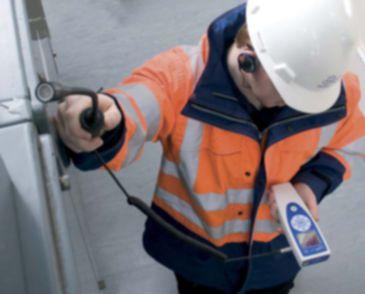



The world’s best-selling handheld Partial Discharge (PD) Investigation Tool
• Safely detect and measure PD activity in LIVE mv pLAnt
• Find and fix faults fast, before they lead to FAILURES & OUTAGES
READY TO USE - ALL IN ONE RUGGED BOX
KIT INCLUDES: Dual sensor UltraTEV Plus+™ (ultrasonic/TEV), neckband headset, flexible extension microphone, laser-sighted directional microphone, additional ultrasonic contact probe, function checker & battery charger.

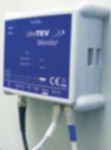
Eastern US Regional Office
1001 East Baker Street, Suite 200 Plant City, FL 33563
don.genutis@eatechnologyusa.com Cell. 863-393-2451 Office. 813-752-6051
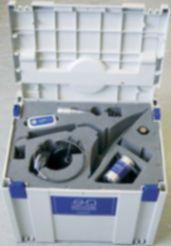
And check out our other great PD systems at www.eatechnologyusa.com:
UltraTEV Locator™ - pinpoints PD activity to within 12”, then measures and records it for analysis. Use for one-shot fault surveys or to collect condition data in detail.
UltraTEV Monitor™ - the COMPLETE system for monitoring PD activity over time in hundreds of assets simultaneously, including cables. Fully web-enabled.
Western US Regional Office 121 Elk Ridge Lane Idleyld Park, OR 97447
dustin.ashliegh@eatechnologyusa.com Cell. 541-530-0283 Office. 541-498-2226
www.eatechnologyusa.com
This issue’s advertisers are identified below. Please thank these advertises by telling them you saw their advertisement in YOUR magazine –NETA World.






ABB’s large installed base of breakers, transformers, and distribution equipment, coupled with our talent and technology, position us to reduce downtime, improve reliability, increase safety, and extend the life of your existing equipment. Our worldwide leadership and service excellence provide a variety of aftermarket solutions for nuclear and conventional applications. ABB offers quality aftermarket solutions including breaker technology upgrades, breaker refurbishment, protection devices, and safety upgrades. Contact us today to improve the safety and reliability of your existing distribution equipment. www.abb.us/mvservice
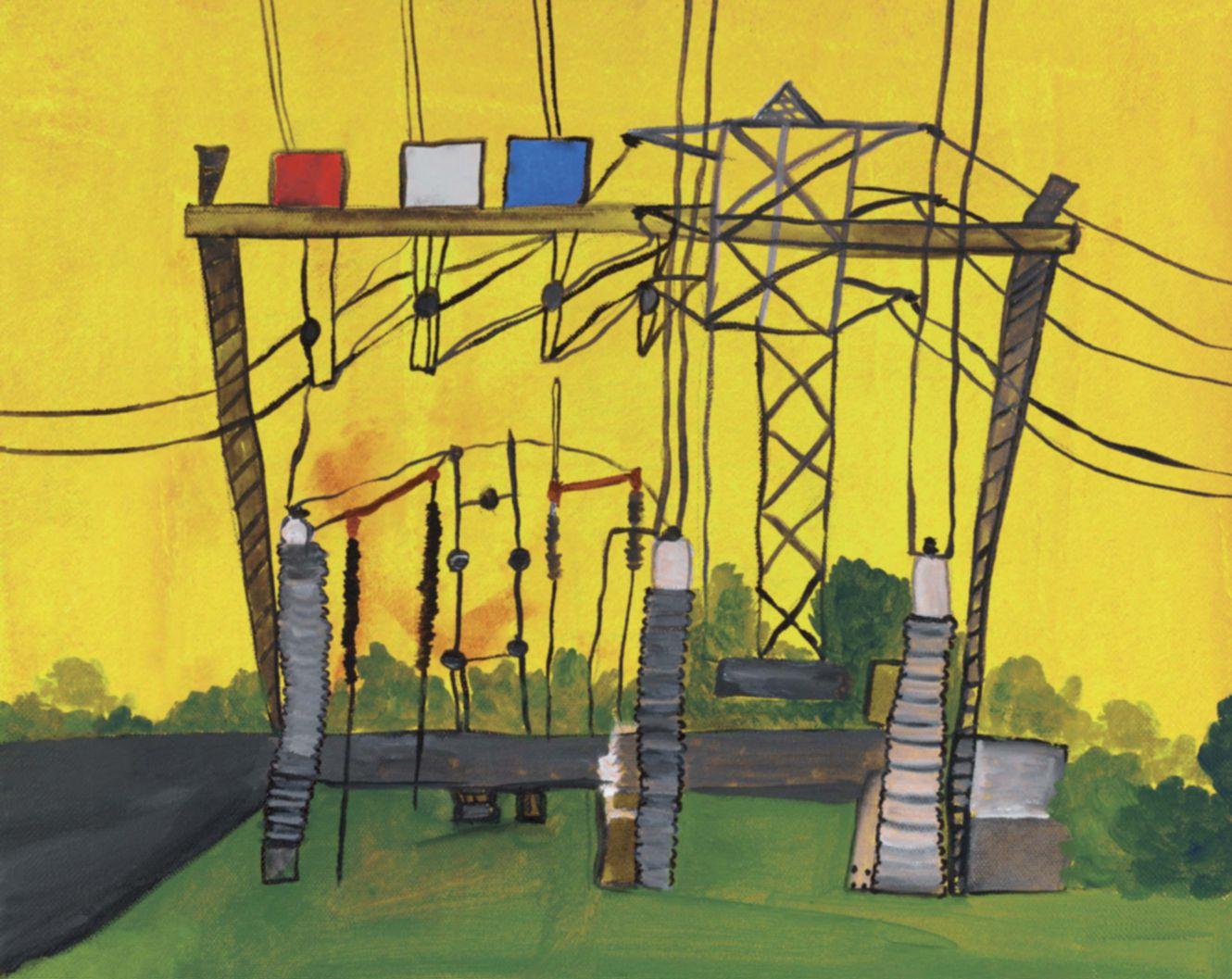



...and with the CT Analyzer and the new CT SB2 it’s all automated!
The new CT SB2 Switch Box has been designed for OMICRON’s CT Analyzer to enable automated testing of multi-ratio CTs with up to 6 taps
Dad especially likes the wiring check to ensure that the correct taps are connected. Afterwards no re-wiring is
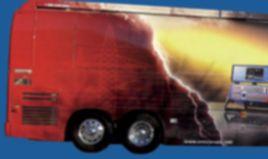
necessary. It´s ensured that no dangerous voltages are used. And the color-coding interface for the different taps with intelligent ratio entry allows Dad a quick and easy setup
My Dad can attach the CT SB2 to the CT Analyzer or place it separately along
side. With a combined weight of only 24 lbs / 11kg, the CT Analyzer together with the CT SB2 Switch Box is the most lightweight and automated testing solution for multi-ratio CTs.
Come and check it out for yourself on the OMICRON Roadshow Bus

